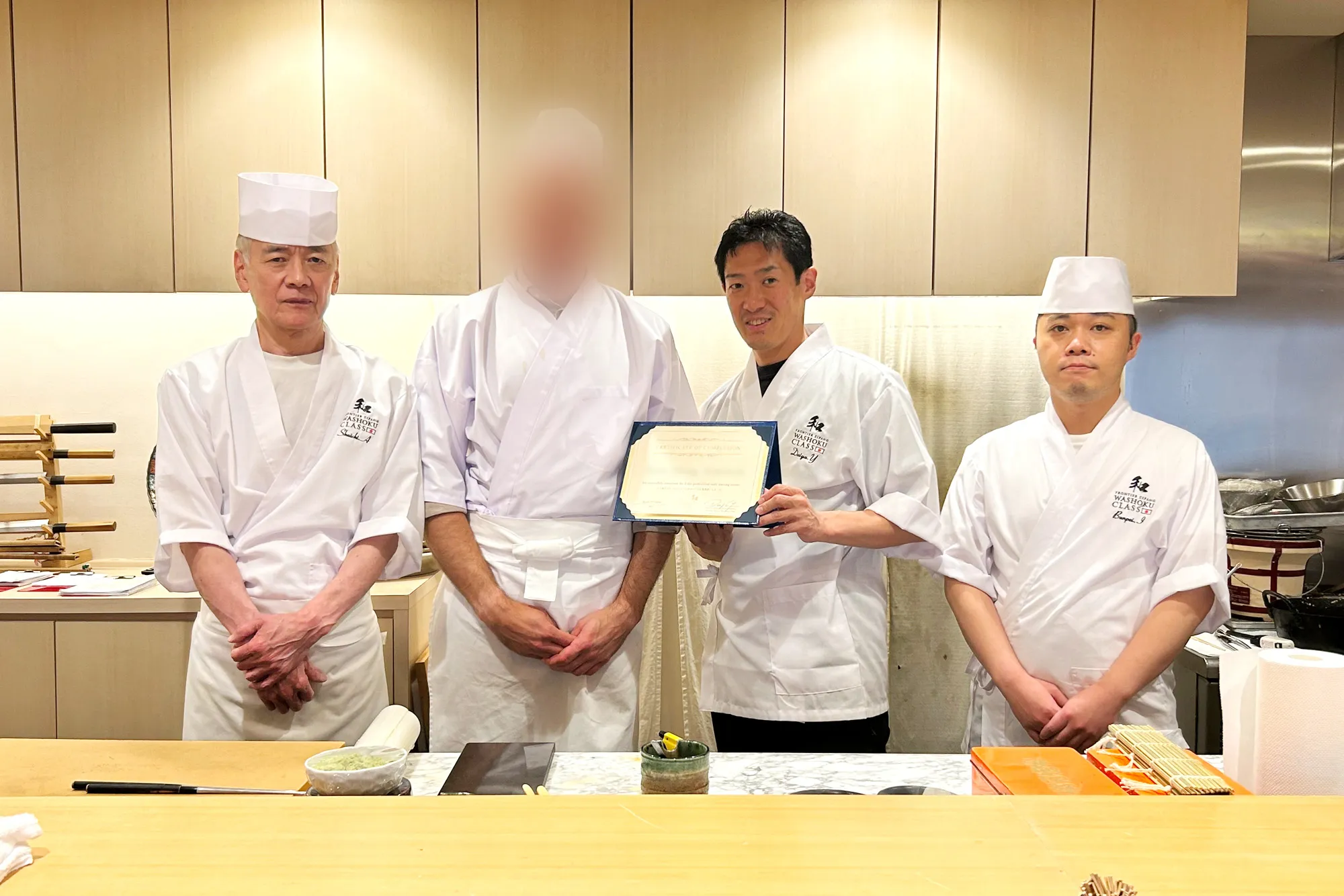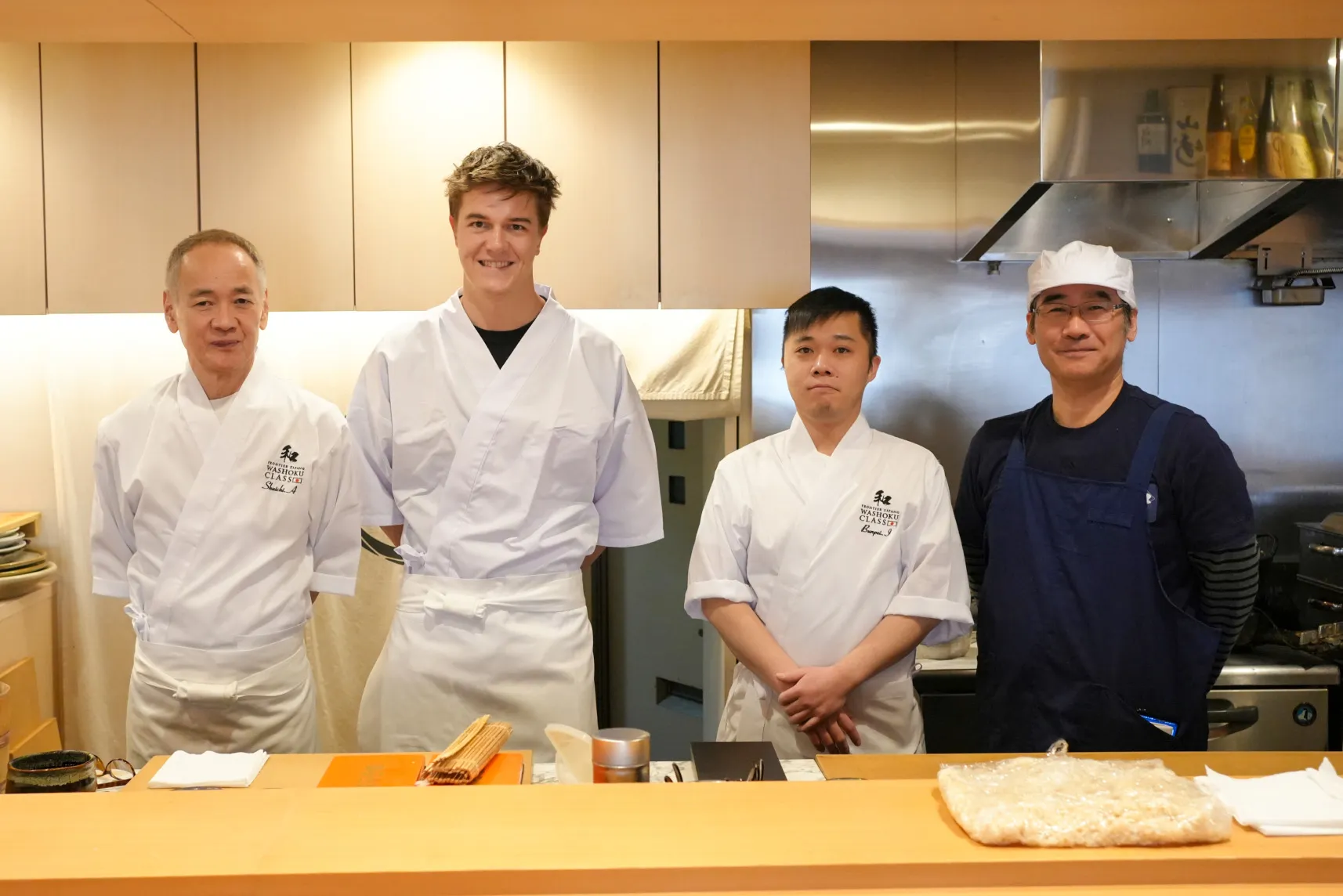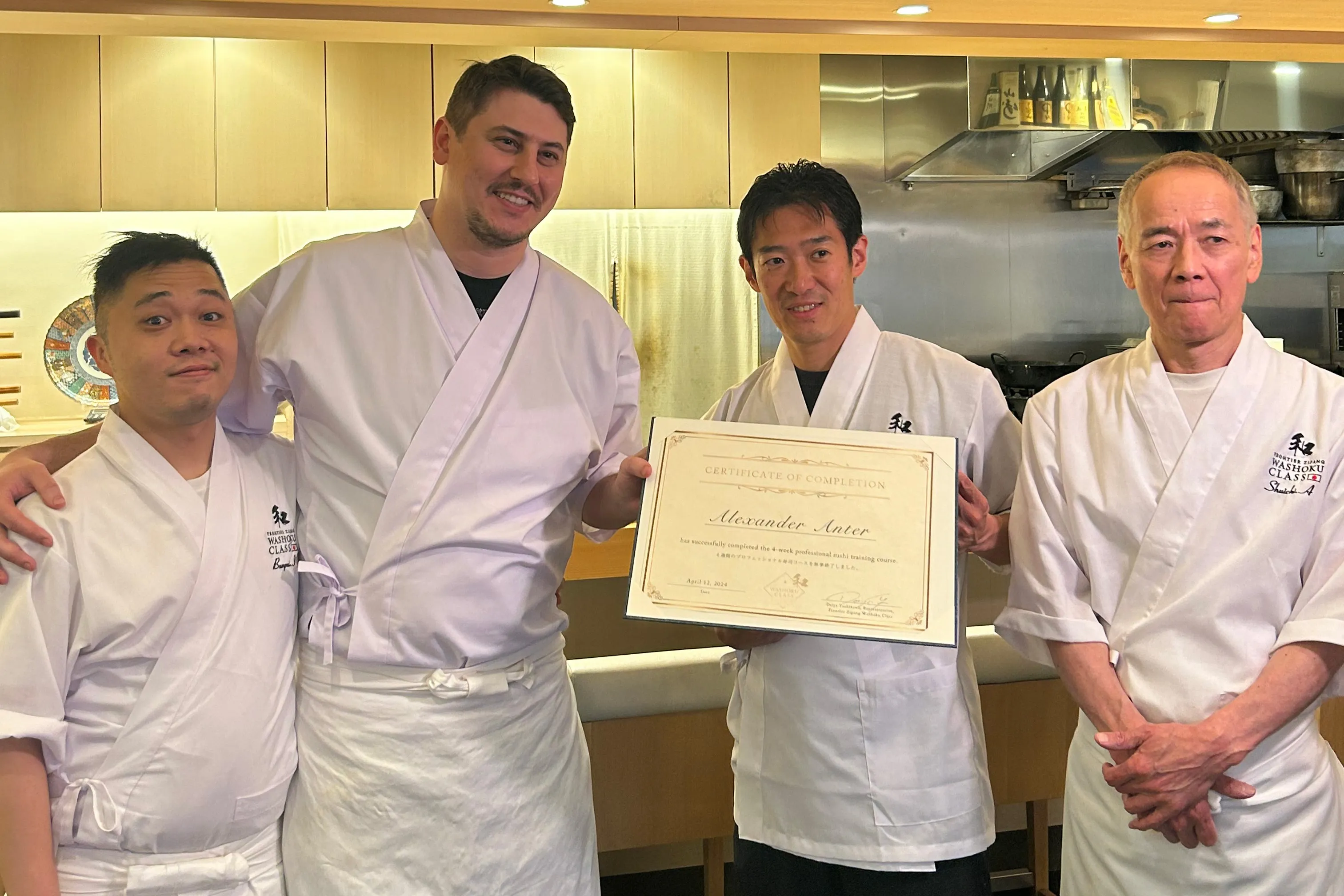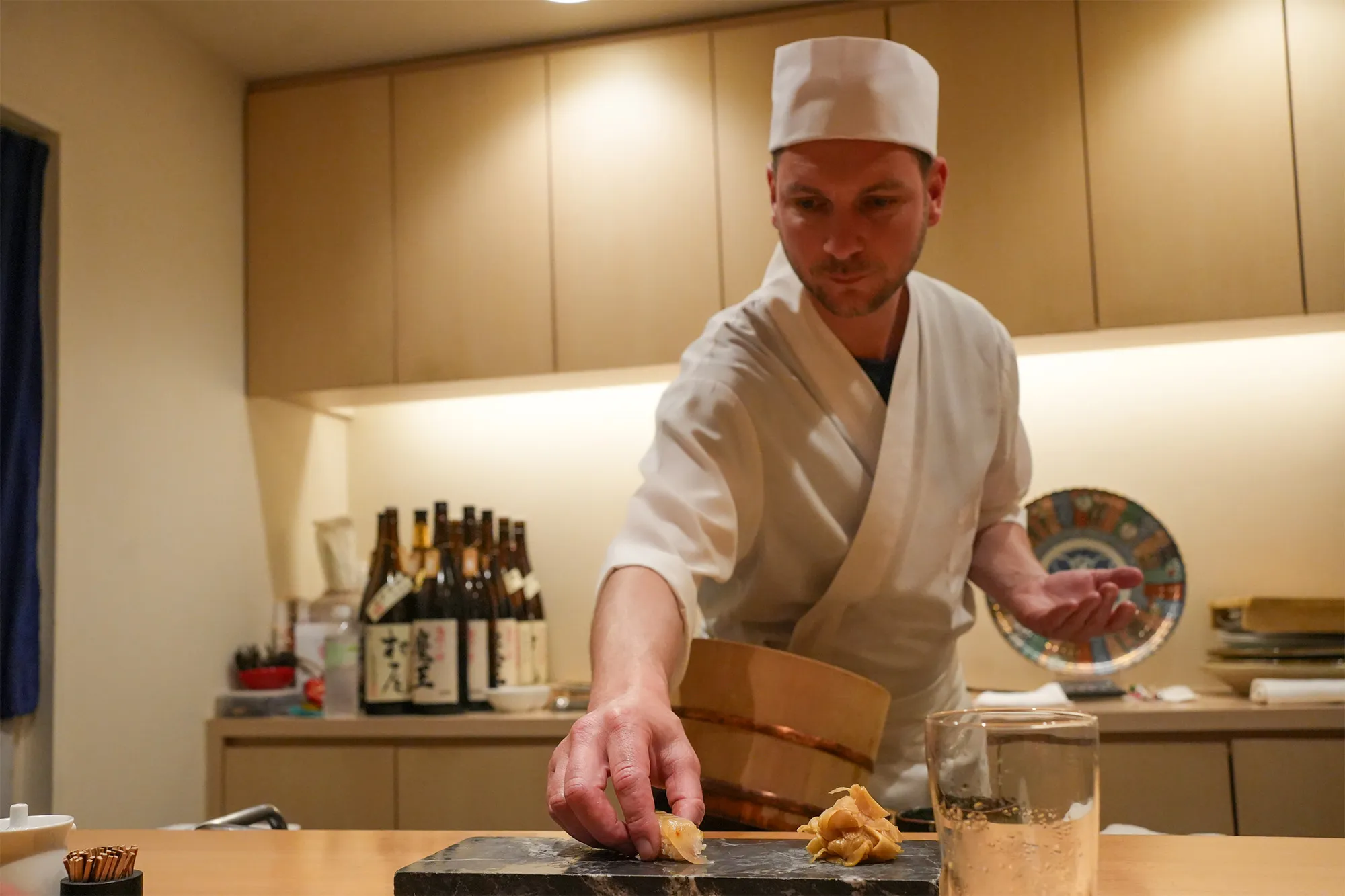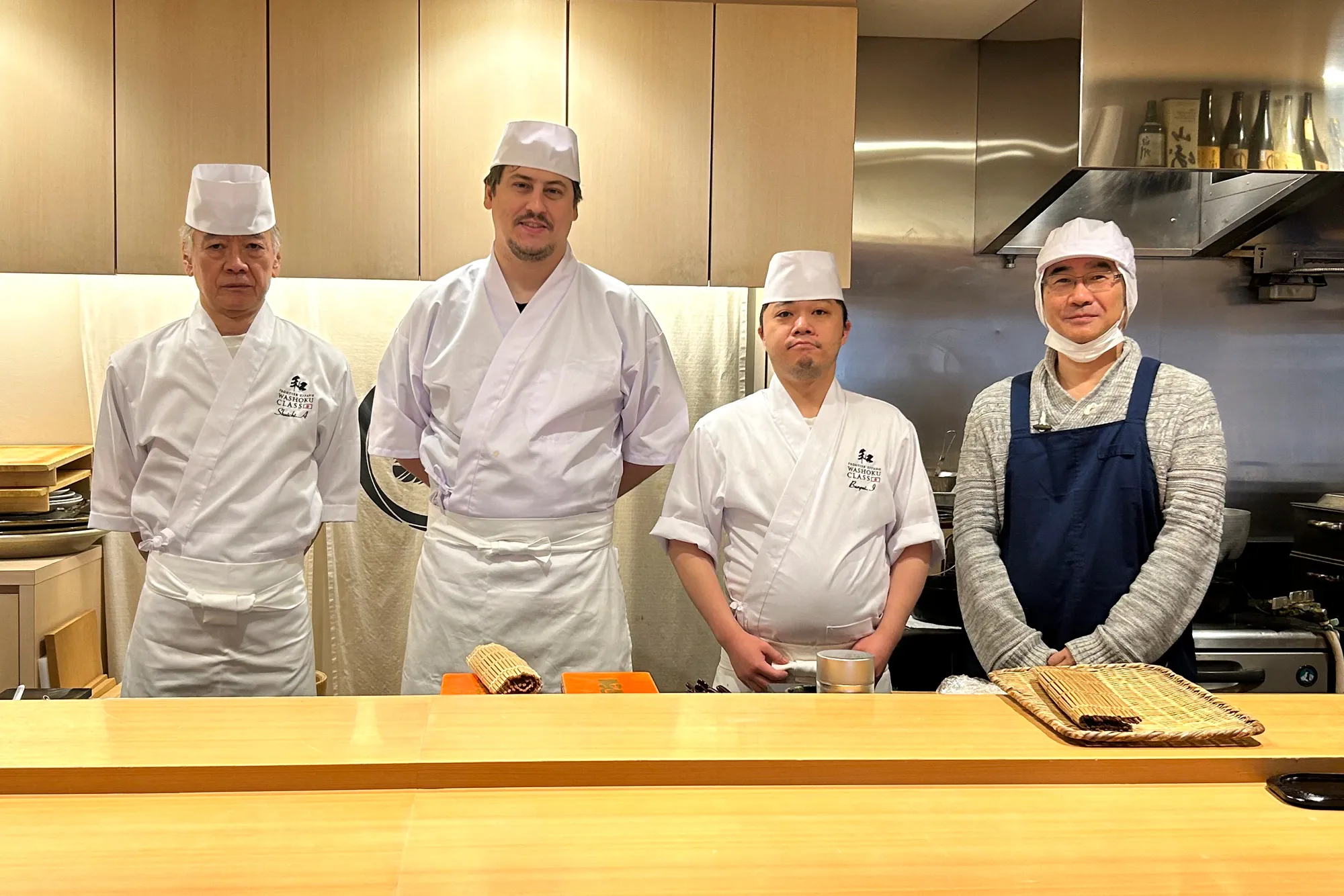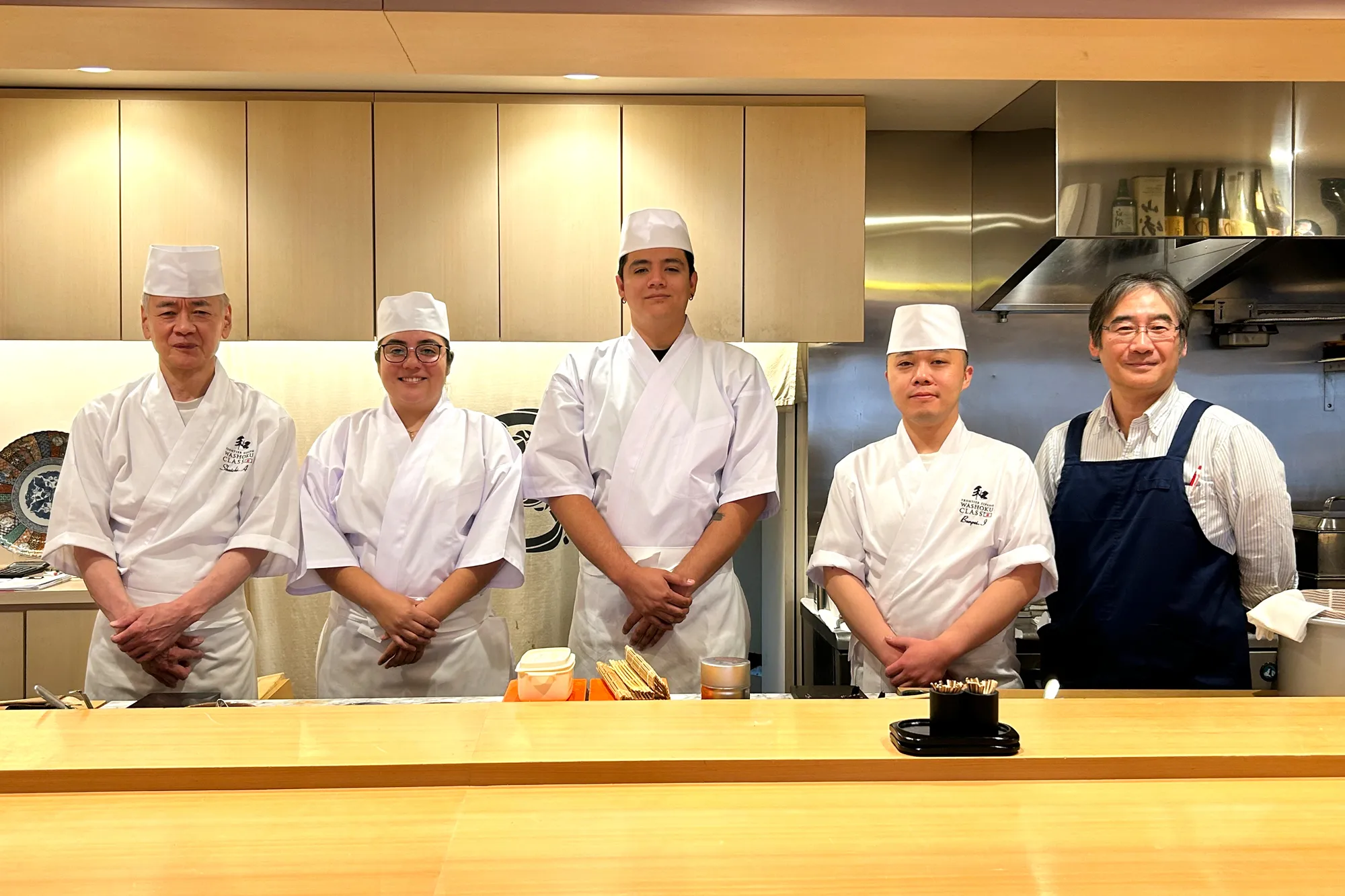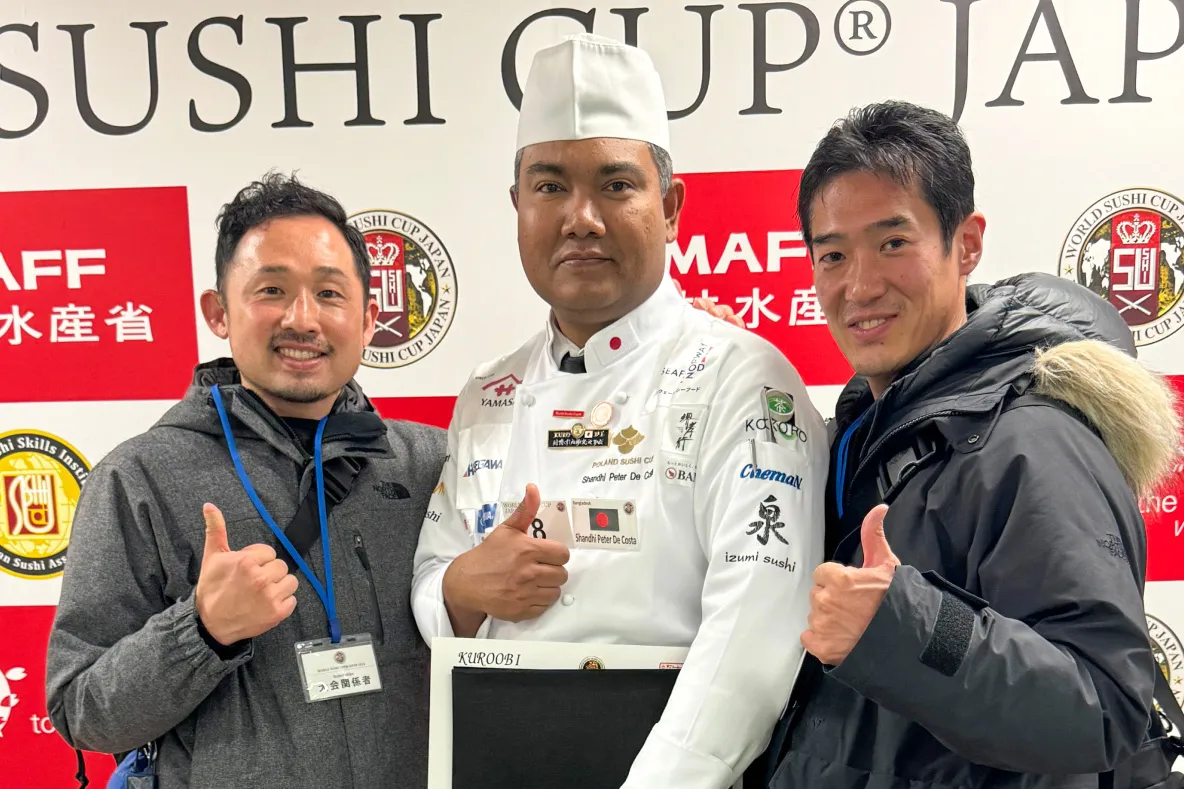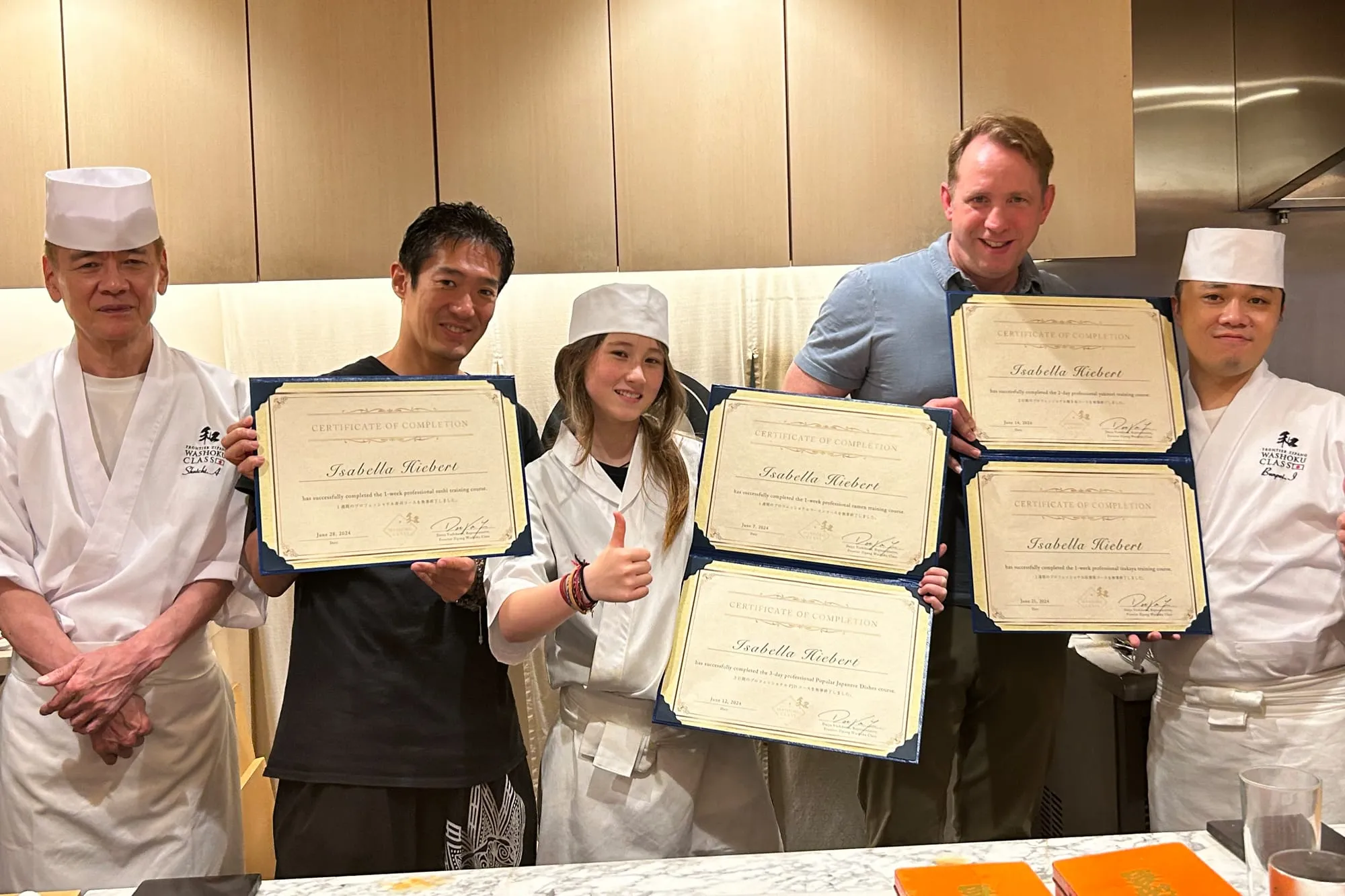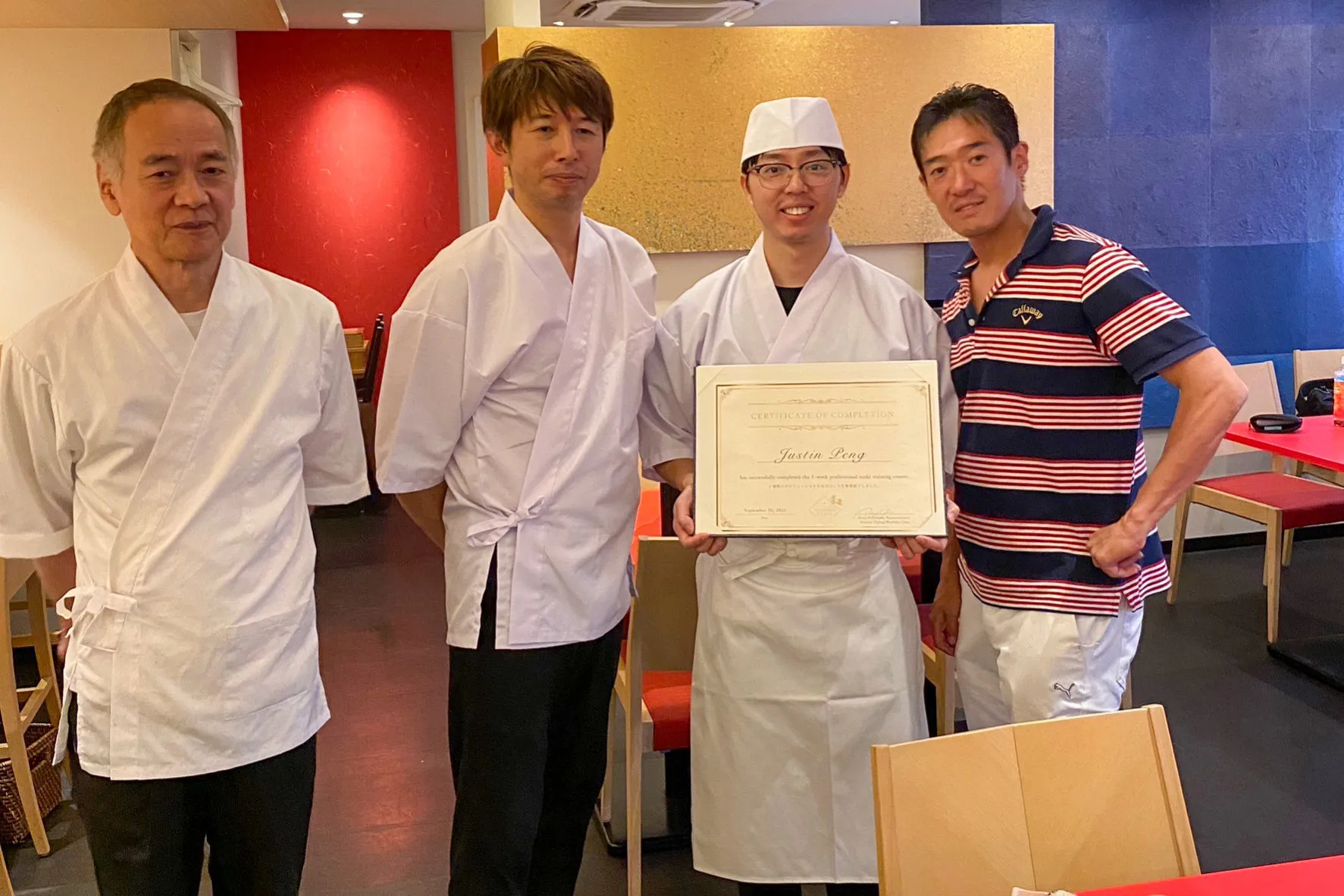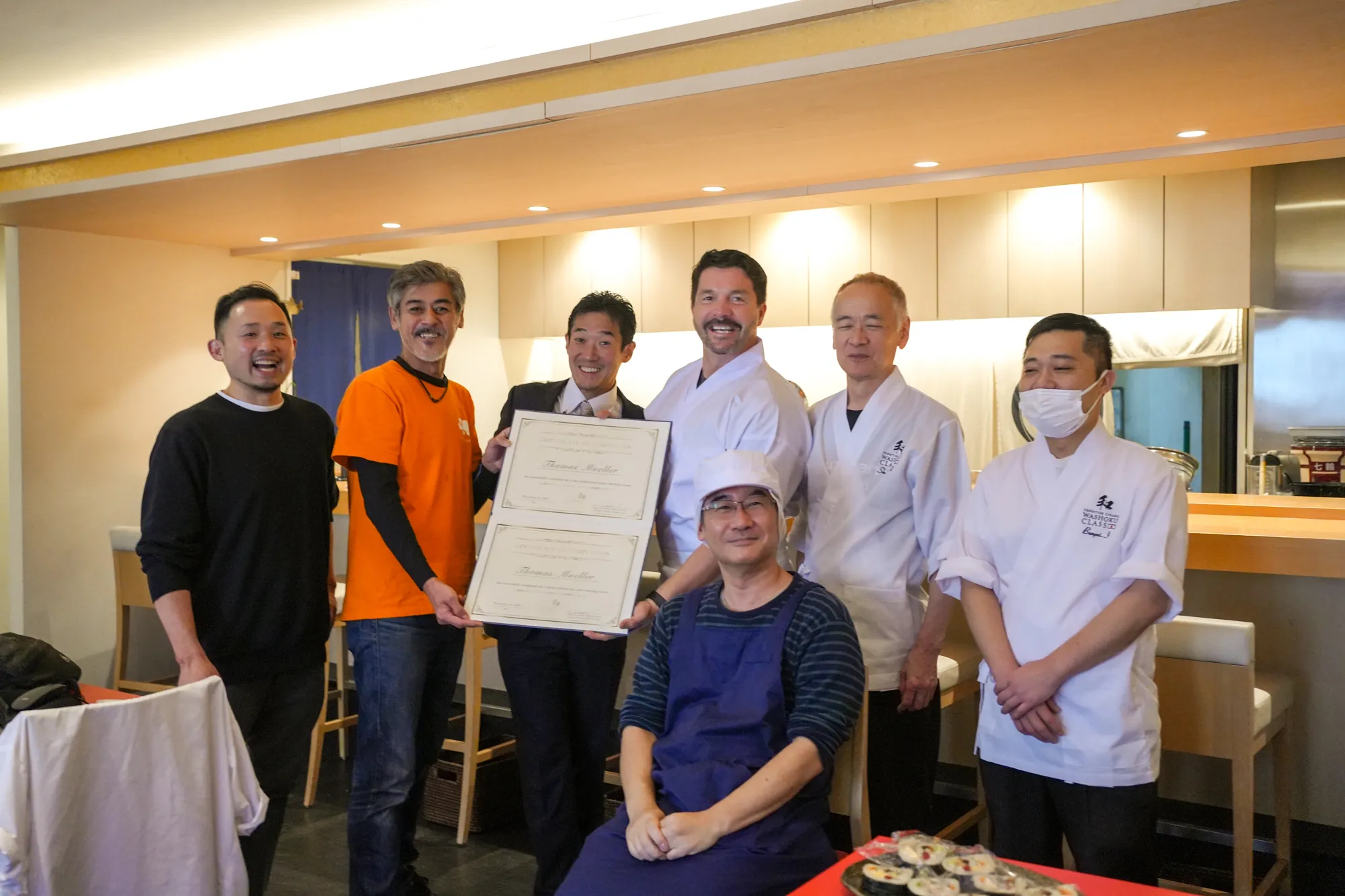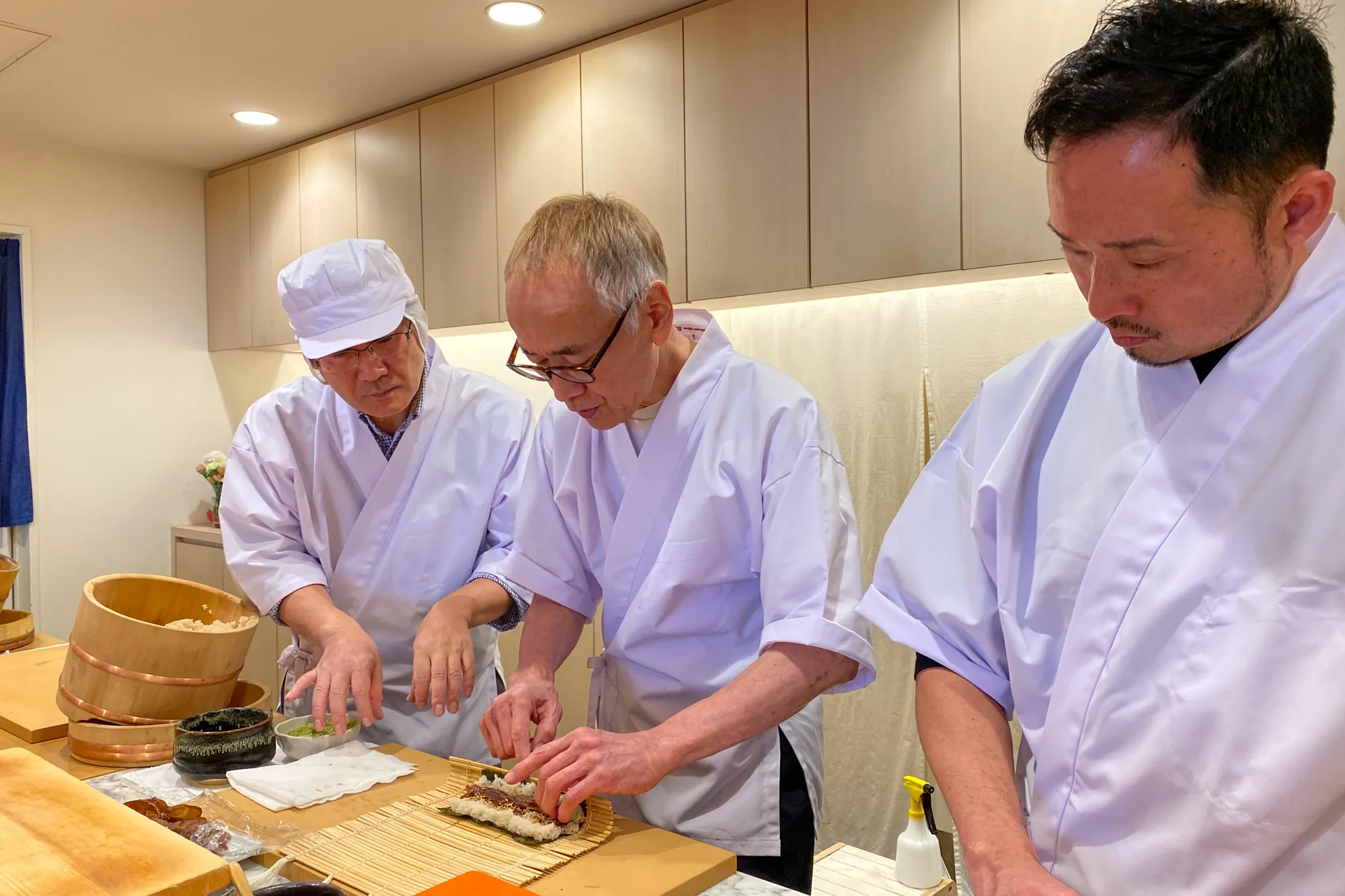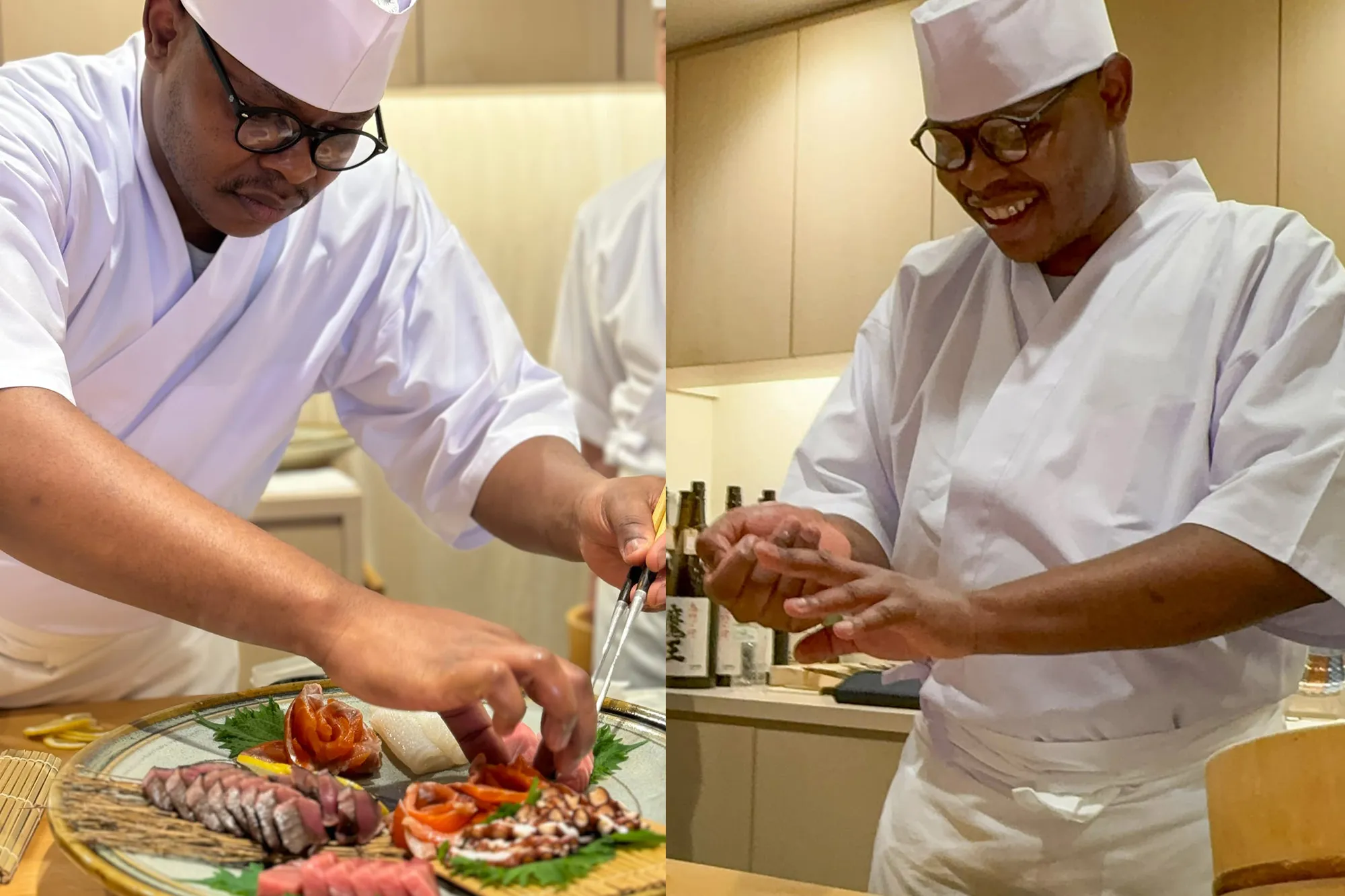Lesson Report: One-Week Private Sushi Course
Oct 17, 2023
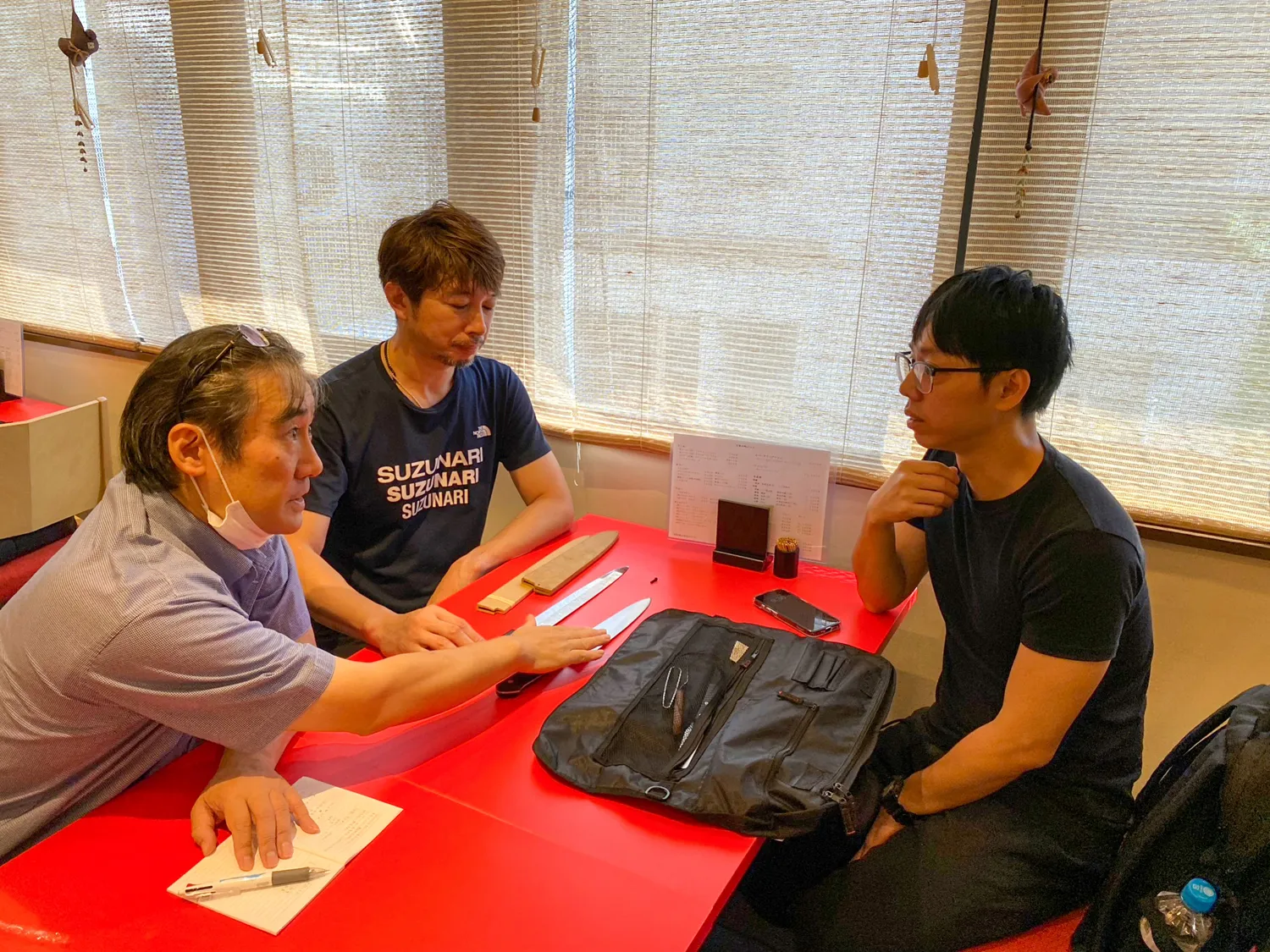
A one-week private sushi course had just kicked off. To begin, we sat down with our eager student and inquired about the specific skills he was keen to develop and refine. Our lesson began with an introduction to the art of Japanese kitchen knives. Japanese kitchen knives are distinct from their Western counterparts in the way they are used. This distinction arises from the single bevel design of Japanese knives, which requires a different technique for precision slicing. Simply pushing the knife won’t suffice when you’re working with delicate fish. Instead, it’s crucial to master the delicate balance of both pulling and pushing the knife. Moreover, maintaining Japanese kitchen knives is key to ensuring their longevity and top-notch performance.
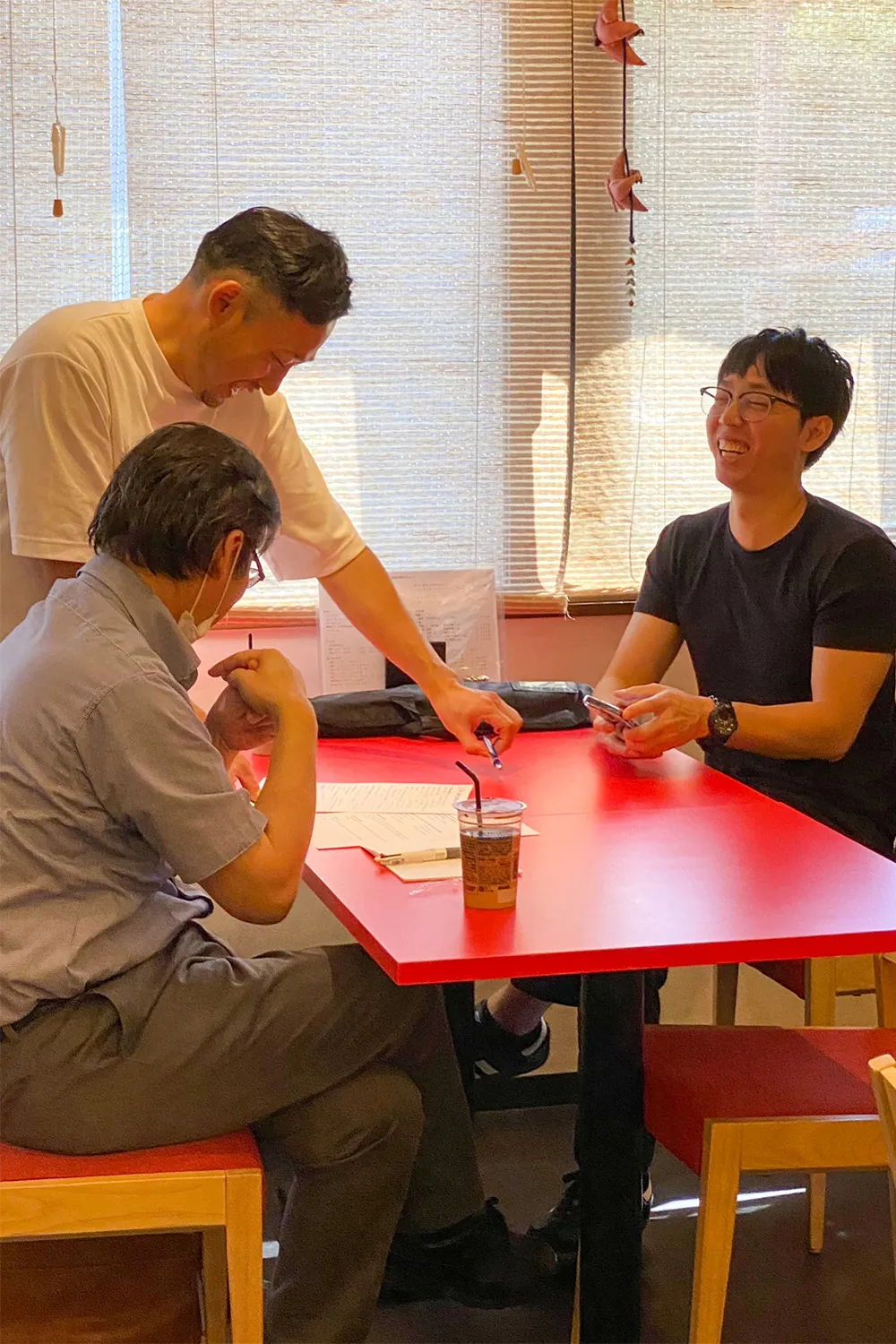
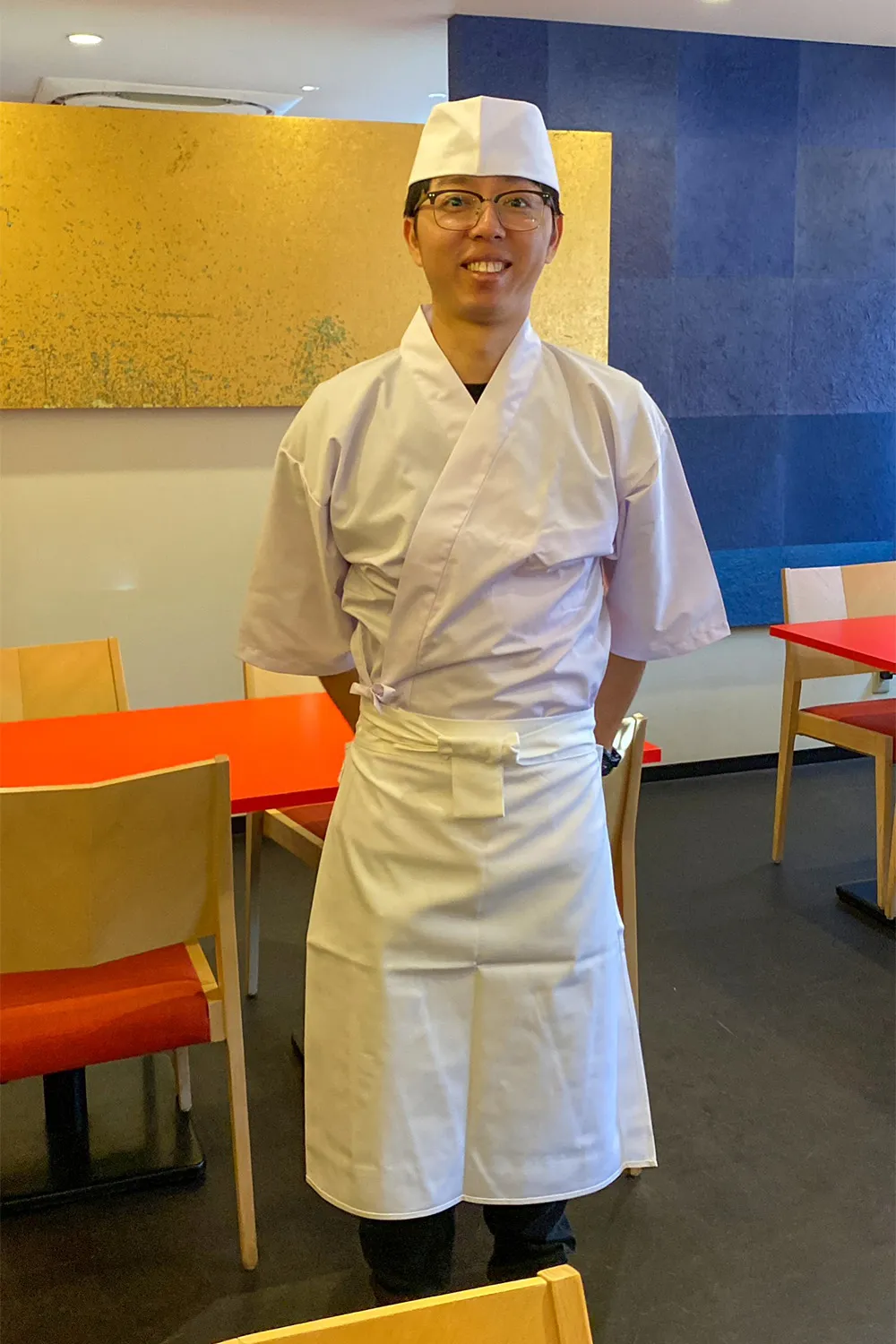
An essential aspect for washoku chefs involves their personal appearance and the stylish manner in which they wear their chef uniform. During this week-long course, the student delved into the art of putting on an apron with flair. Throughout the week, the student learned how to put on an apron stylishly. It looked really good on him, don’t you think? This newfound skill will undoubtedly help him exude confidence and look his best on the final day of the course.
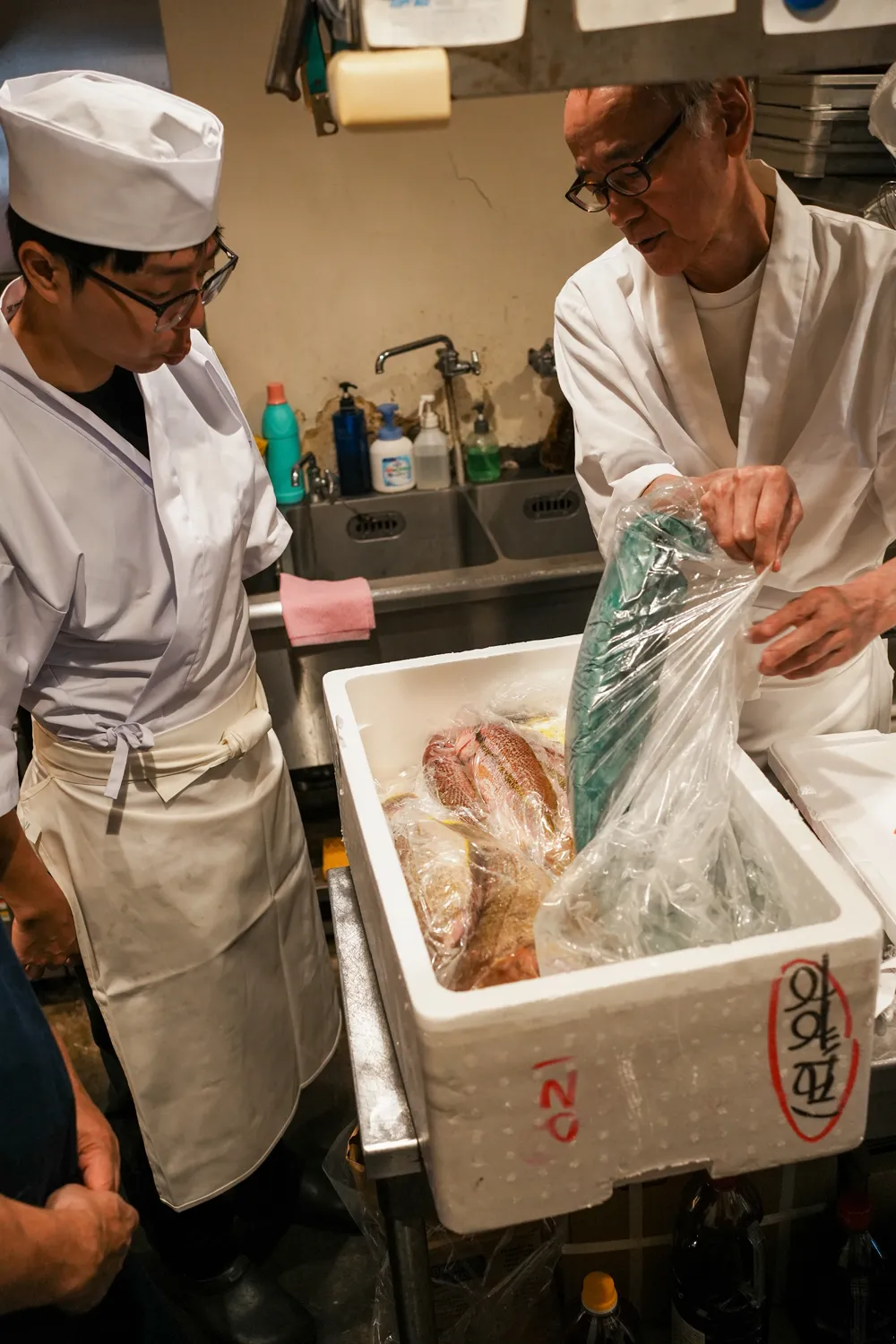
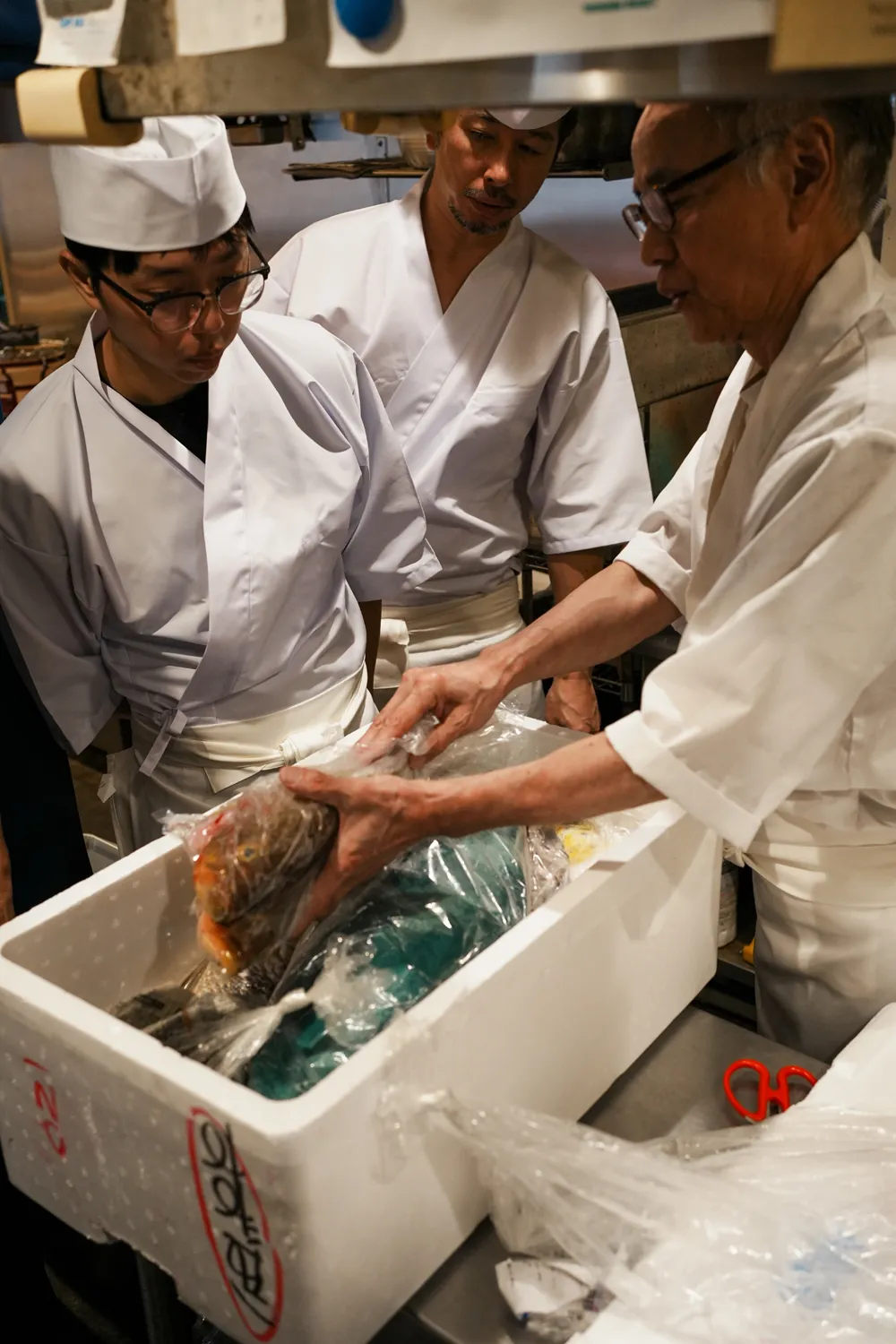
Fresh fish, sourced directly from the local fish market by our instructors, was delivered. This piqued the student’s curiosity and enthusiasm. When he learned that these very fish would be filleted, salted and vinegared, expertly sliced, and transformed into delicious sushi, his excitement was mixed with a hint of nervousness.
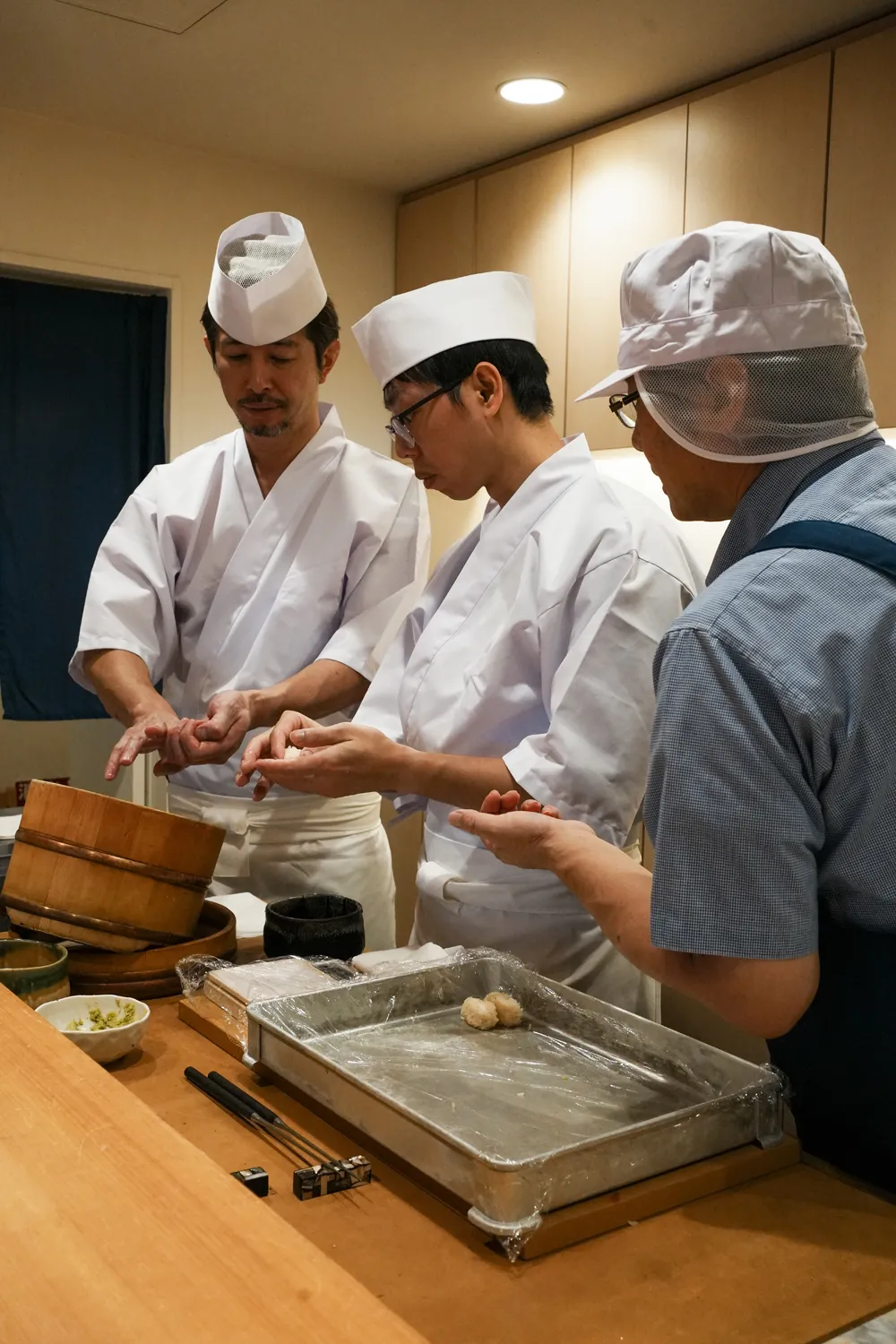
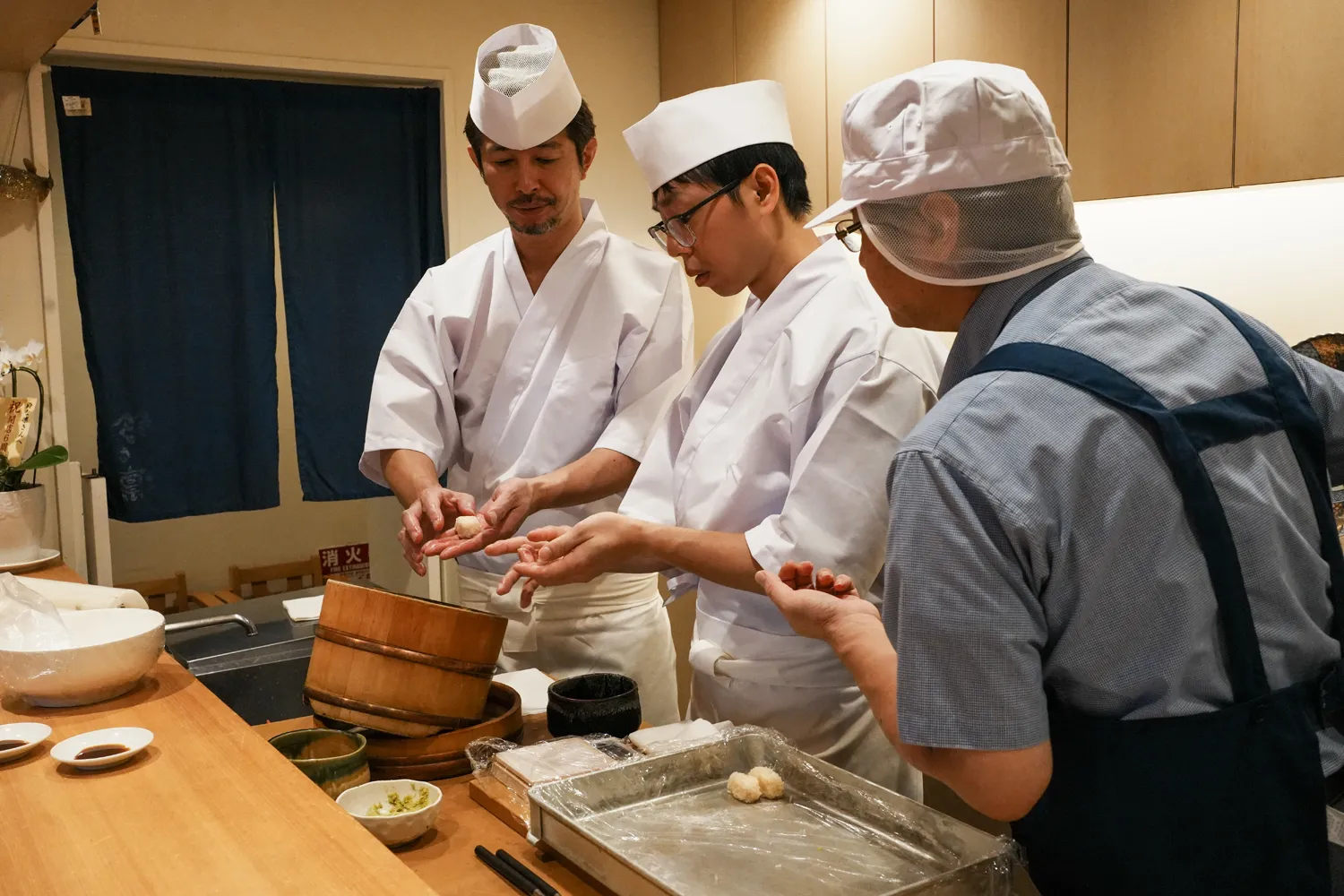
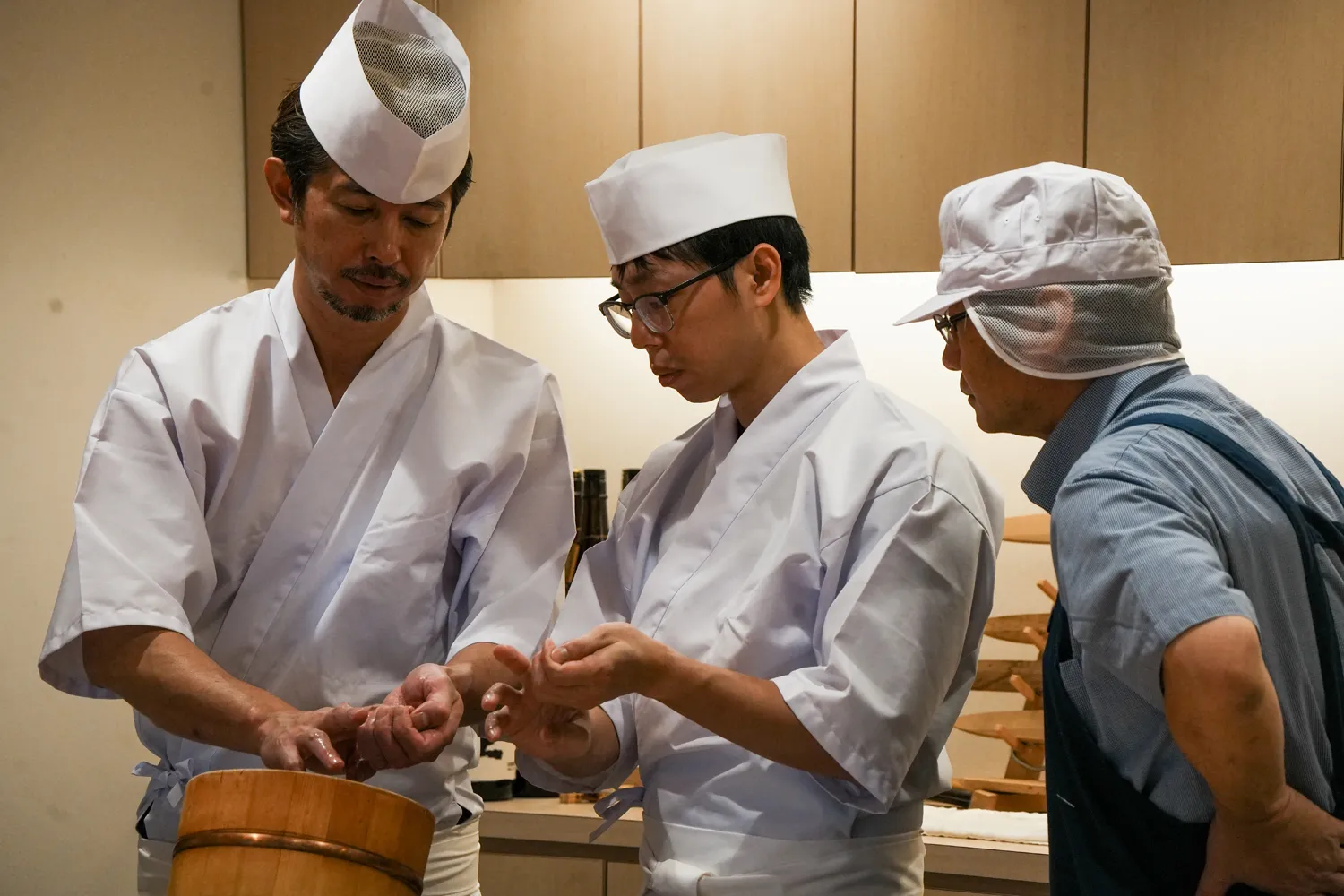
We finally dove into the main focus of our lessons: the intensive hands-on training of shaping sushi rice. Over the course of five days, the student crafted hundreds of sushi rice portions each day. Initially, he practiced shaping the rice without any toppings, concentrating on perfecting the art of grasping the rice with just the right amount of force. Naturally, he encountered challenges while trying to shape and flip the rice with the ideal pressure. Observing the instructors at work, it appeared to him that they held the rice with significant strength. To gain clarity, he asked one of the instructors to assess the strength of his own grasp. Following this, he began to show gradual improvement. His determination and innate talent in sushi-making didn’t go unnoticed, as the instructors commended his enthusiasm and good taste in creating delectable sushi.
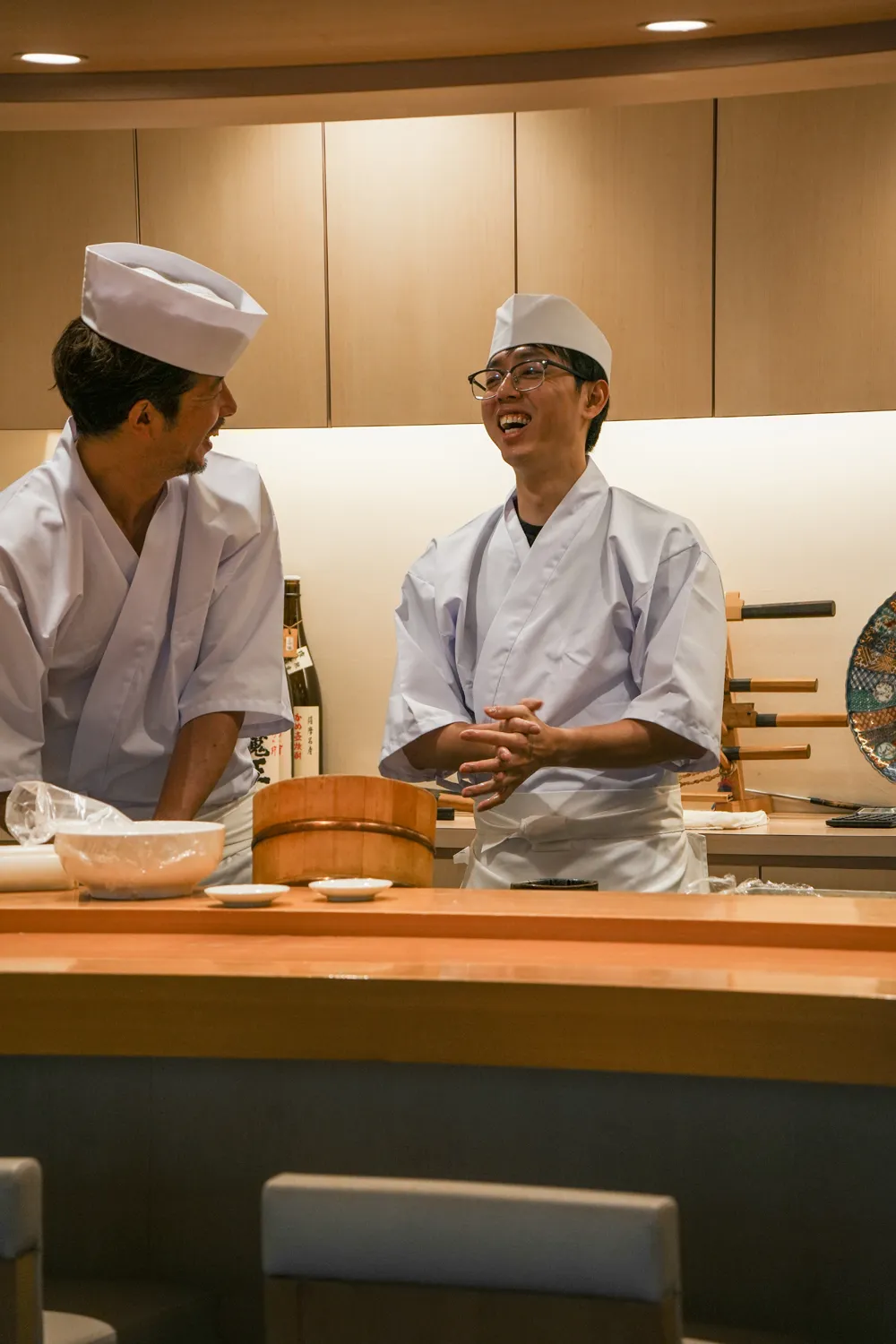
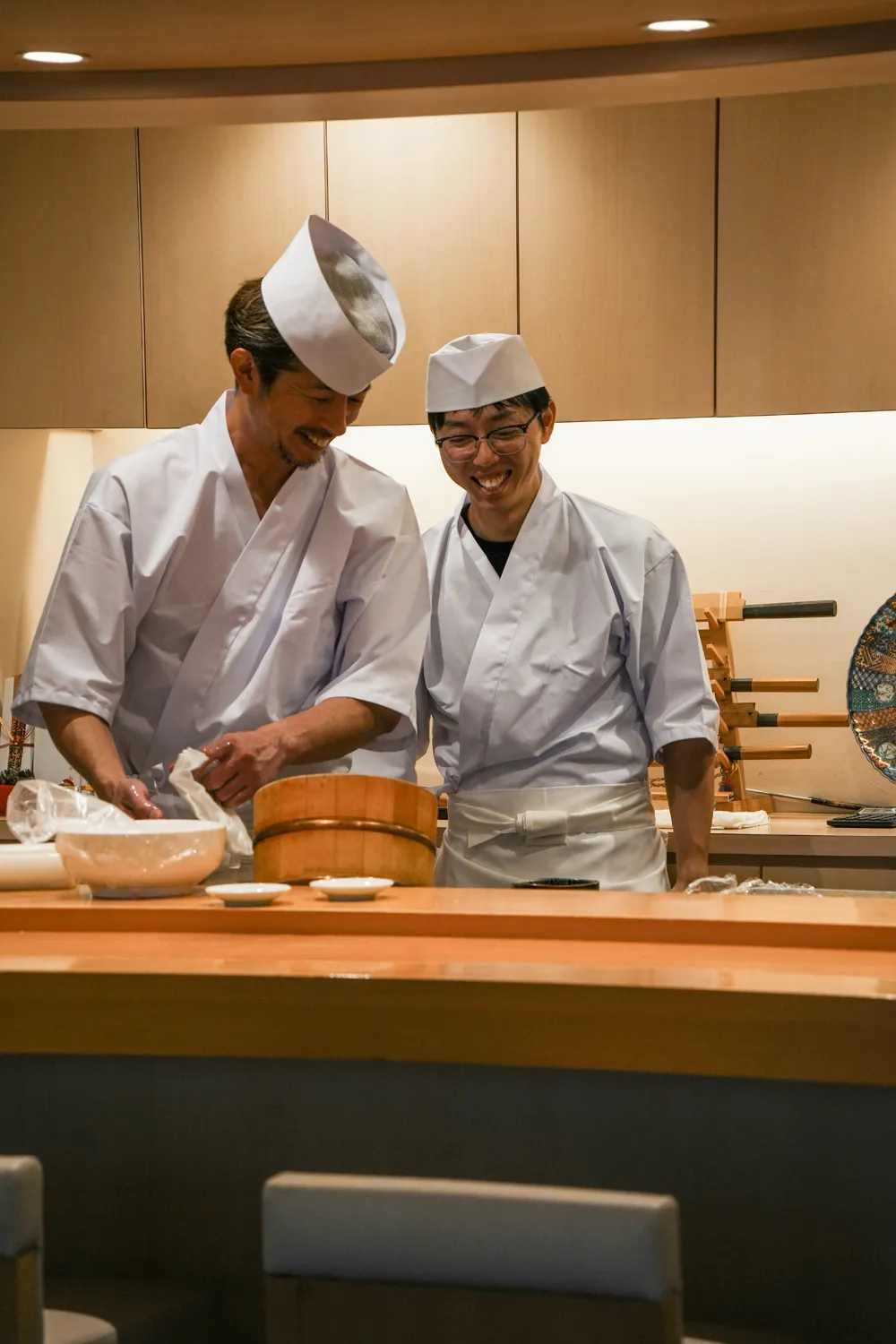
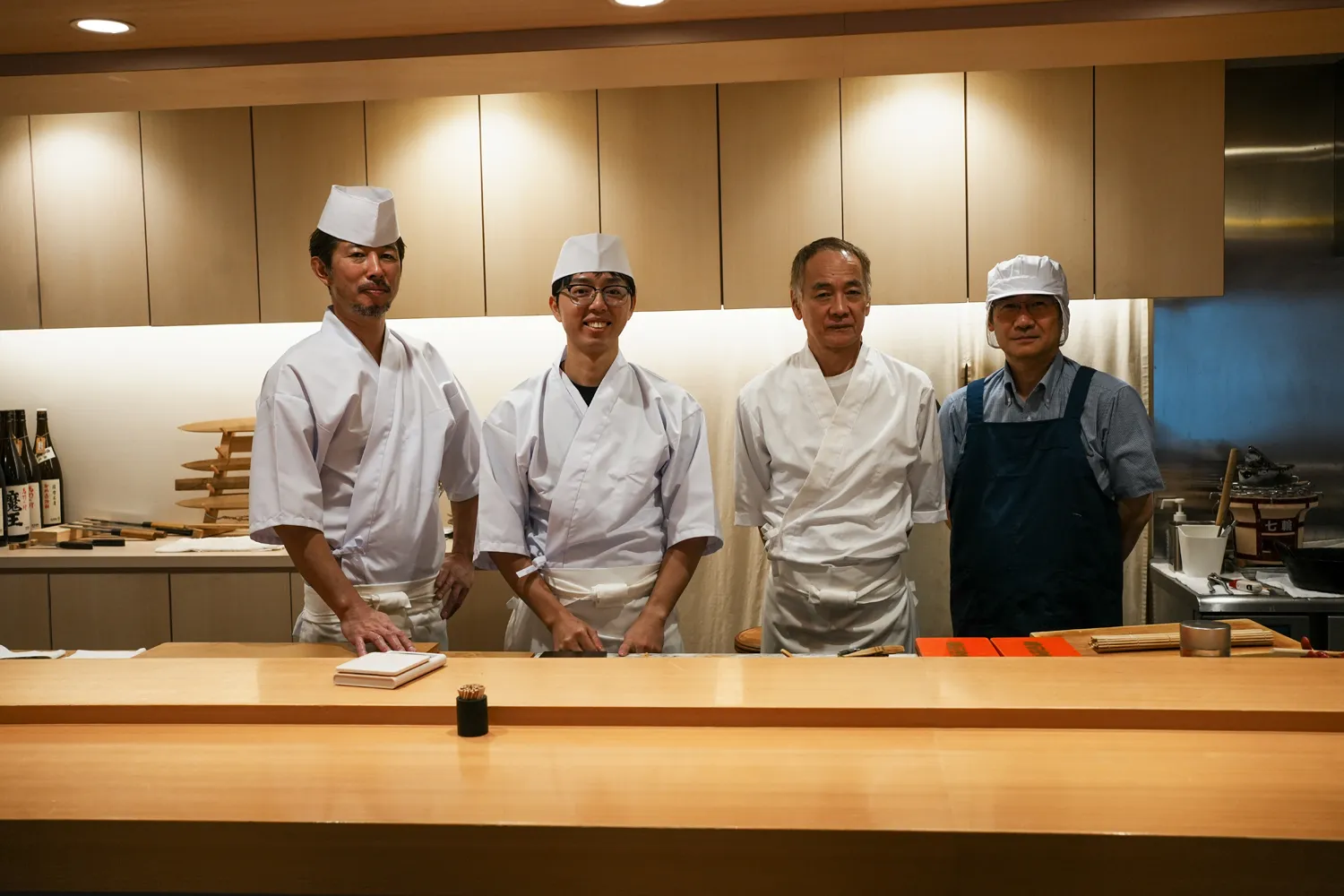
The lesson continued in a very friendly way, and any initial worries we had were gone before we knew it. Since it was a private lesson, the student got really detailed training in the basics of making sushi.
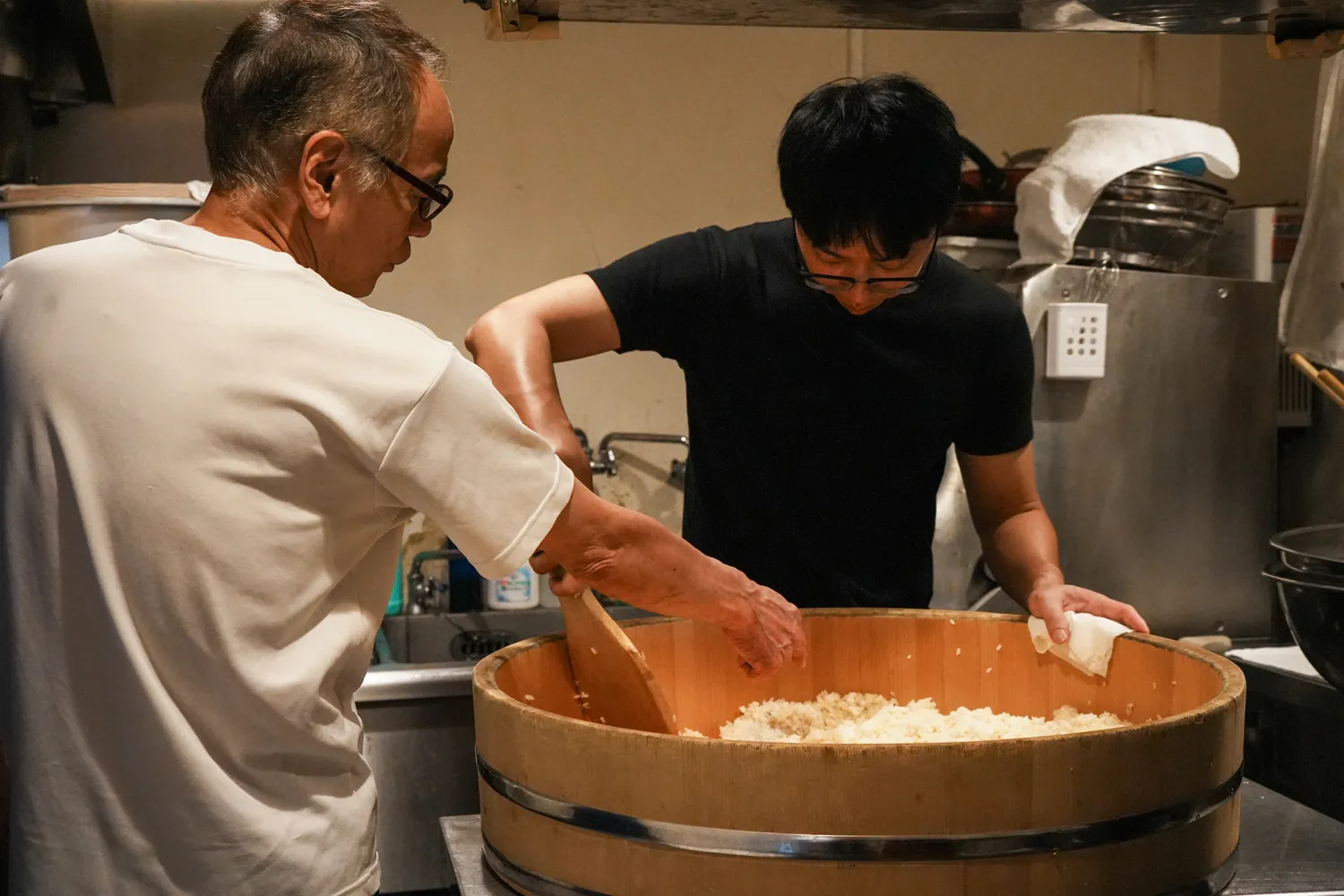
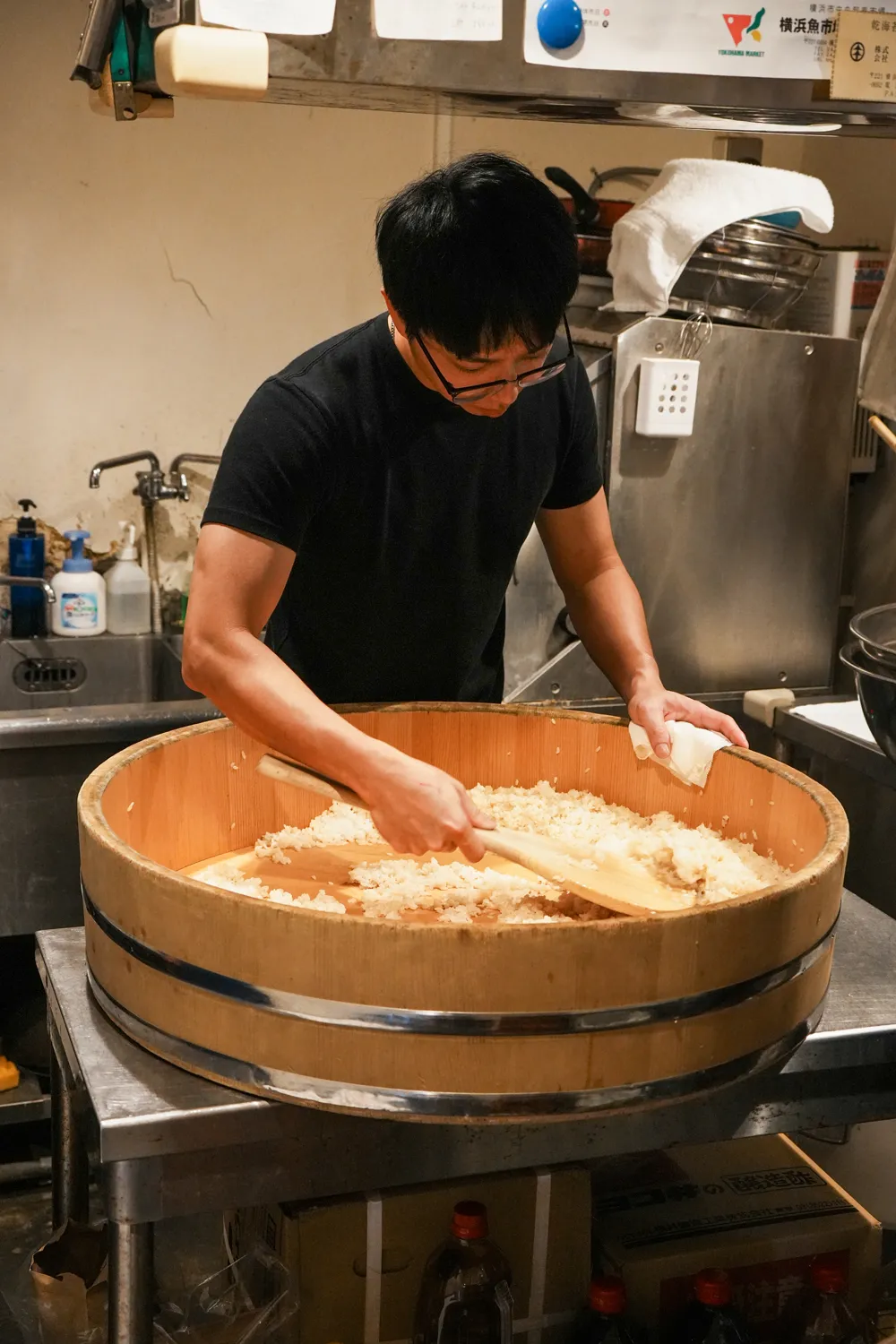
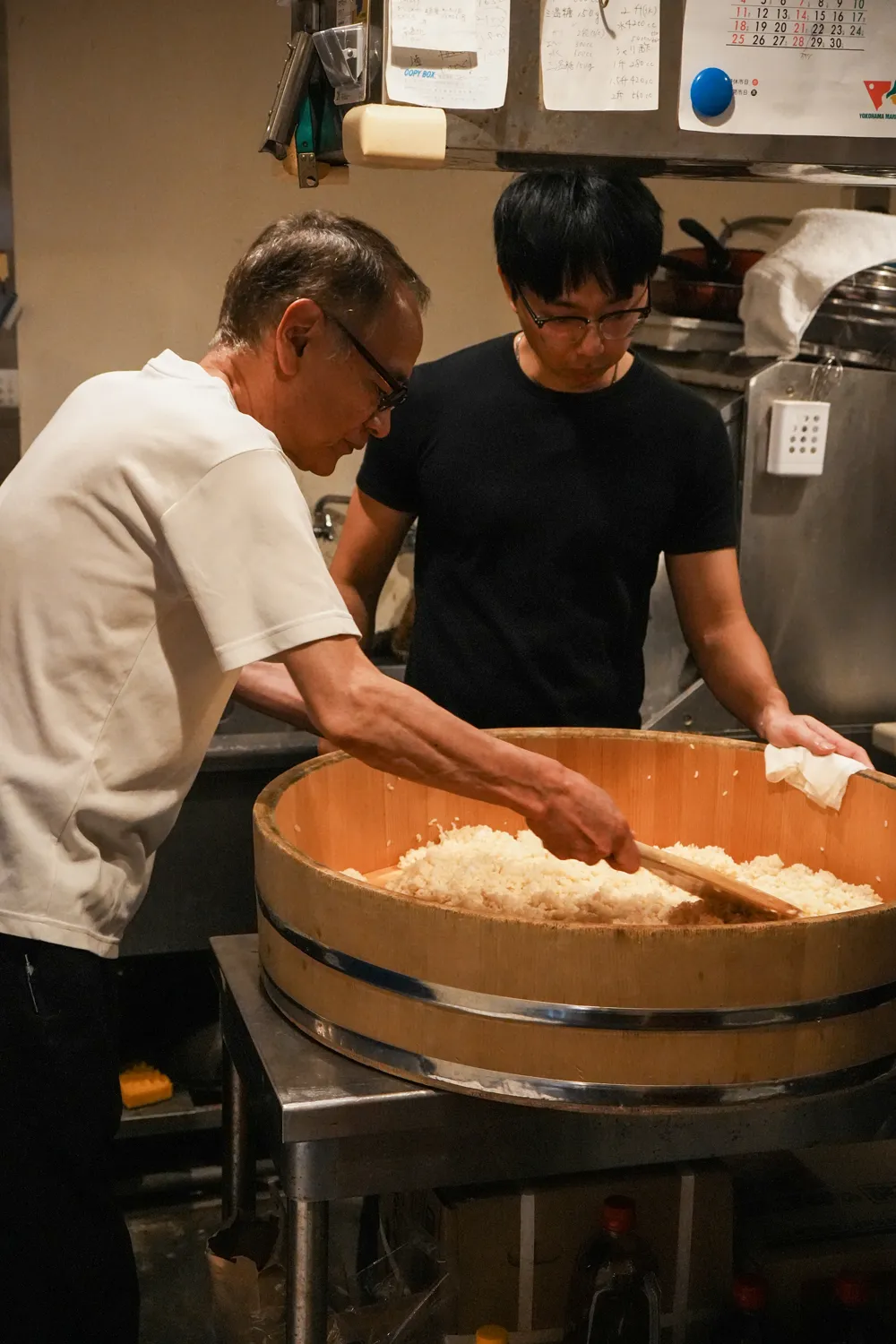

Next day, the student took on the task of preparing sushi rice independently, following the instructions provided by the instructor on the previous day. This process included cooking the rice and gently mixing it with a spatula to ensure there were no lumps and to evenly distribute the vinegar throughout the rice. Sushi rice needed to be meticulously prepared, ensuring it remained neither clumpy nor overly mashed. From the following day onwards, the student assumed full responsibility for preparing sushi rice without the instructor’s guidance, dedicated to mastering this essential skill.
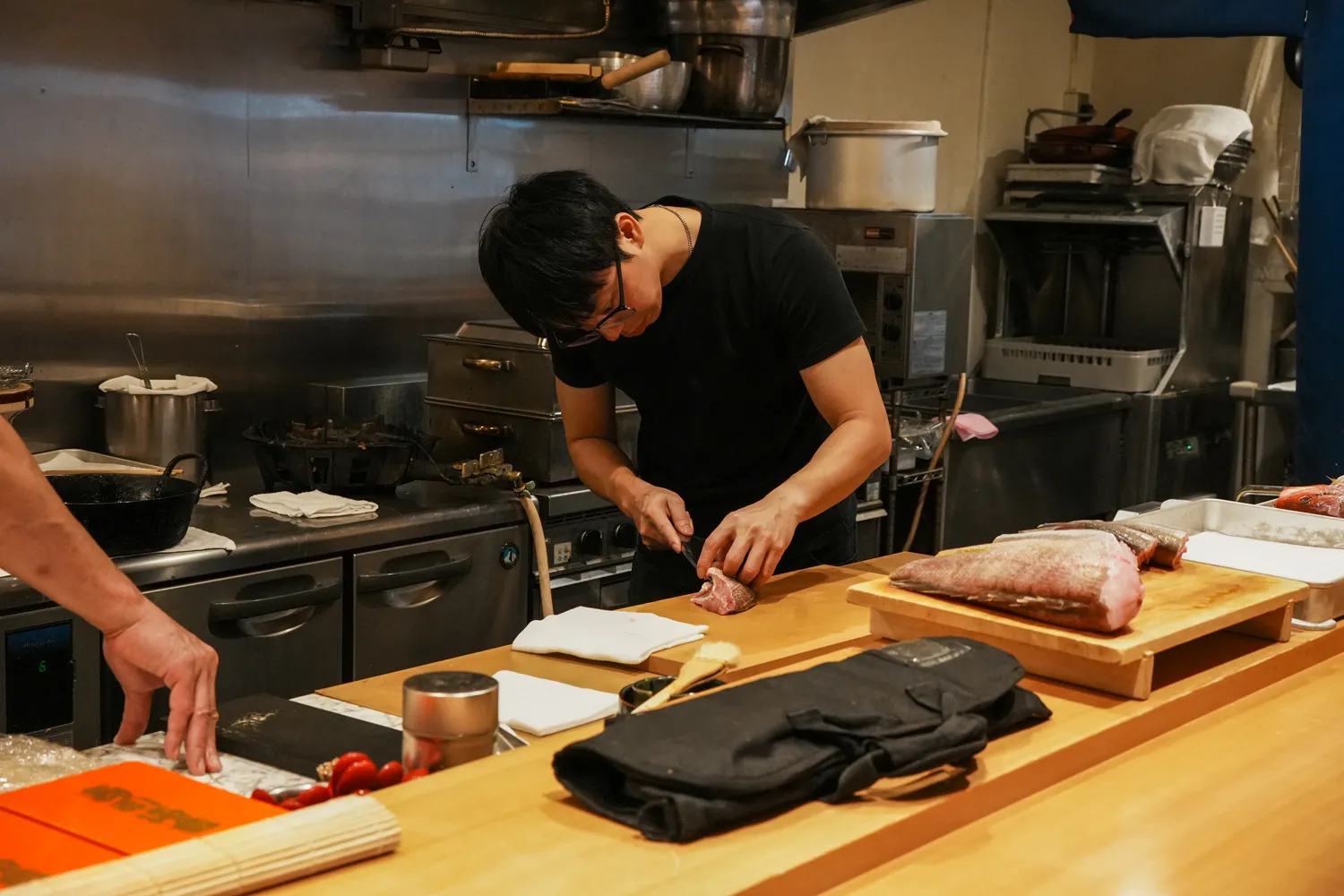
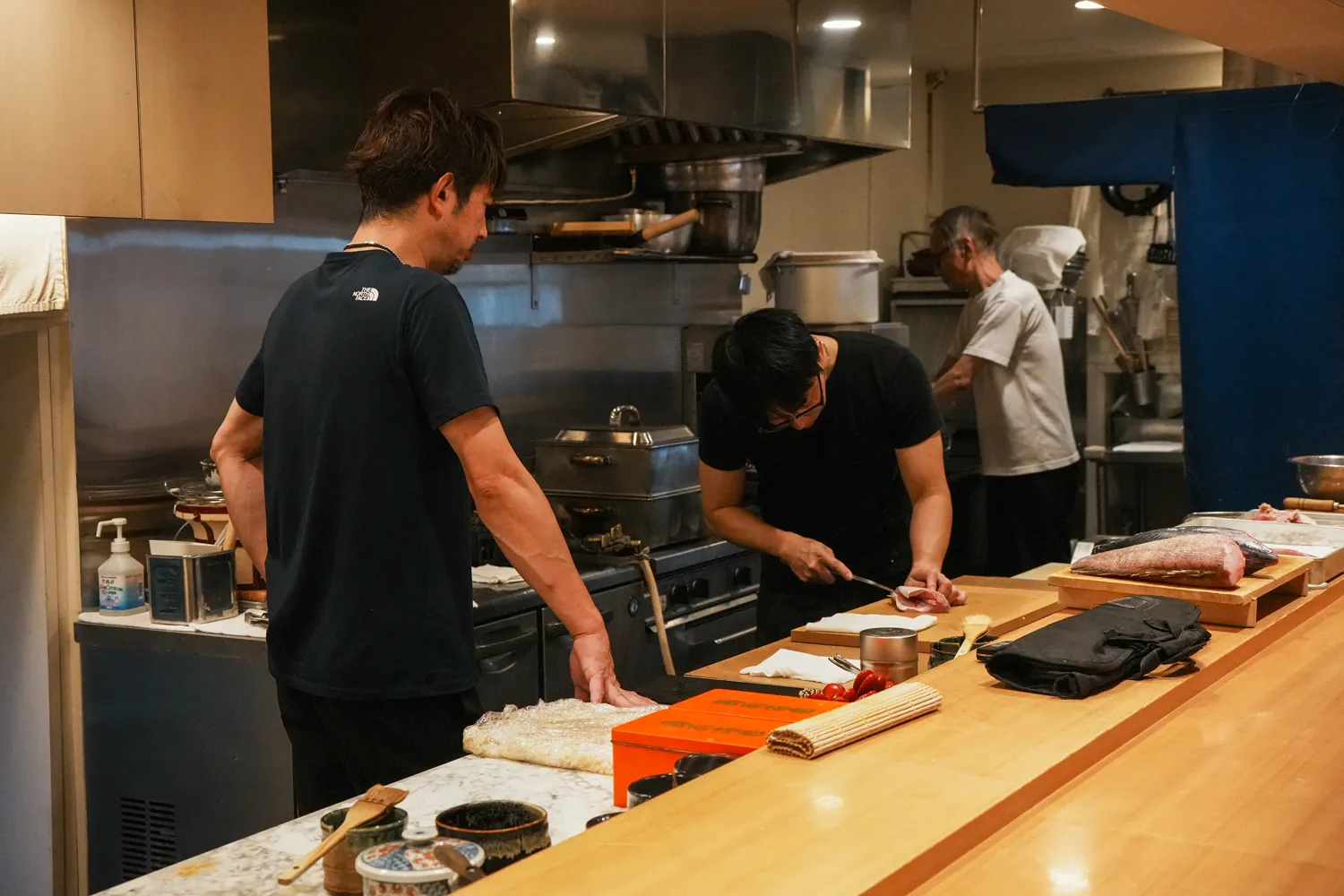
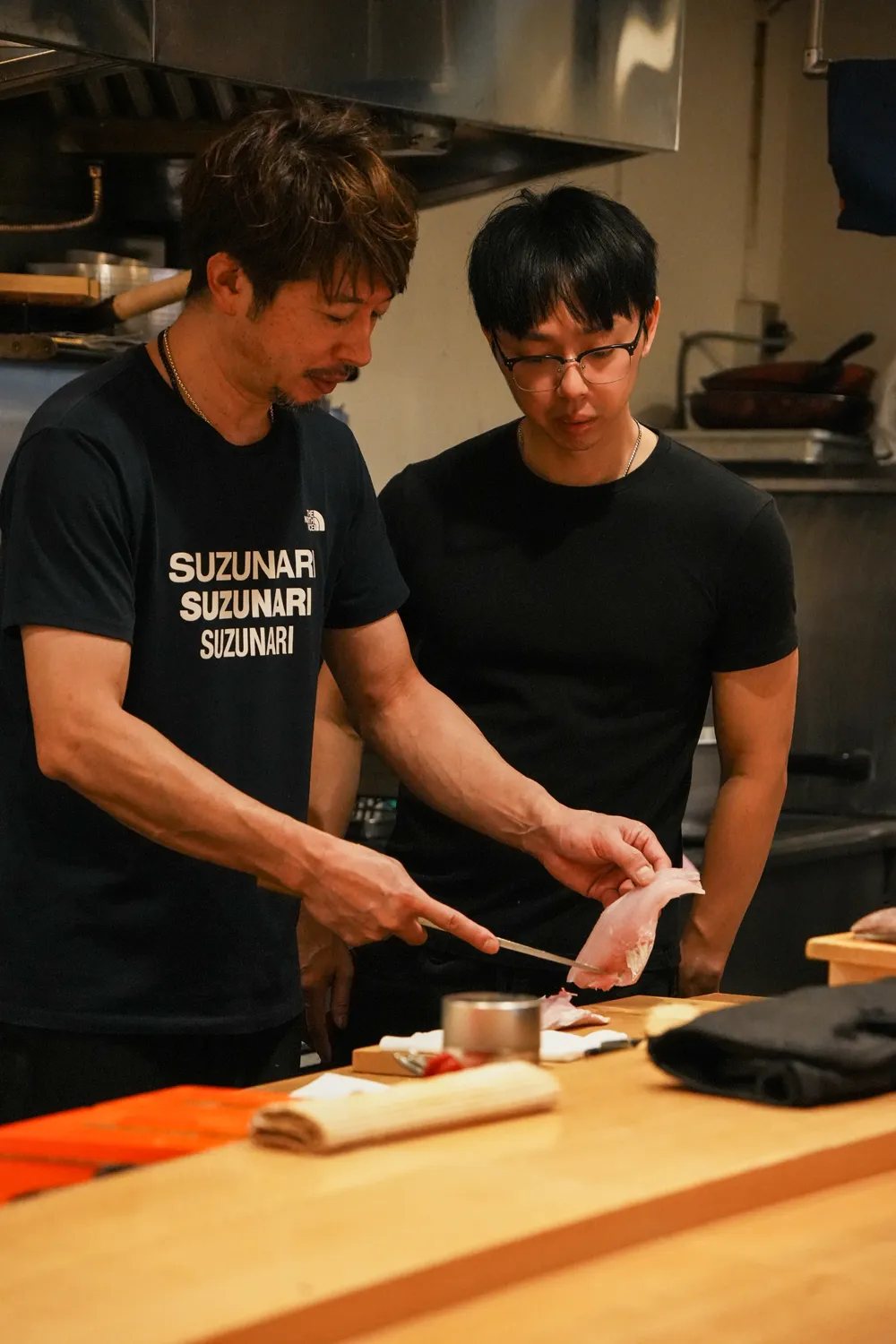
Next up, the lesson extensively covered the techniques of cutting and trimming fish. It all began with a fundamental lesson on understanding the bone structure of various fish species. Although many fish appear to have similar bone structures, subtle differences exist in their hardness and arrangement. The instructor stressed the importance of in-depth knowledge about the bone structure of each fish, as it directly influences the quality of the cuts and trims. The student received step-by-step guidance from the instructor, learning the precise techniques for clean and precise fish preparation. Gradually, he began to develop a better grasp of using a Japanese kitchen knife. During practice, he noticed that he was applying excessive force while cutting up. Recognizing this, he made quick improvements to his technique.
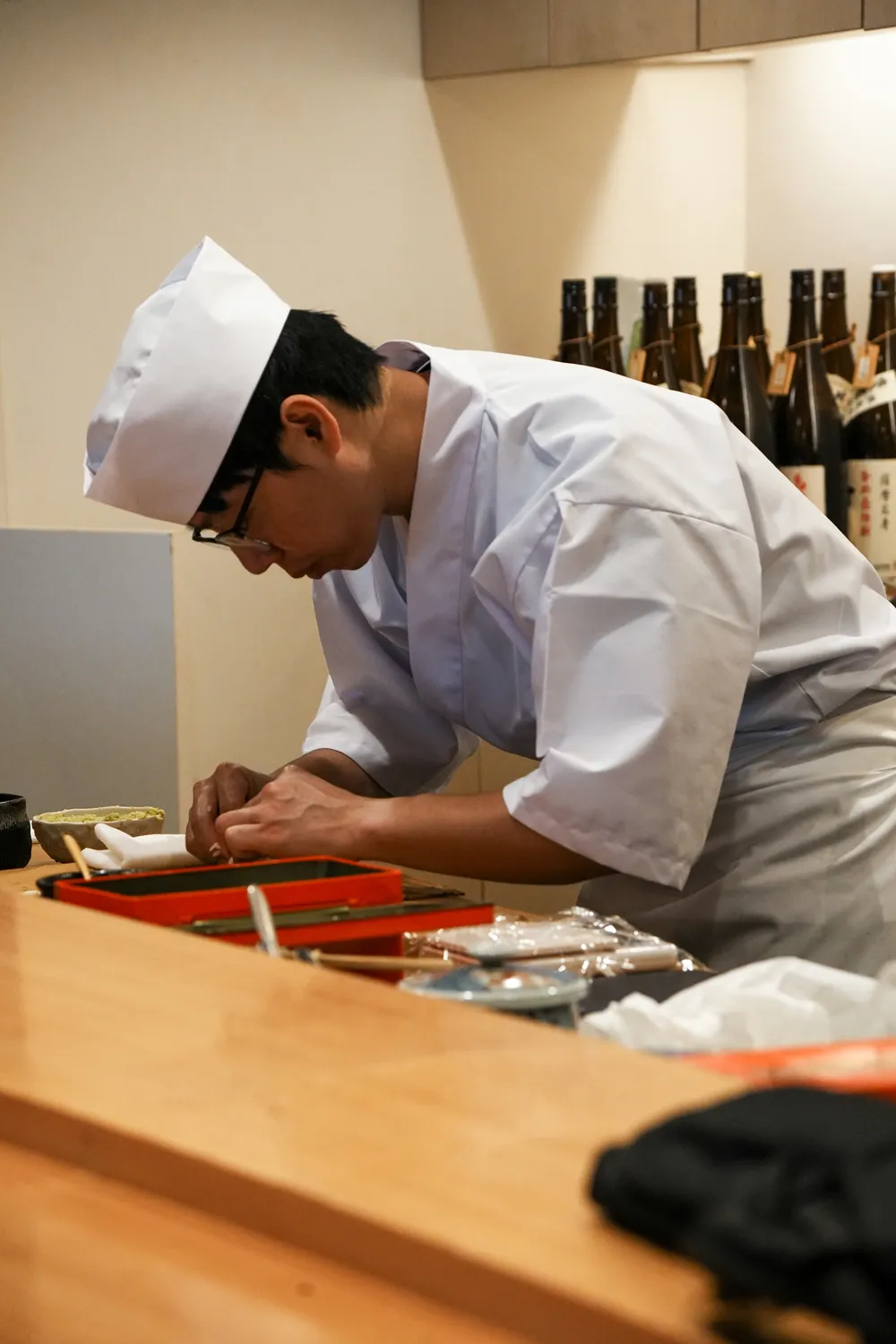

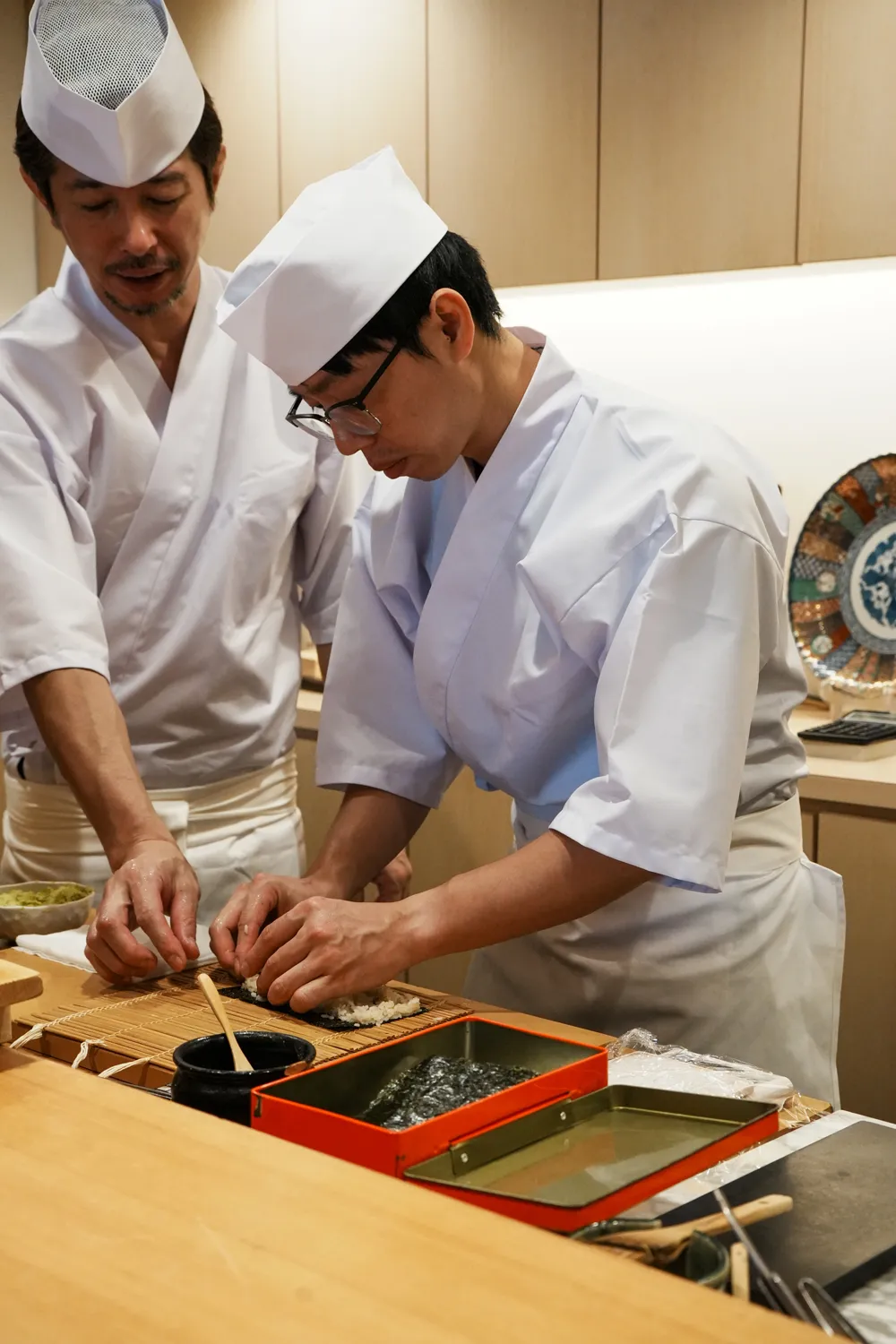
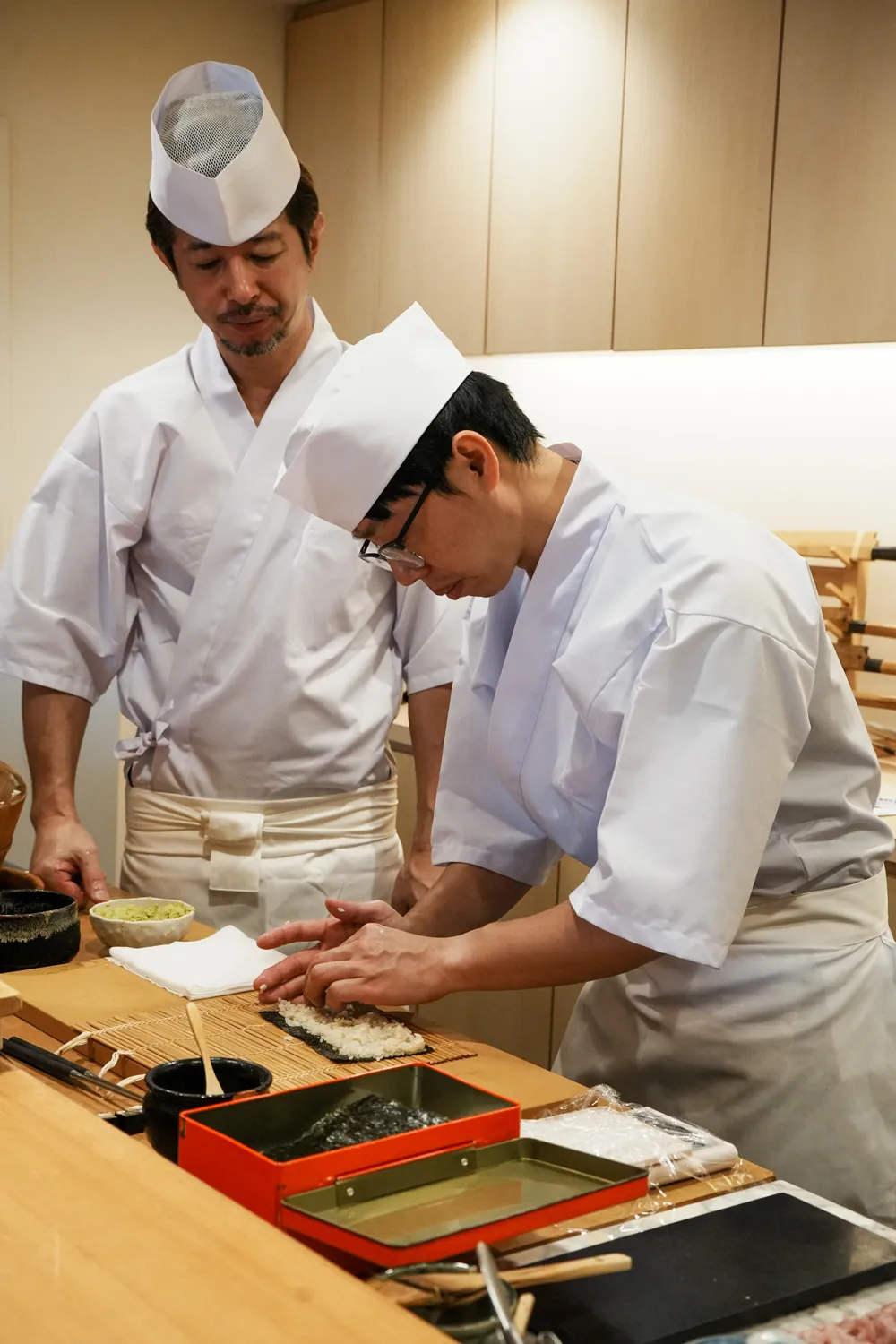
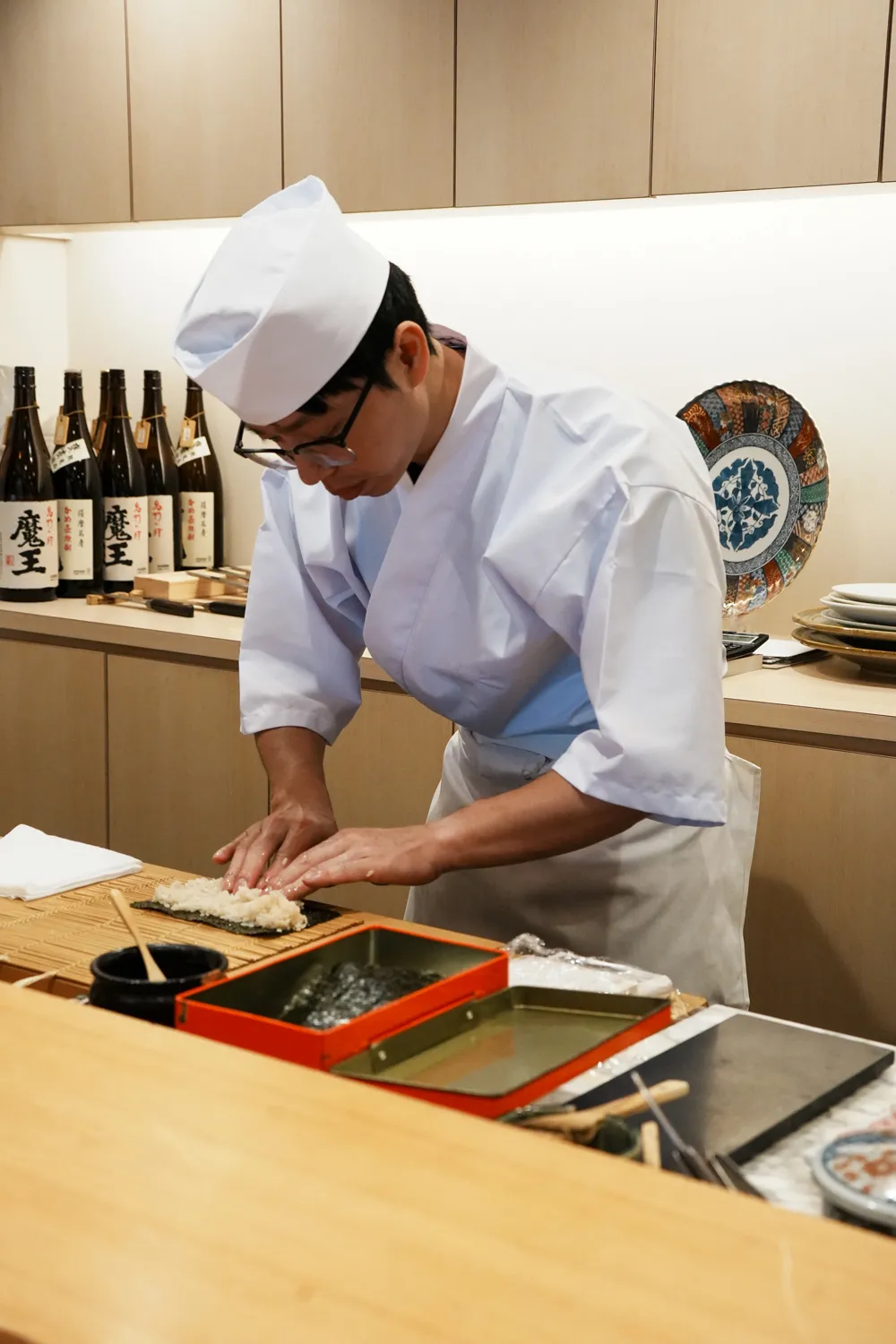
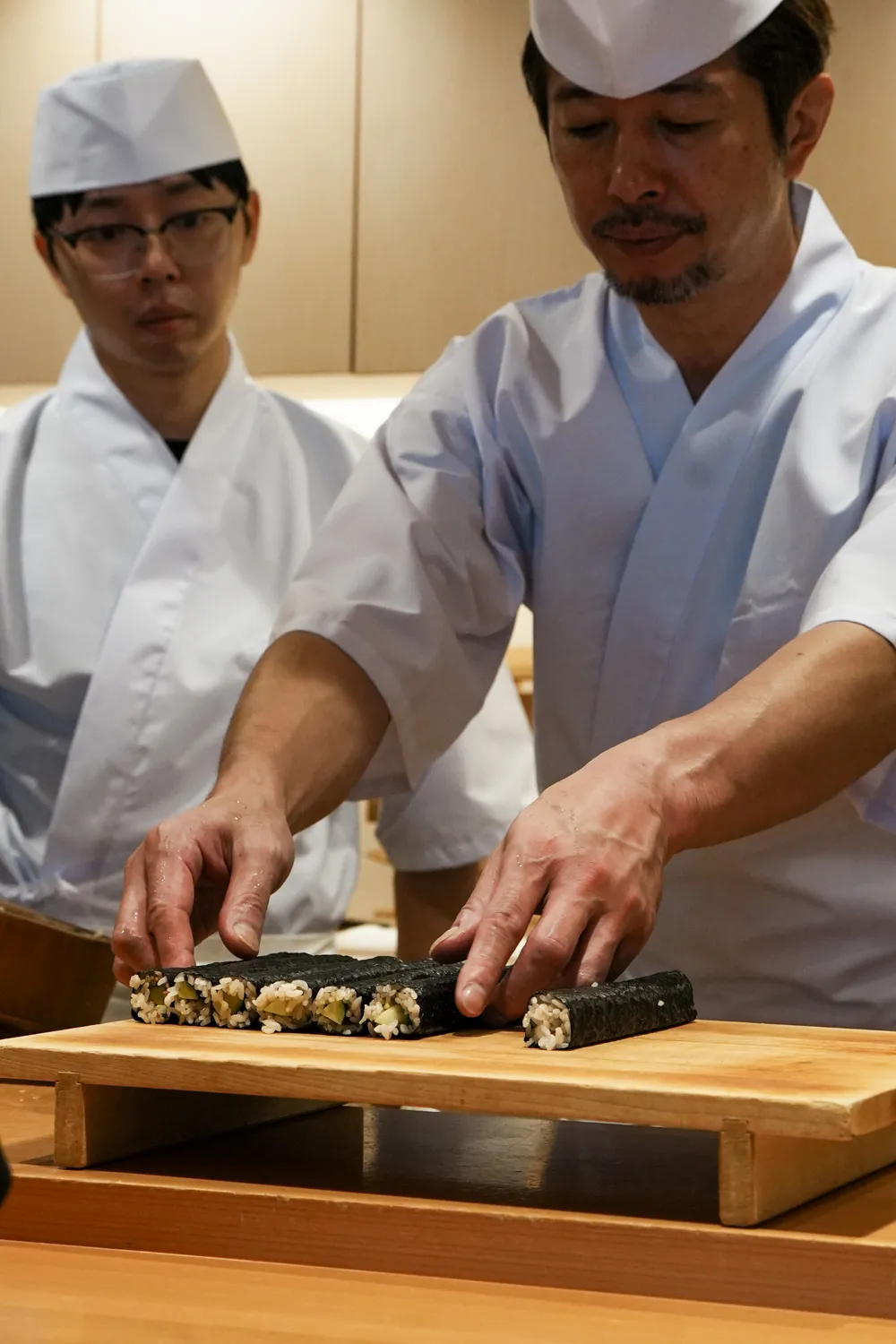
Next on the agenda was a lesson in makimono, or the art of making sushi rolls, starting with hosomaki, the thin sushi rolls. The student learned the entire process of crafting sushi rolls. This involved the precise steps of cutting dried seaweed sheets to the correct size, assembling the seaweed sheet and bamboo mat correctly, evenly spreading sushi rice over the seaweed, arranging the ingredients meticulously, and finally, mastering the rolling technique. The student encountered challenges, notably in achieving a uniform spread of sushi rice over the seaweed due to tense hands. Once he overcame this obstacle, he faced the intricate task of achieving an even roll. To refine his technique, he closely observed the instructor, posed numerous questions, and dedicated himself to continuous practice and improvement.
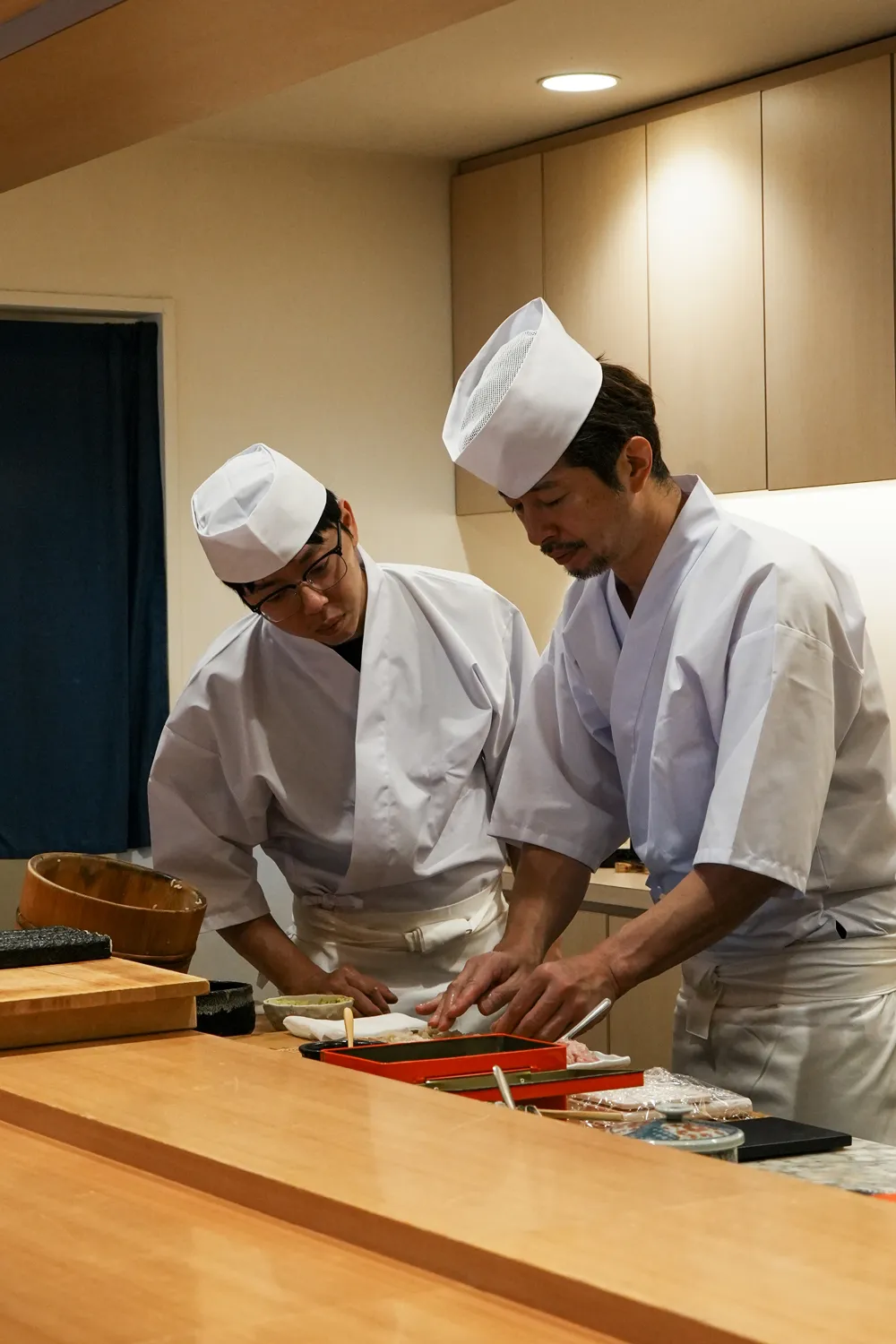
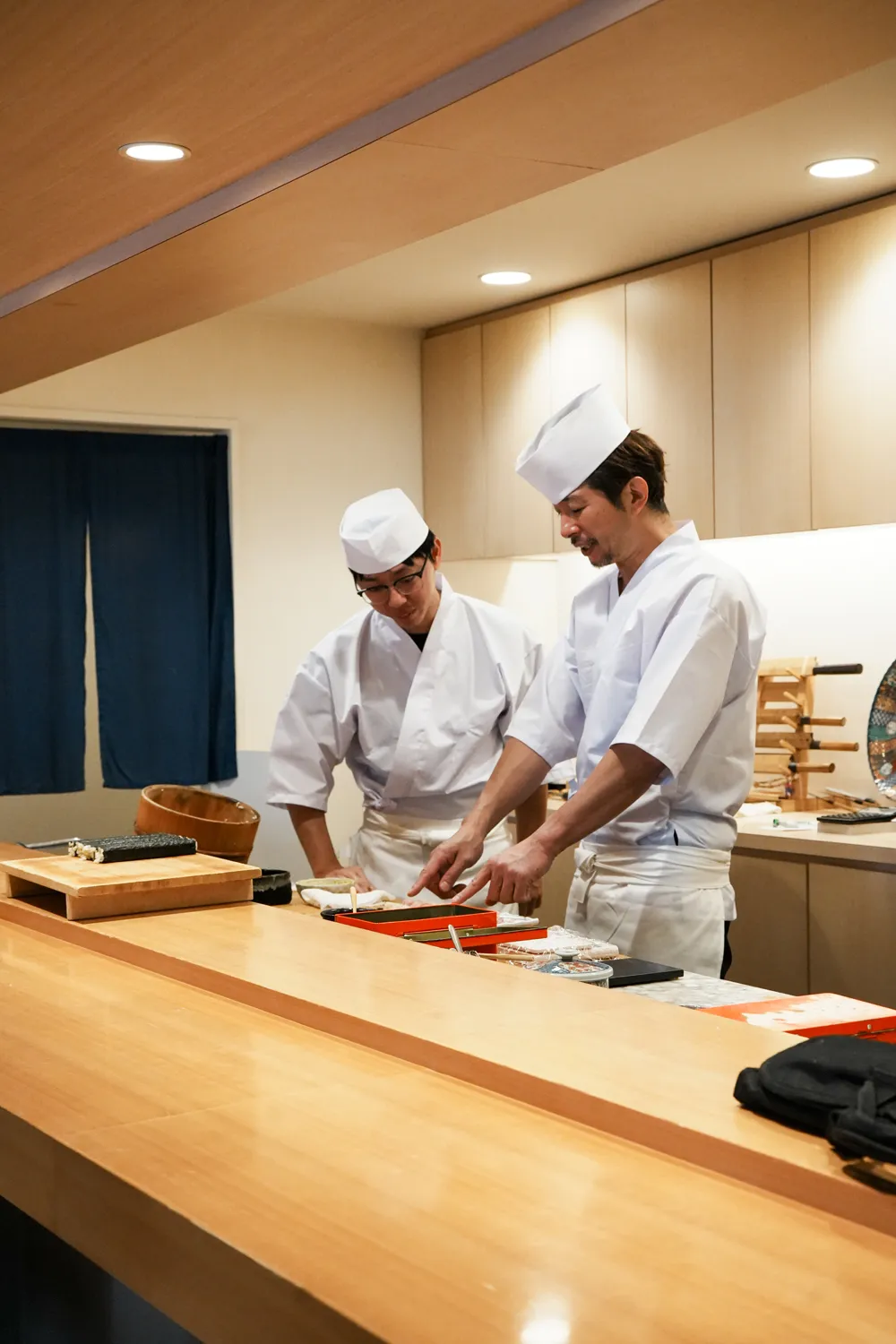
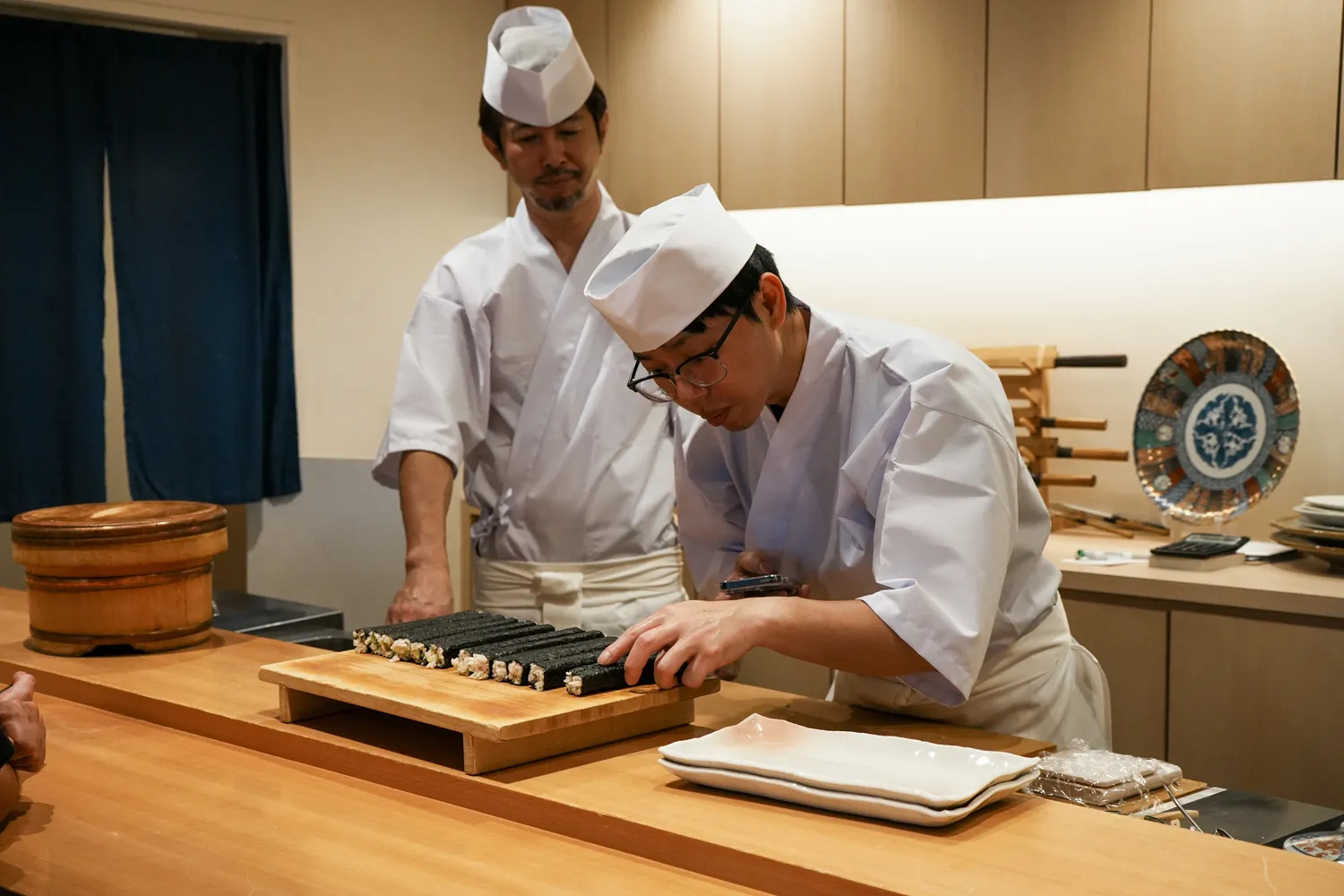
He crafted numerous thin sushi rolls, but there was something that left him unsatisfied. In his quest for improvement, he reached out to the instructor with many questions and closely observed the instructor’s precise movements. Through relentless and repetitive practice, he began to make noticeable progress in the art of sushi roll-making.

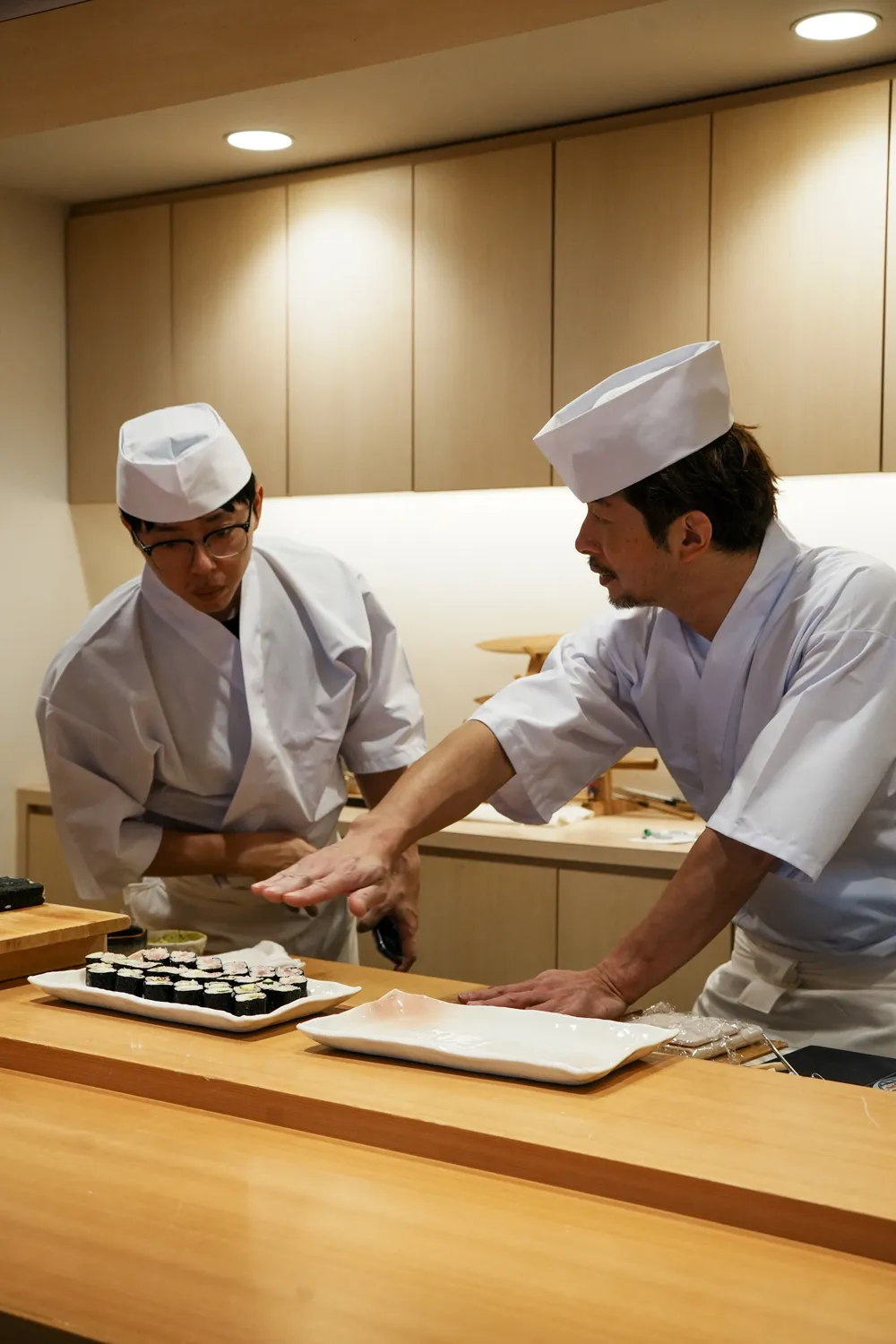


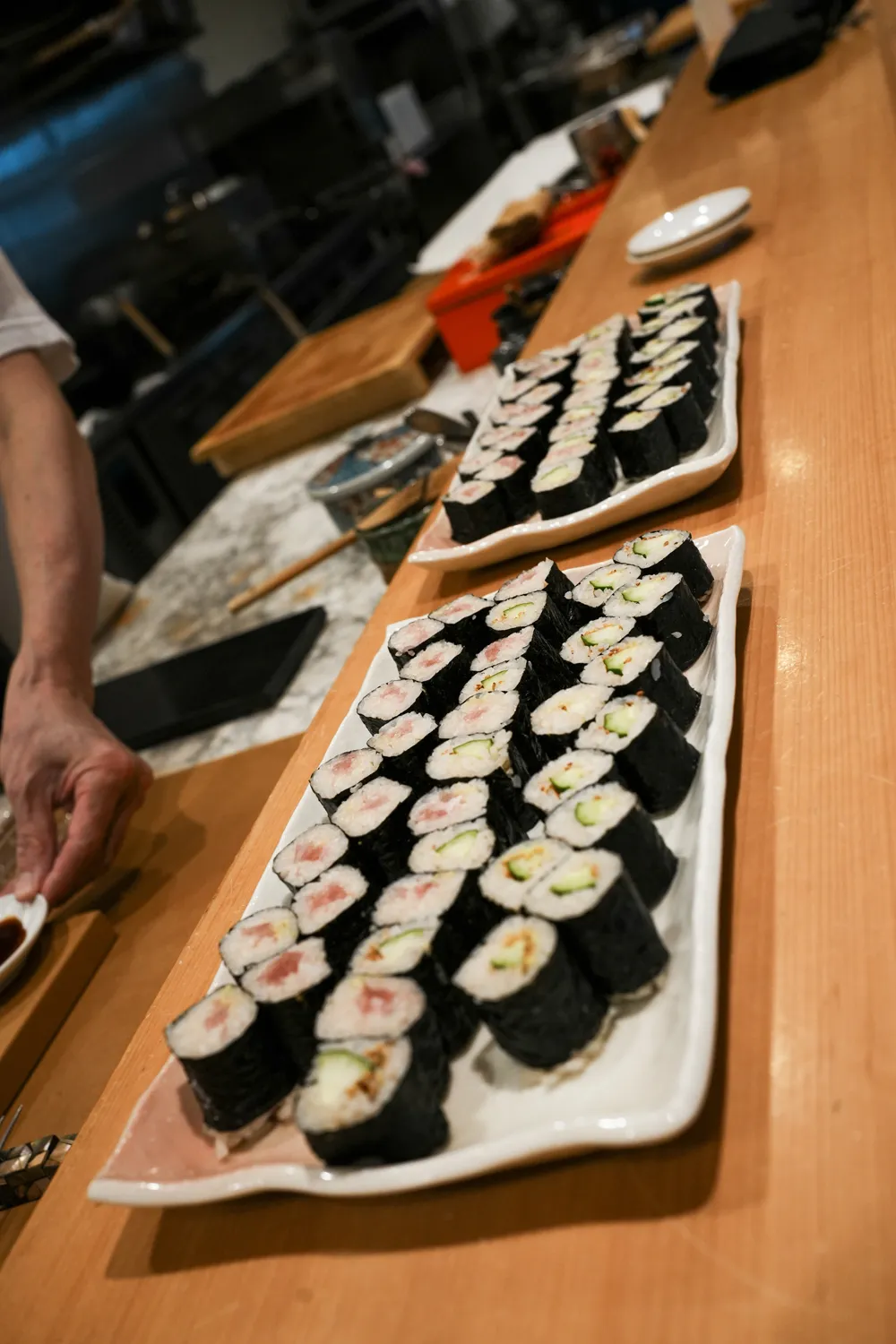
After successfully crafting a sushi roll, the next challenge was to slice it into evenly-sized pieces and present them. A crucial aspect he needed to pay close attention to was ensuring that each piece had a consistent height, which proved to be quite demanding. Under the guidance of the instructor, he acquired the skills to identify the precise points for slicing the sushi roll into uniformly-sized portions and how to handle the kitchen knife with precision.
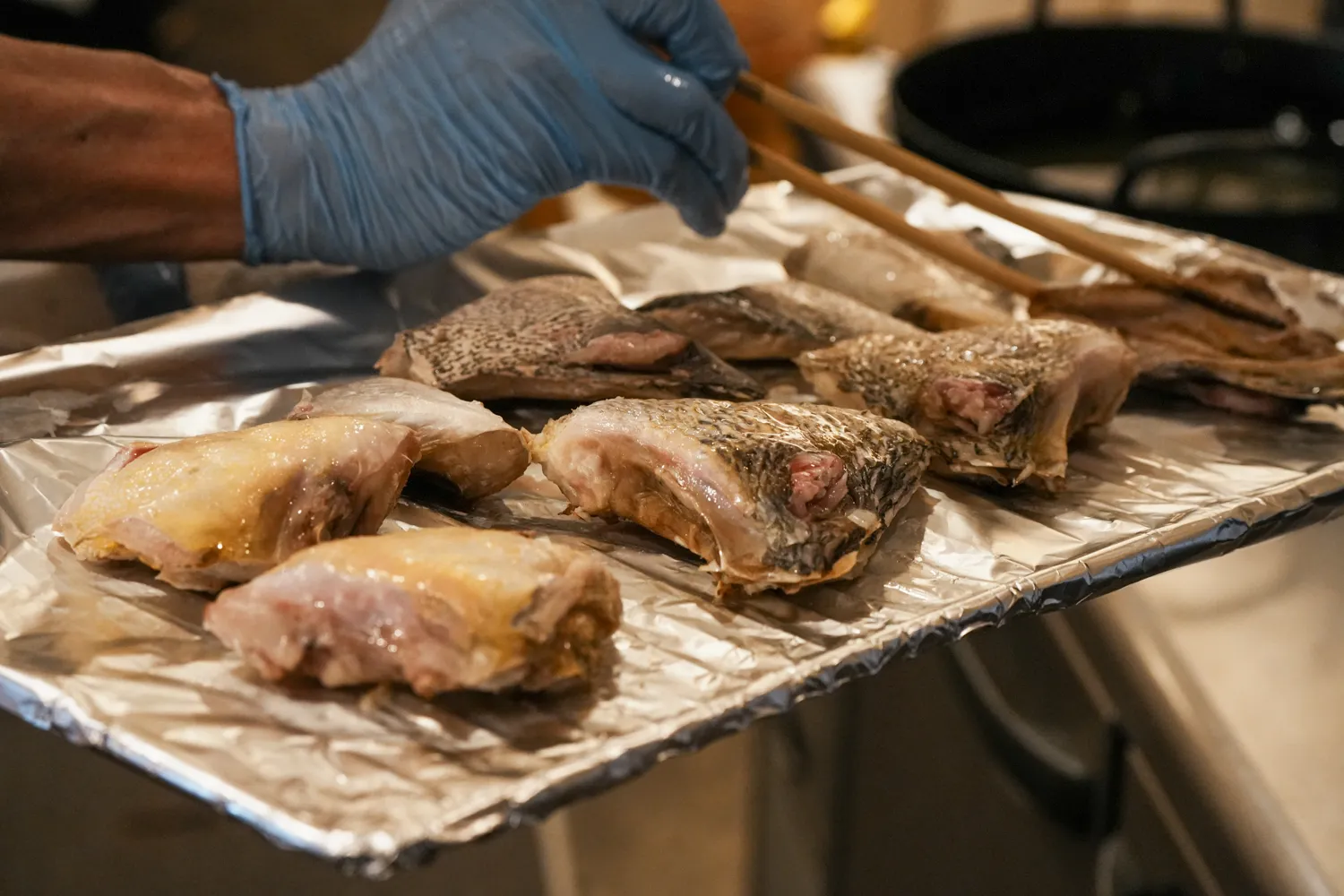

The instructor also provided a demonstration on the process of grilling fish for him.

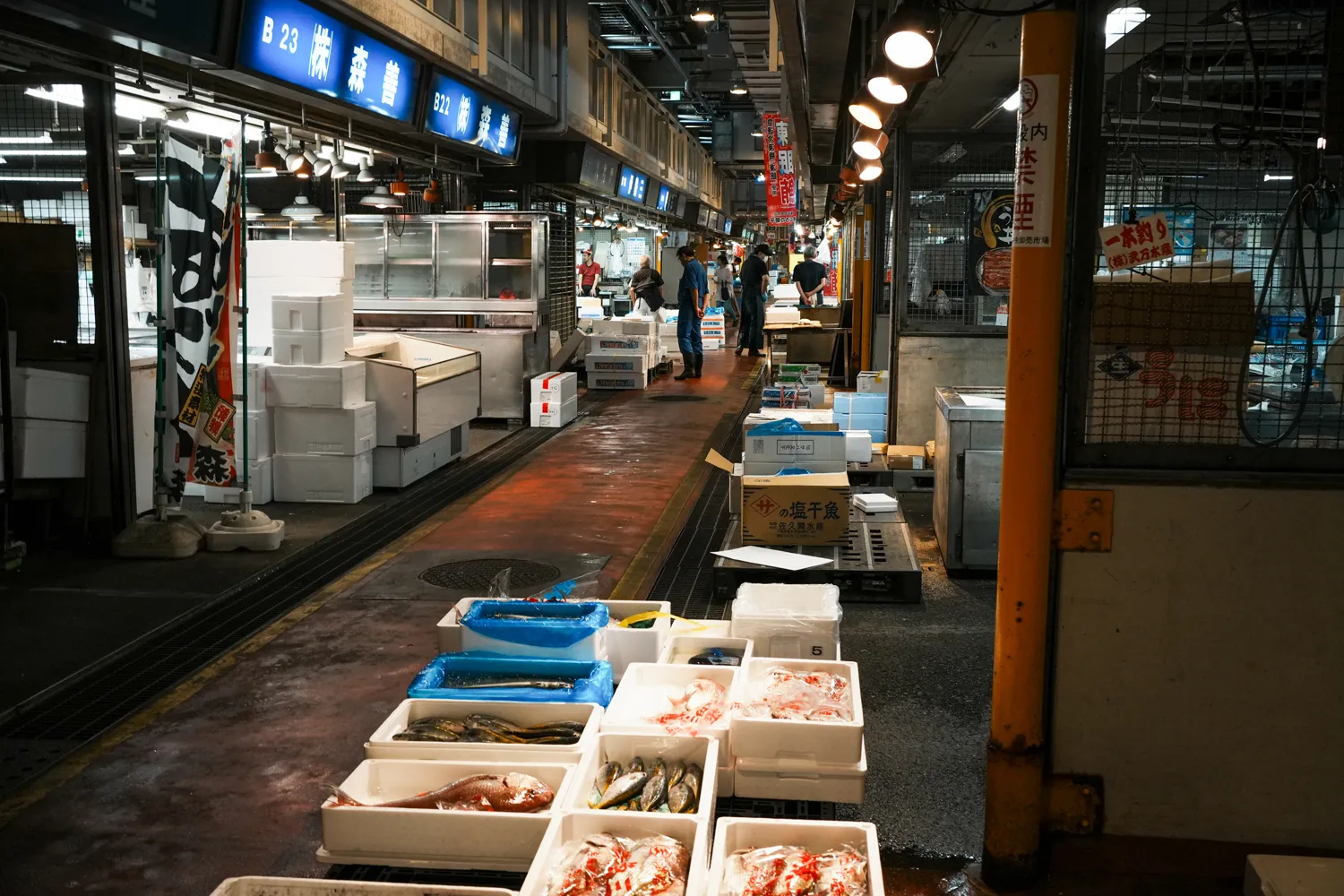
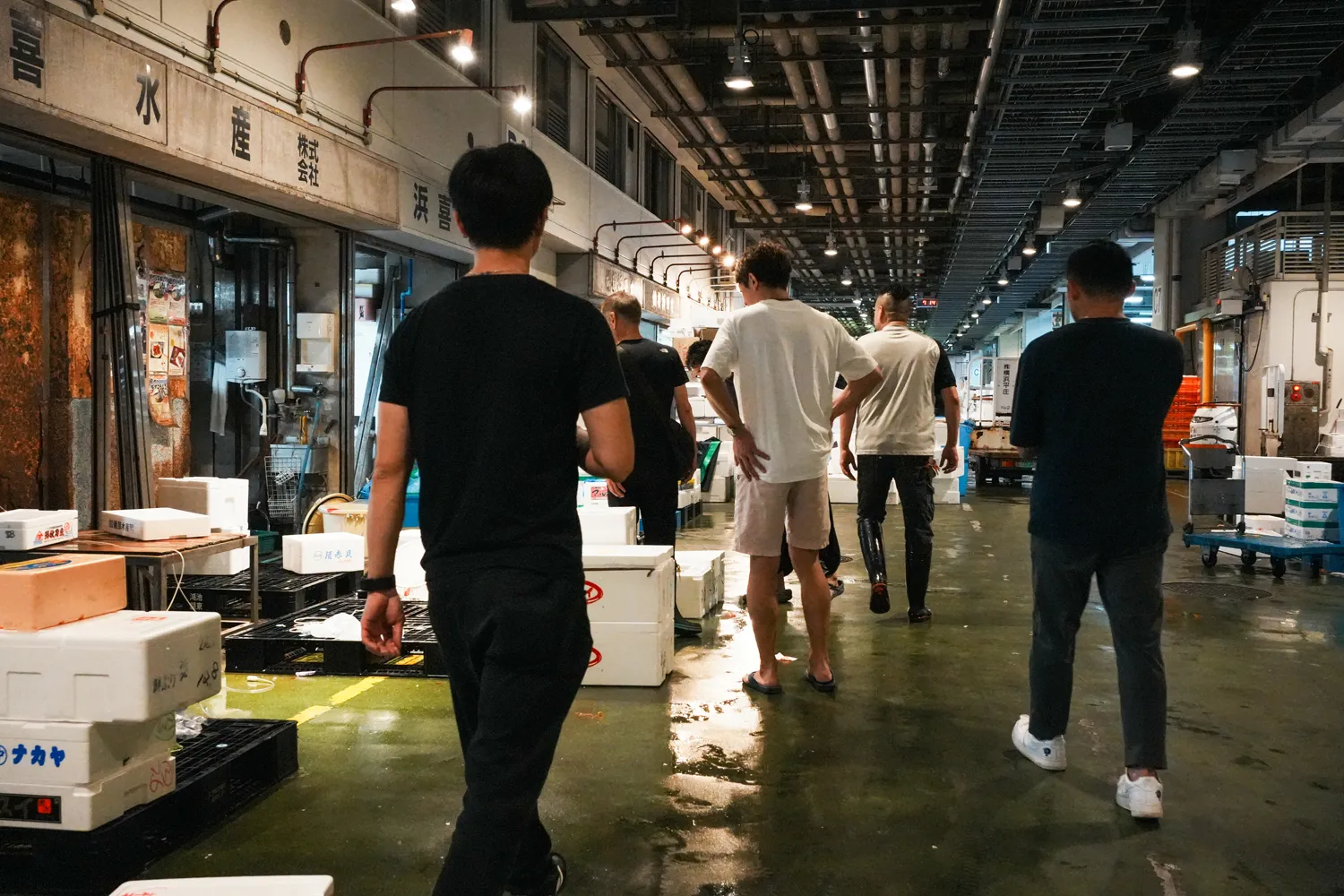
On the following day, we embarked on a field trip to the Yokohama City Central Wholesale Market. The student was particularly enthusiastic about this visit, as it was his first time exploring the market.
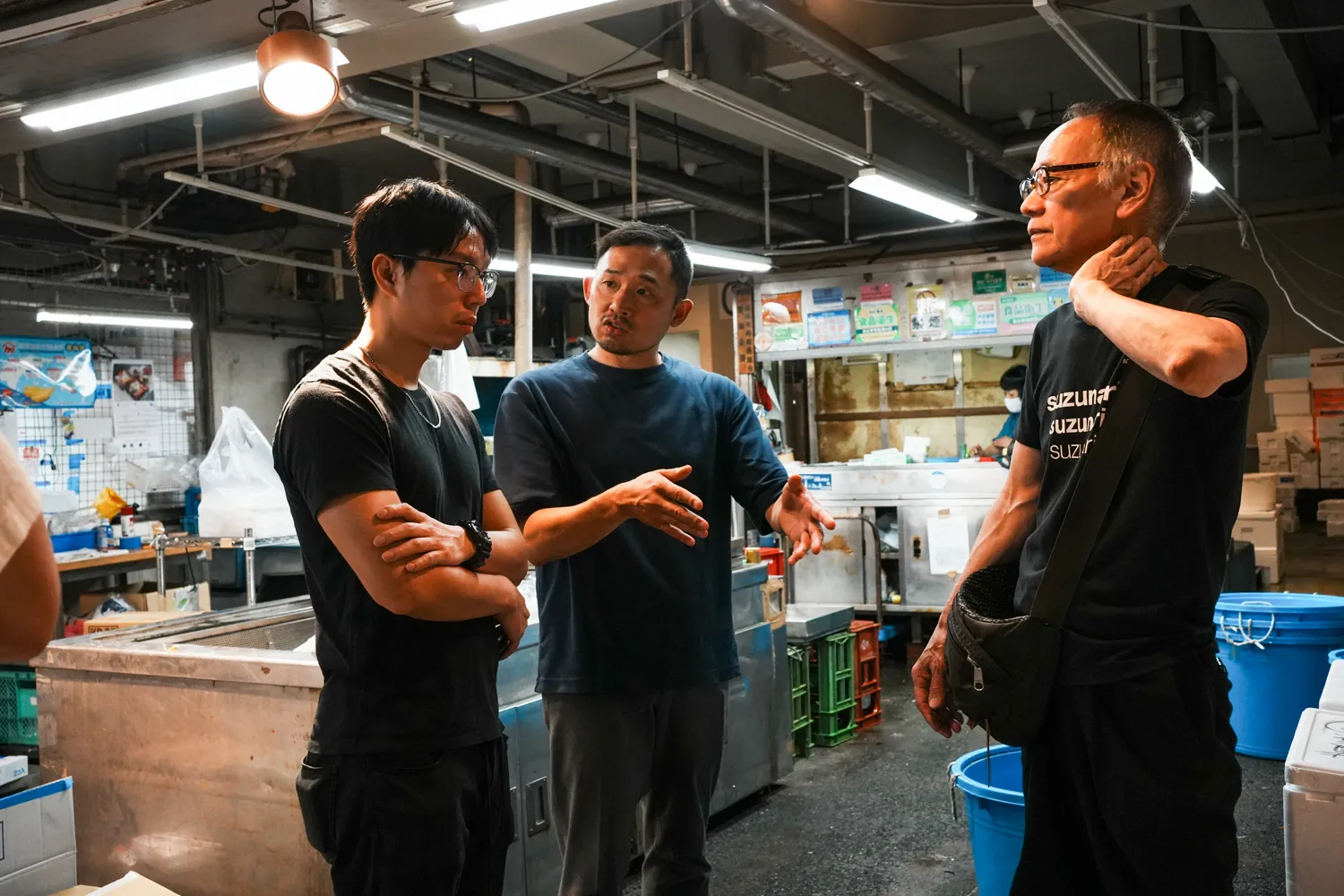
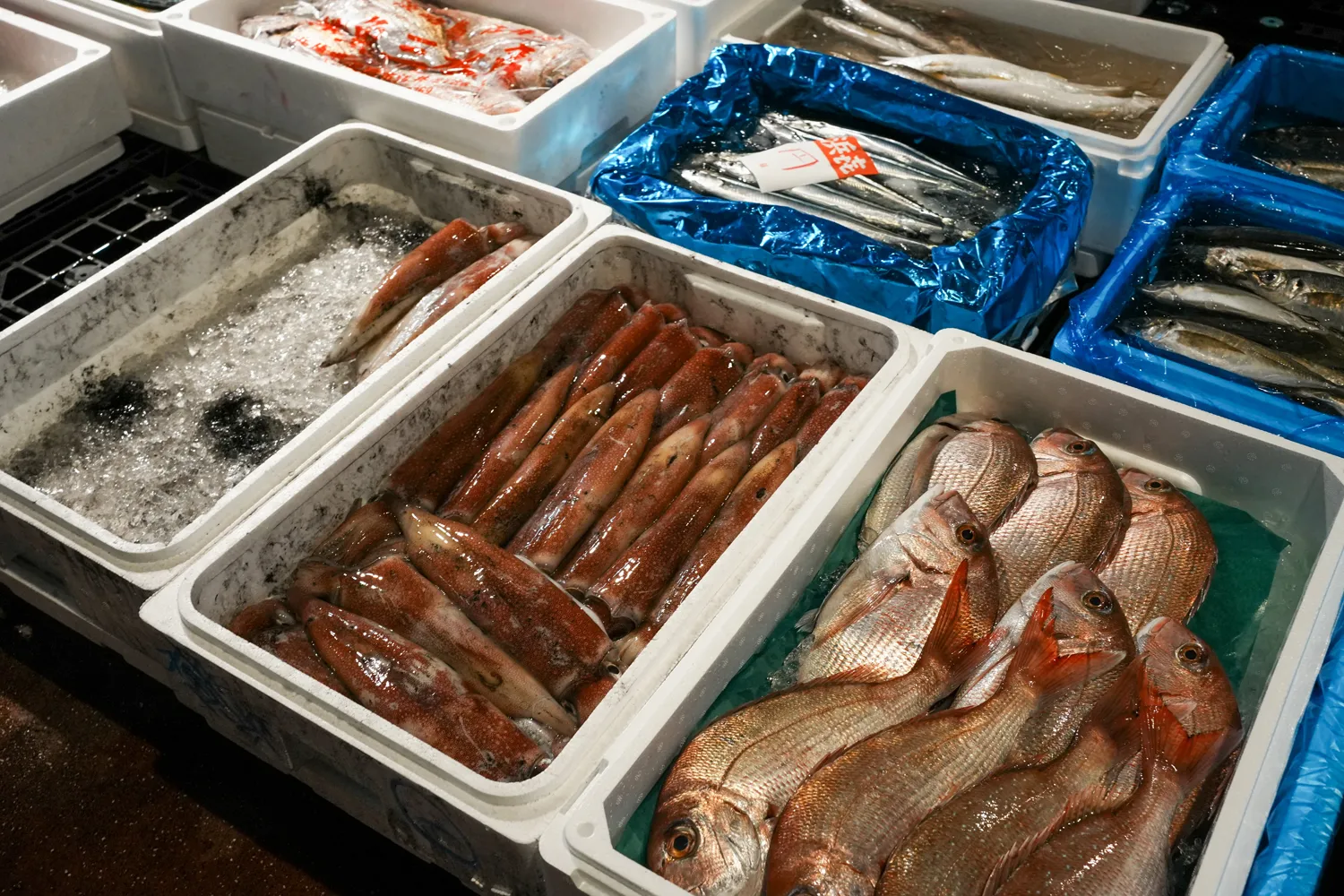
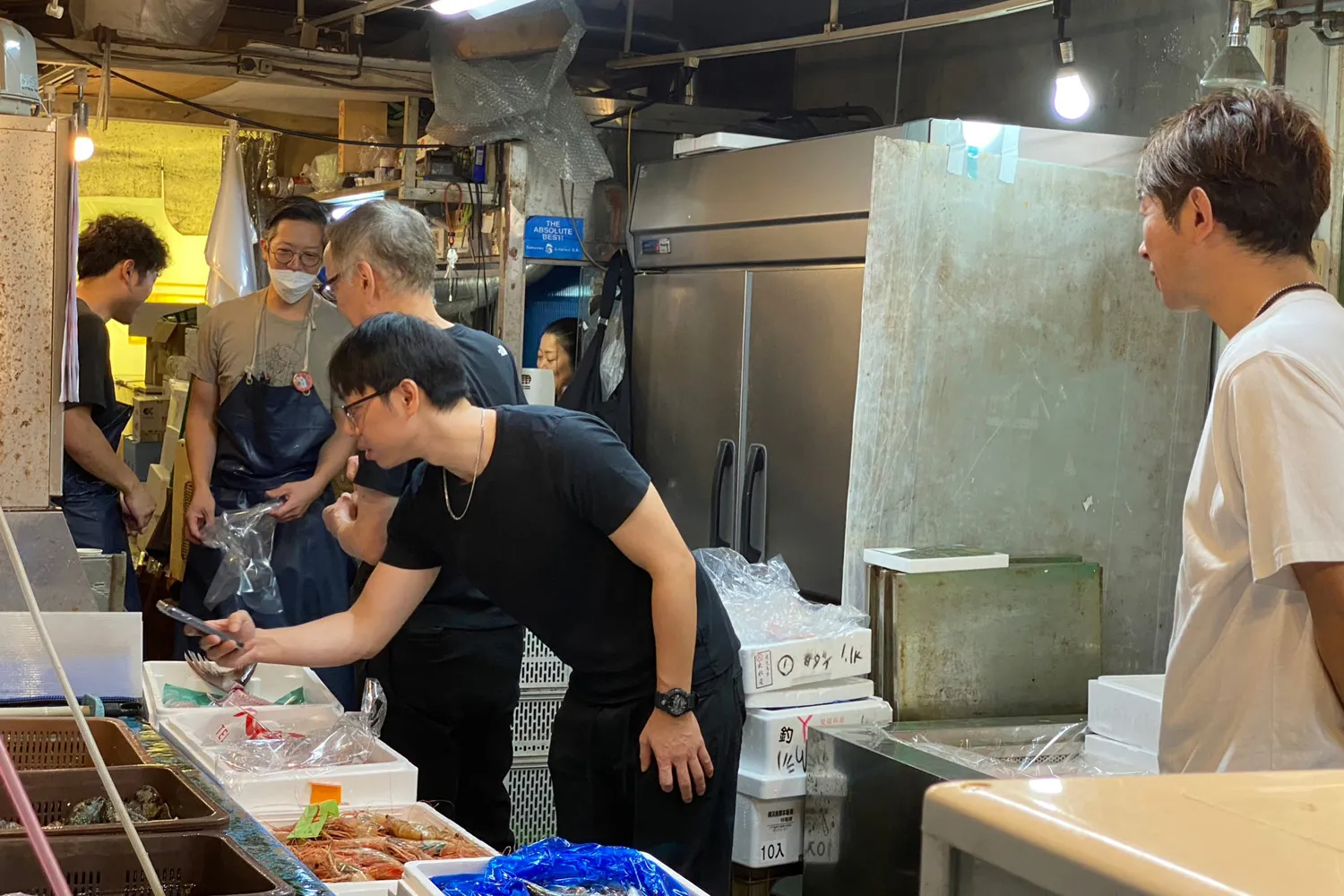
While at the market, the student engaged the instructor with a large number of questions. He inquired about the types of fish delivered to the market, the distribution process to sushi restaurants and customers, the seasonal availability of various fish, their identities, and the ideal cooking methods. The abundance of unfamiliar fish at the market continually surprised him, leaving him in a state of wonder.



The student provided valuable assistance to the instructor, as they intended to work together to cut up and trim the freshly acquired fish during the upcoming lesson. Following this, he accompanied the instructor to buy supplies for the sushi restaurant and even managed to pick up a souvenir for himself along the way.
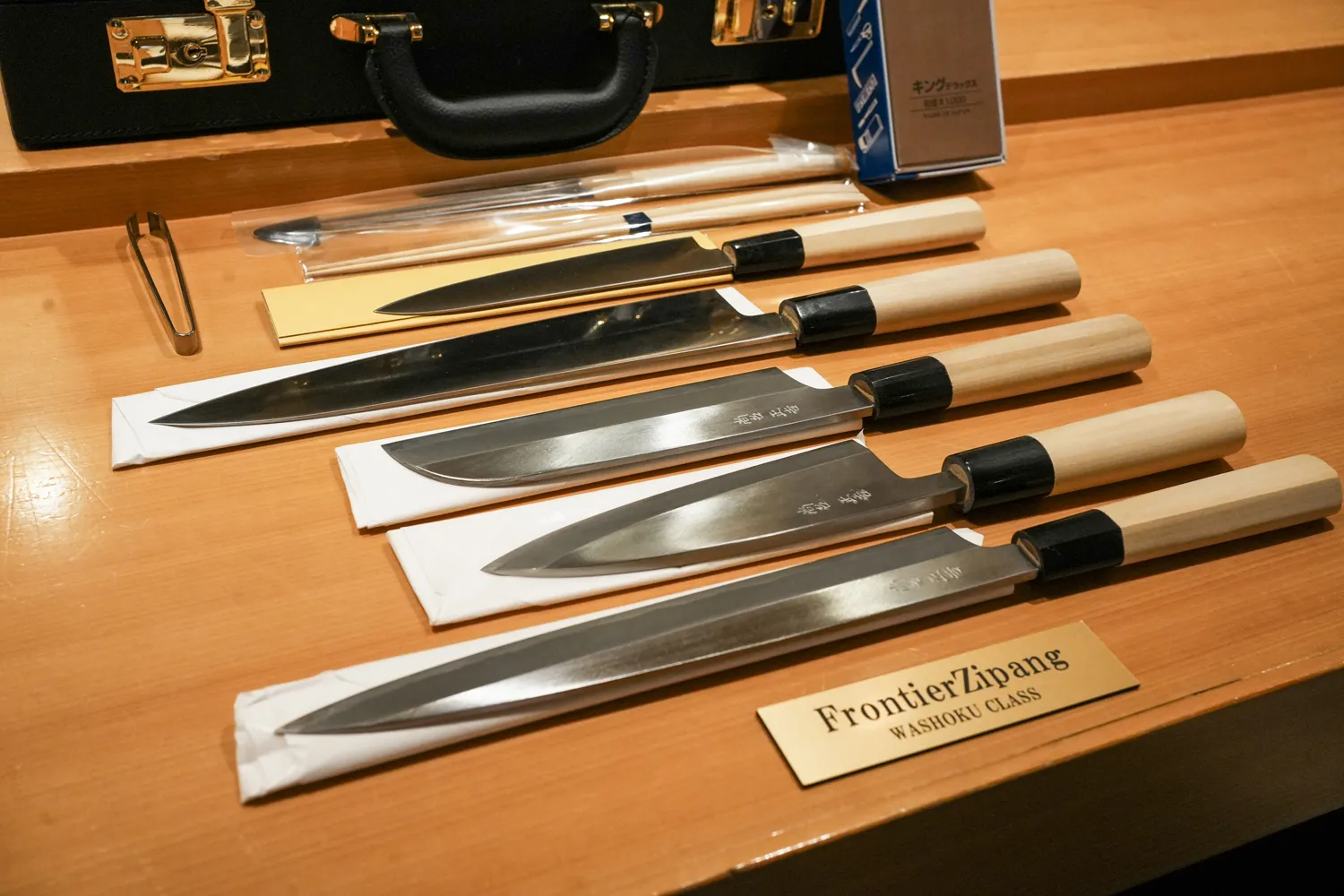
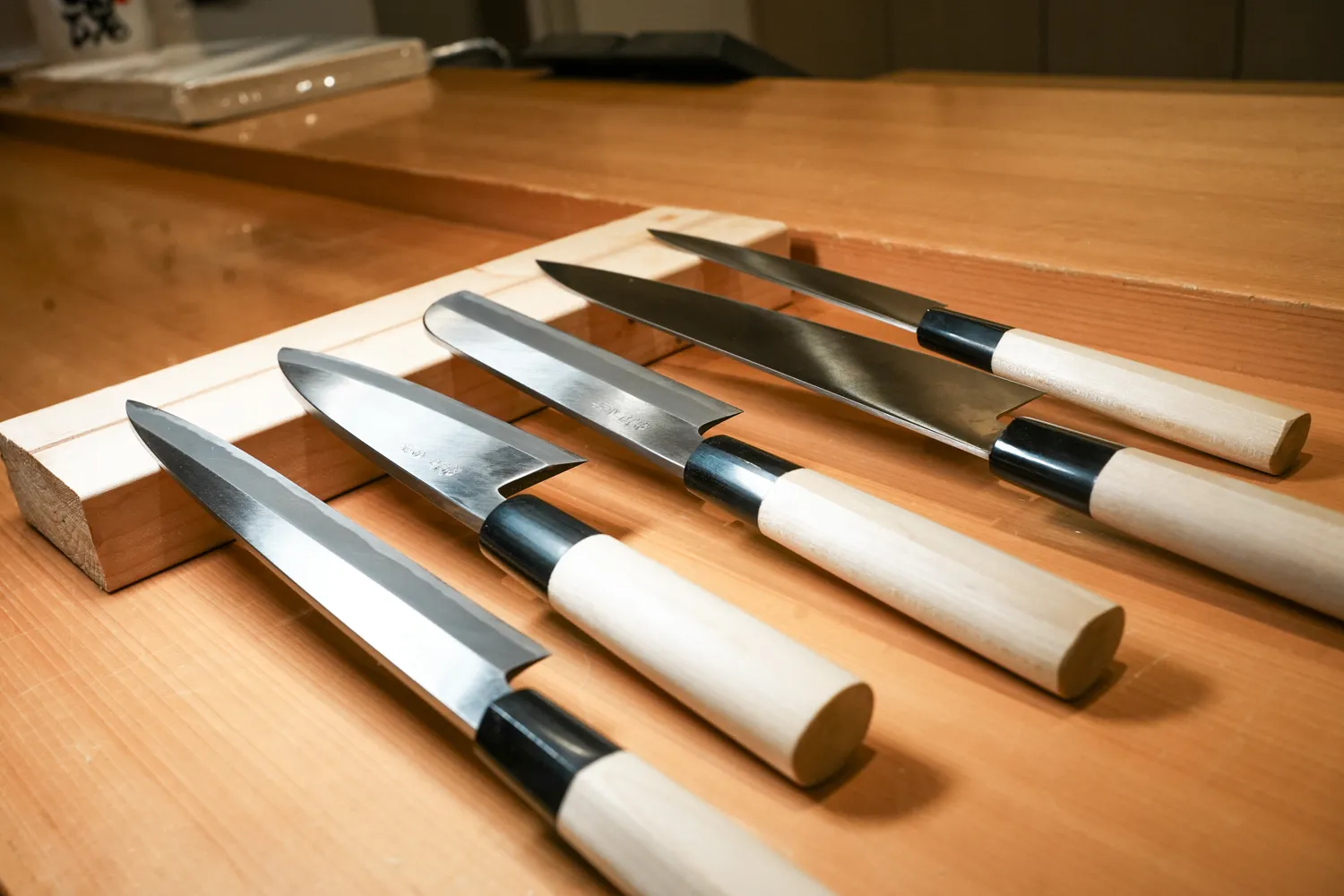

By the way, we offer a set of Japanese kitchen knives that our students can acquire at an exceptionally reasonable price, if they wish. These kitchen knives come highly recommended by our experienced sushi artisan instructors. So, why not consider getting one for yourself? I’m even thinking of getting a set for myself!
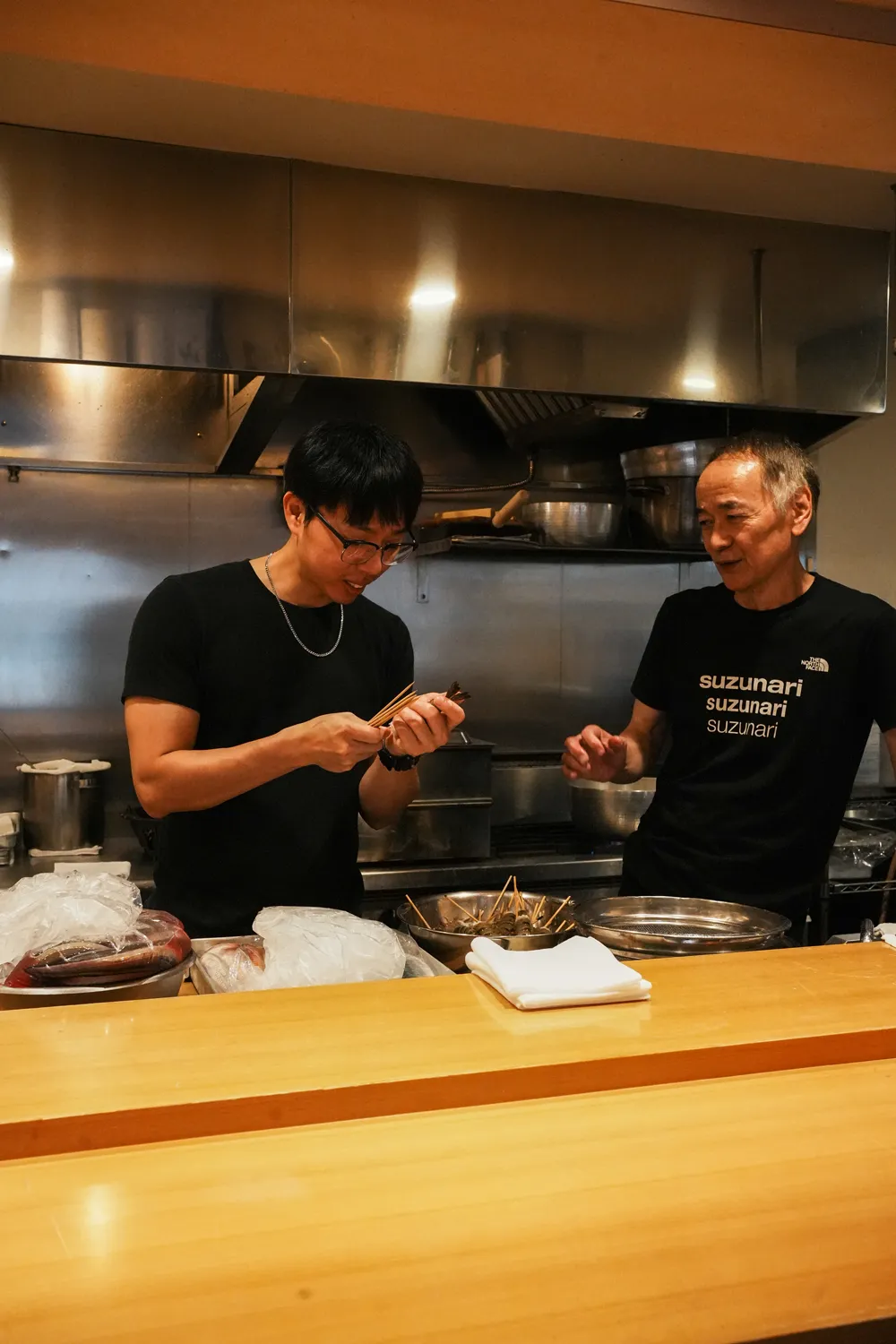
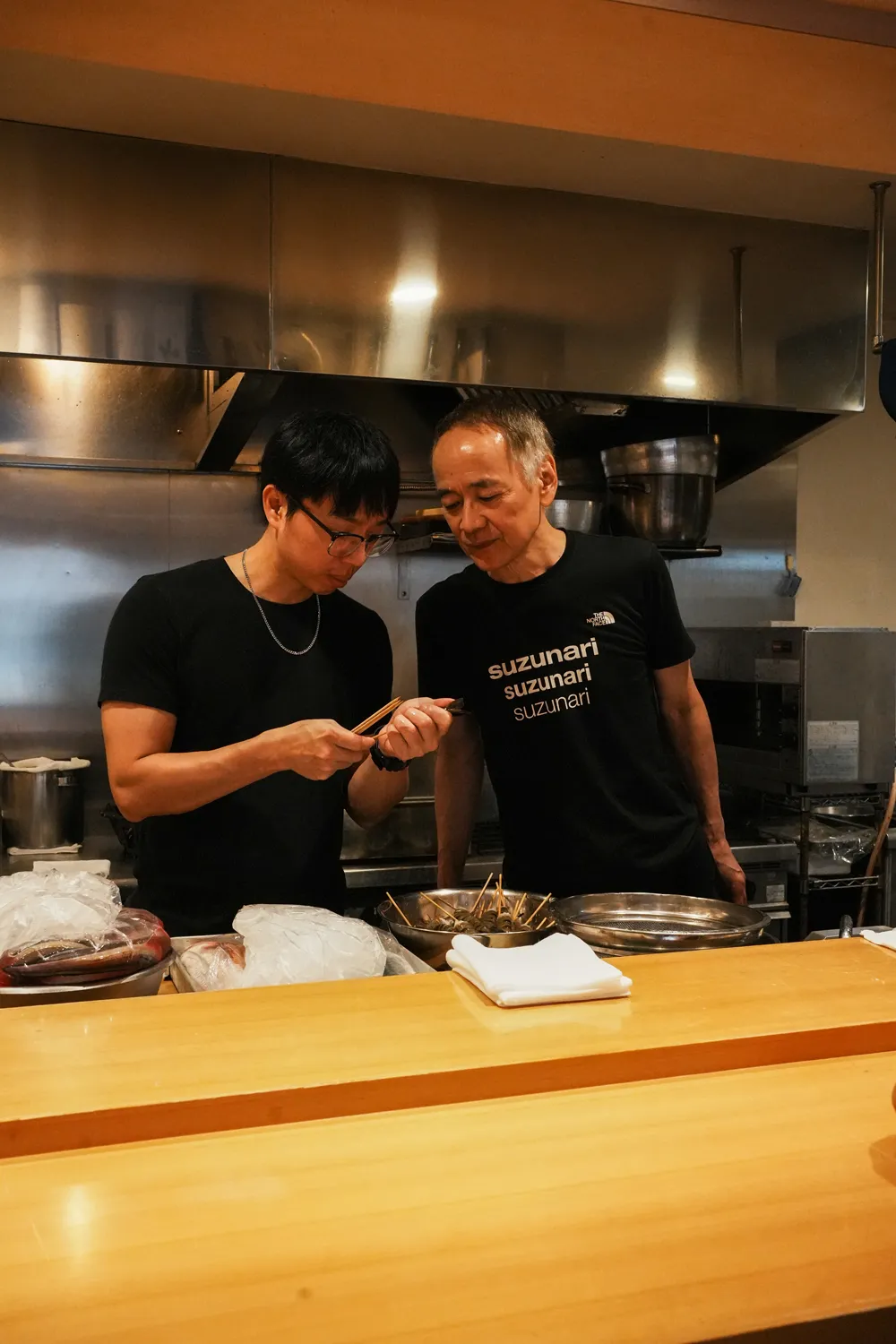
The next topic at hand was the preparation of shrimp for sushi toppings. To ensure they don’t become distorted during simmering, it’s necessary to skewer them properly. Inserting a skewer through the tight space between the shell and the flesh can be quite challenging, and it requires careful attention to avoid piercing the flesh unintentionally.
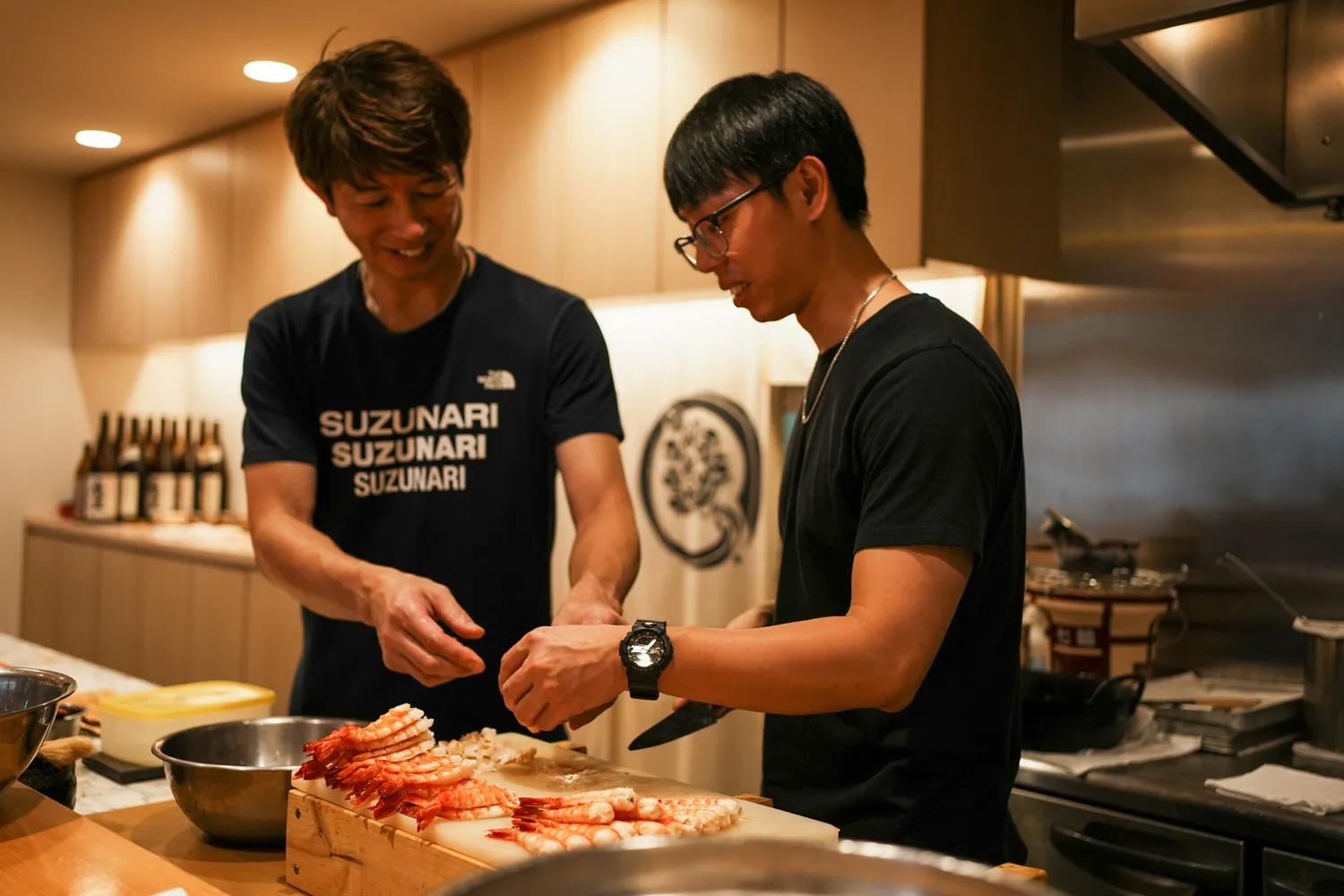
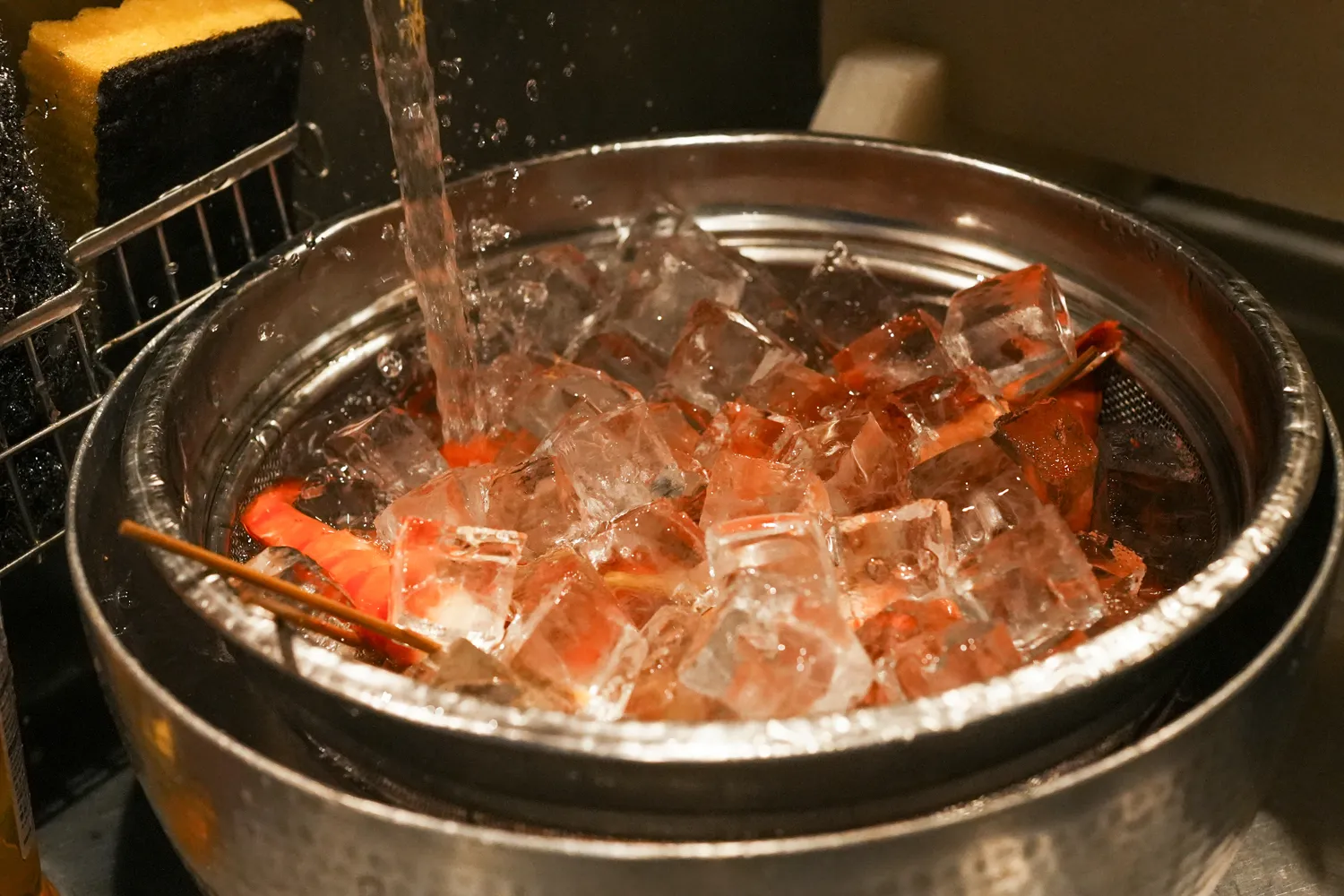
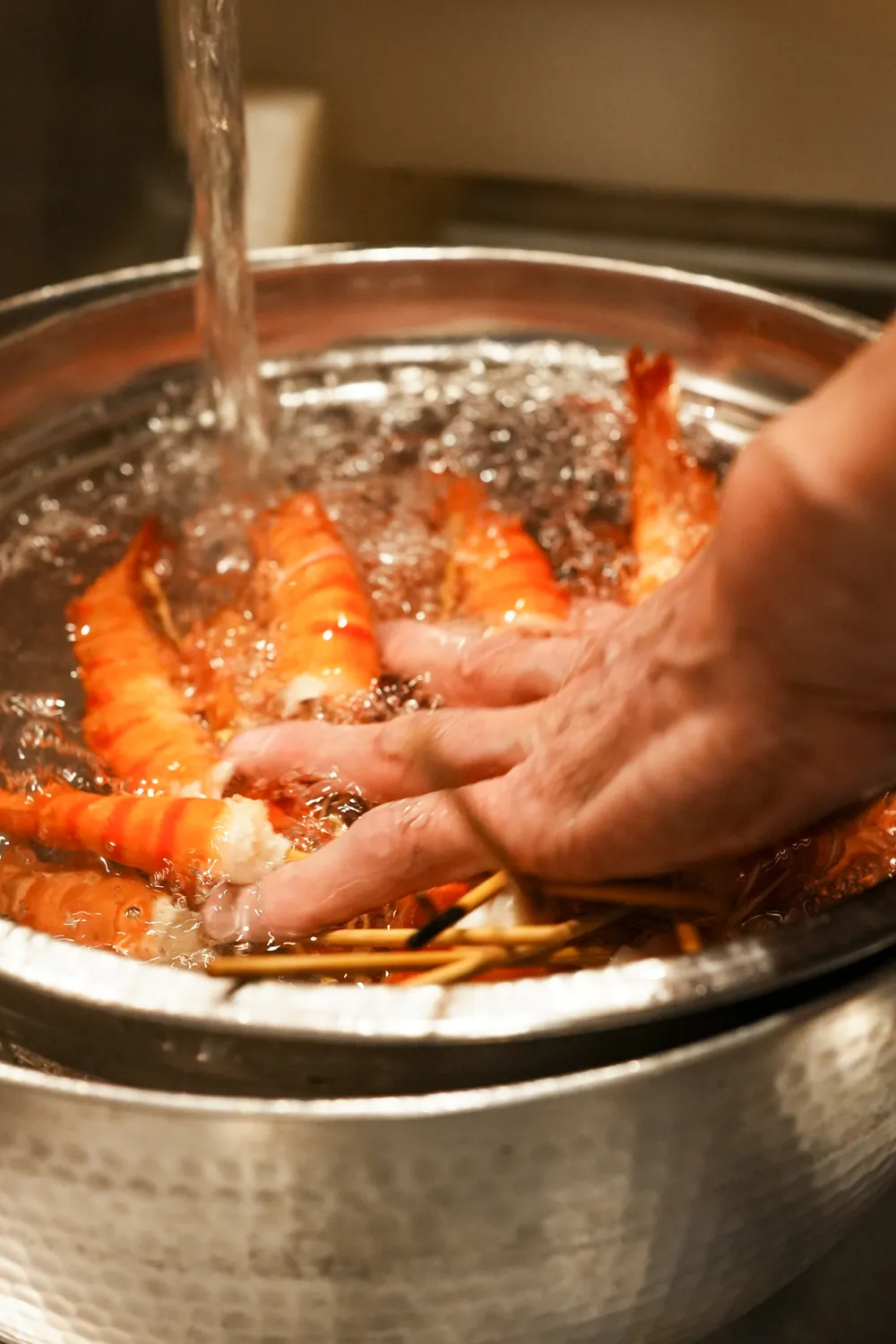
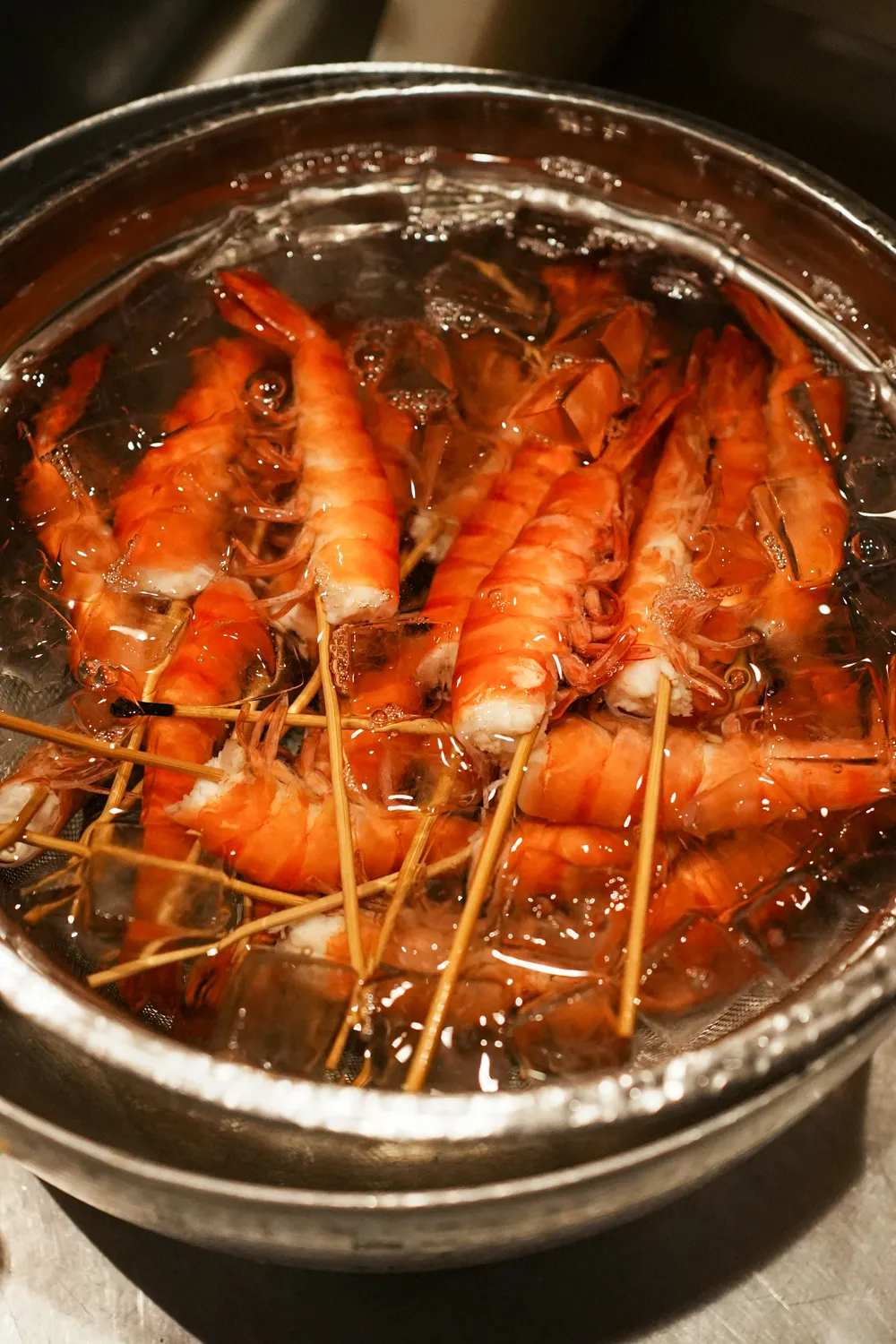
Following this, the simmered prawns need to be peeled. Submerging them in iced water makes the peeling process much easier.
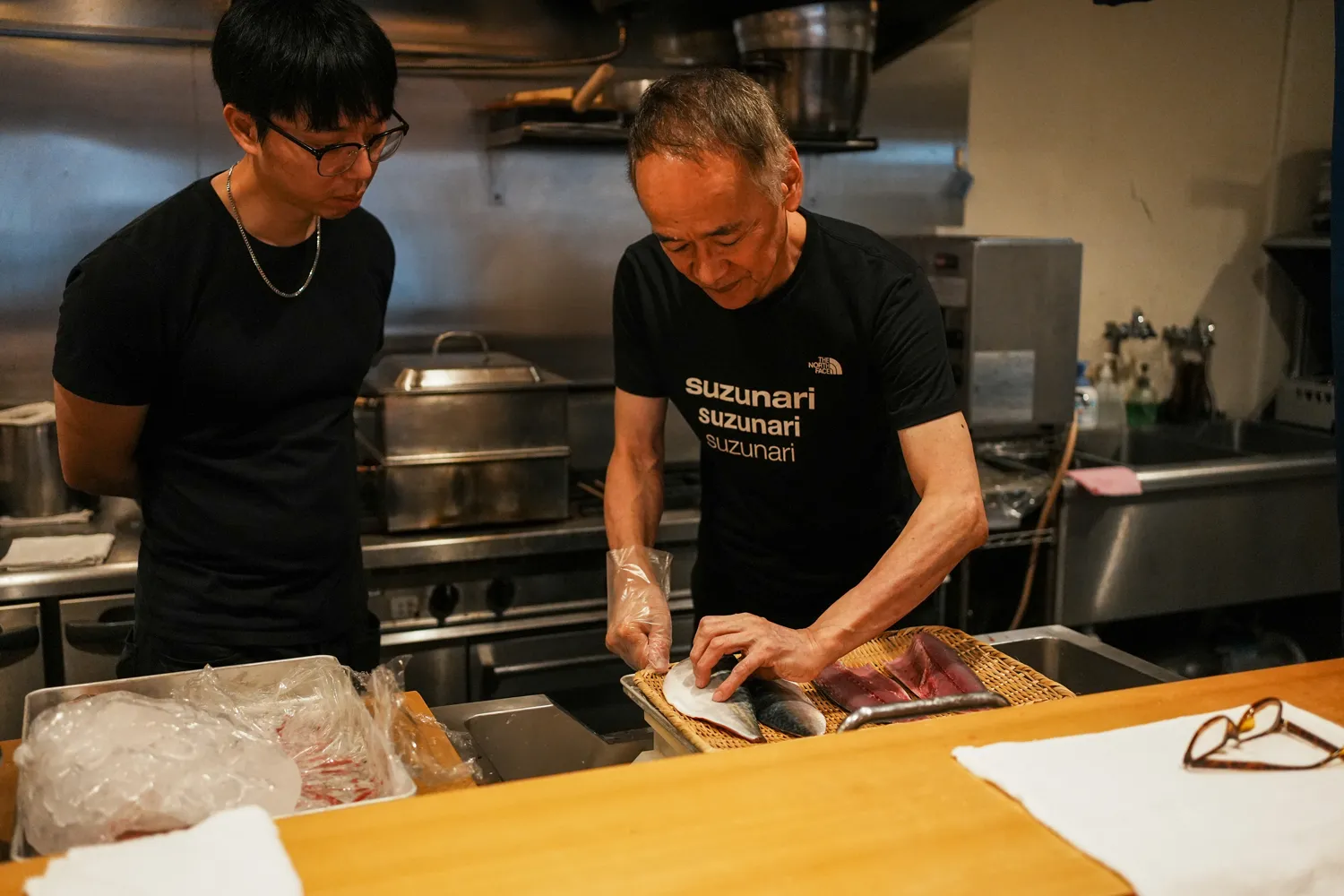

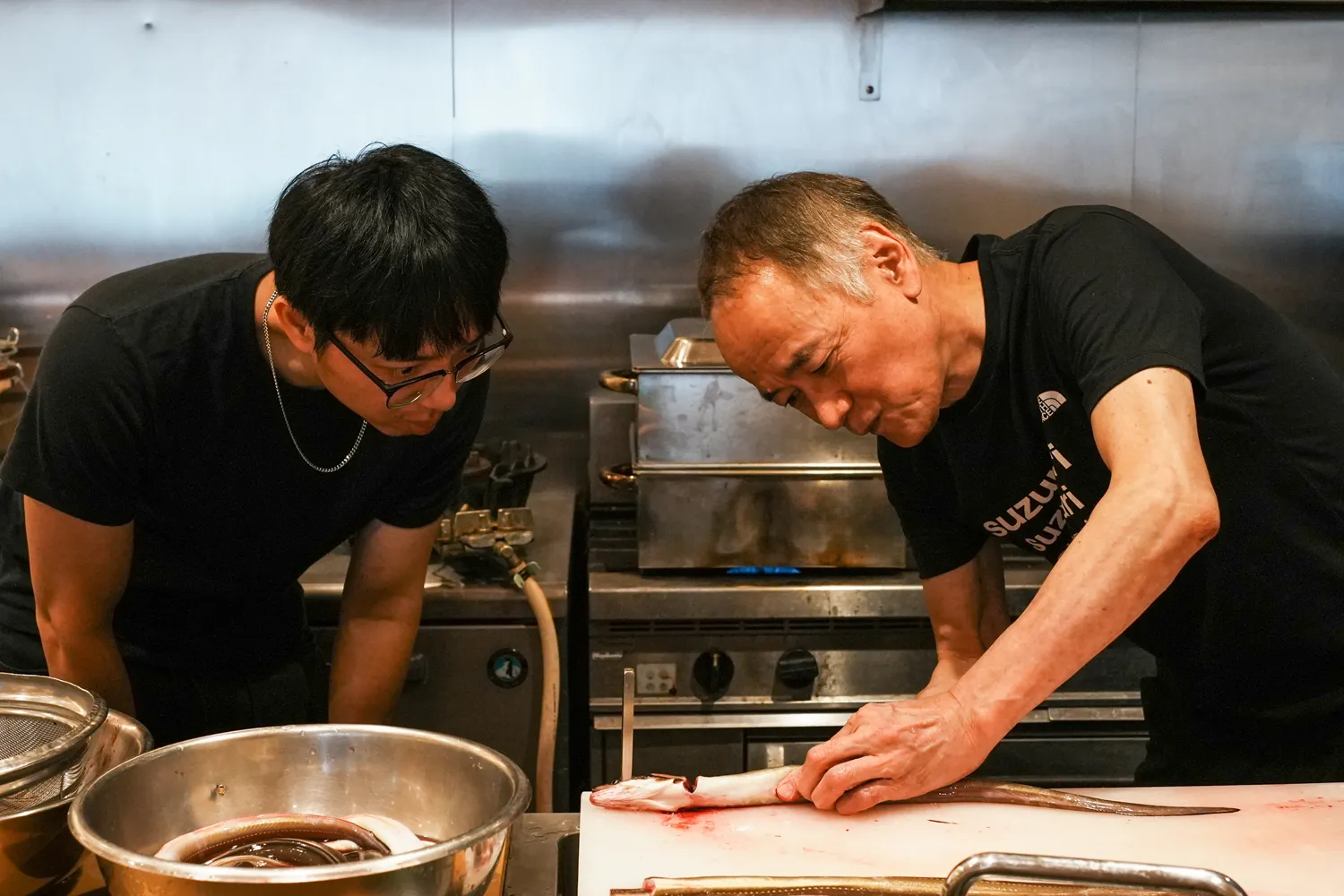

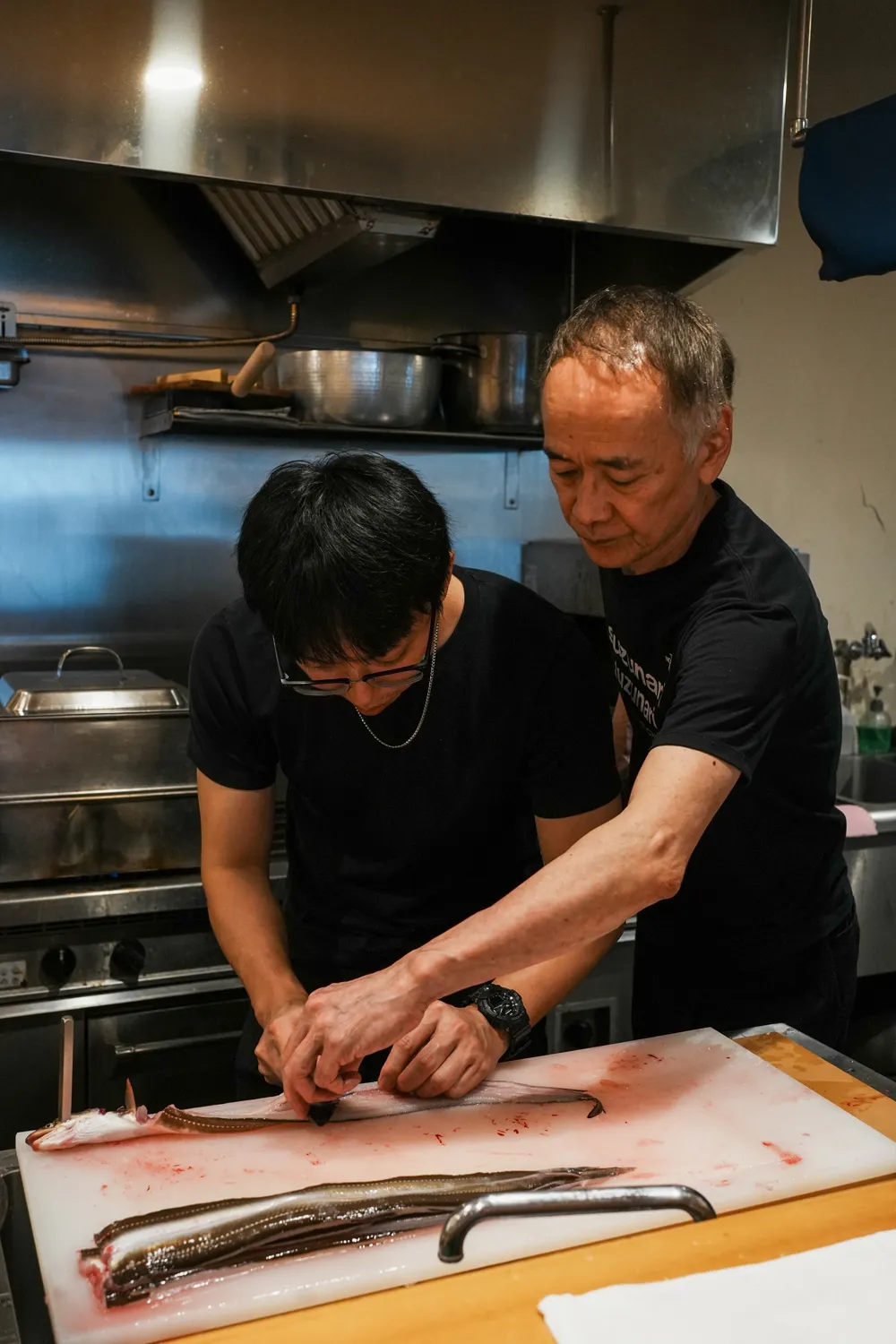
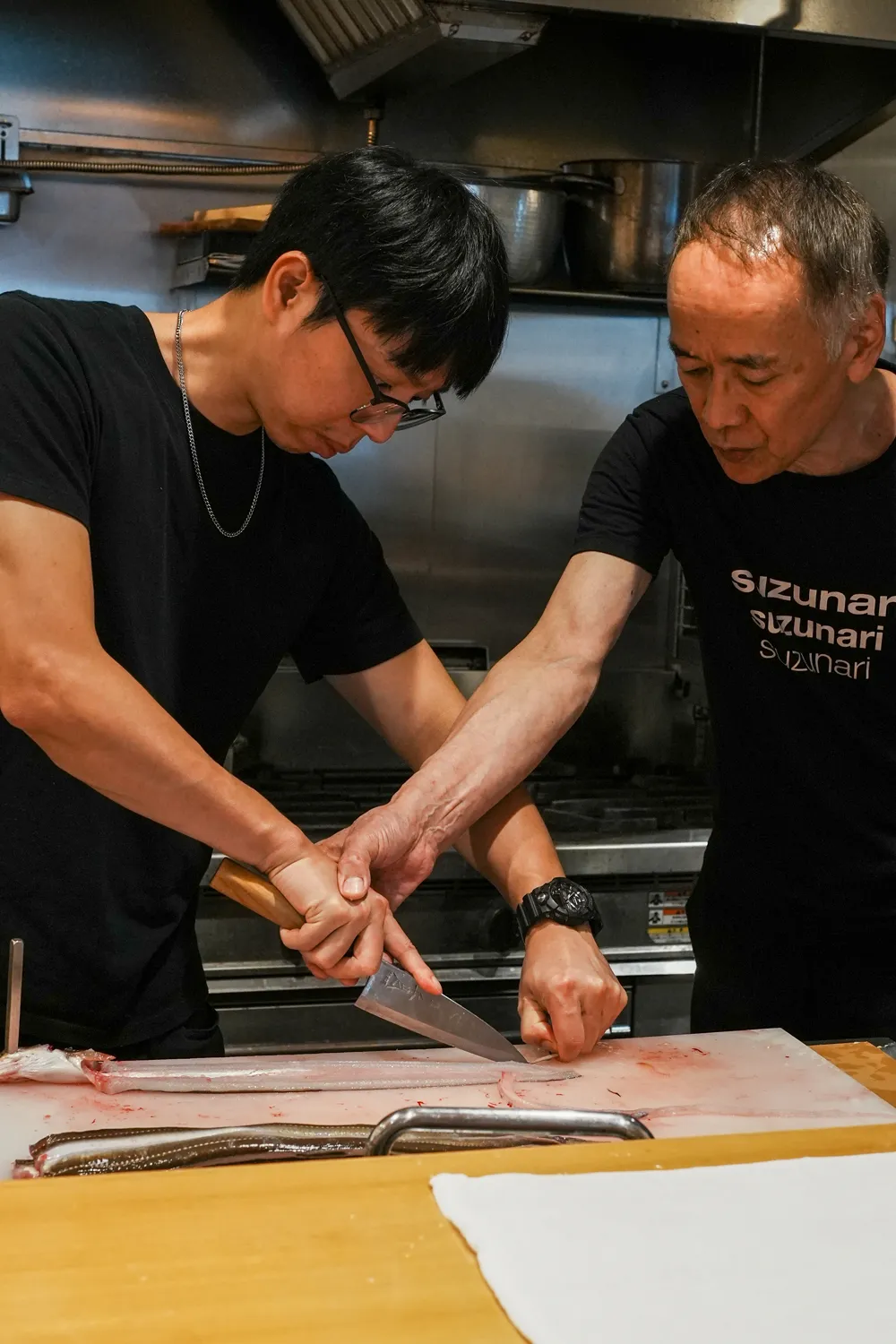
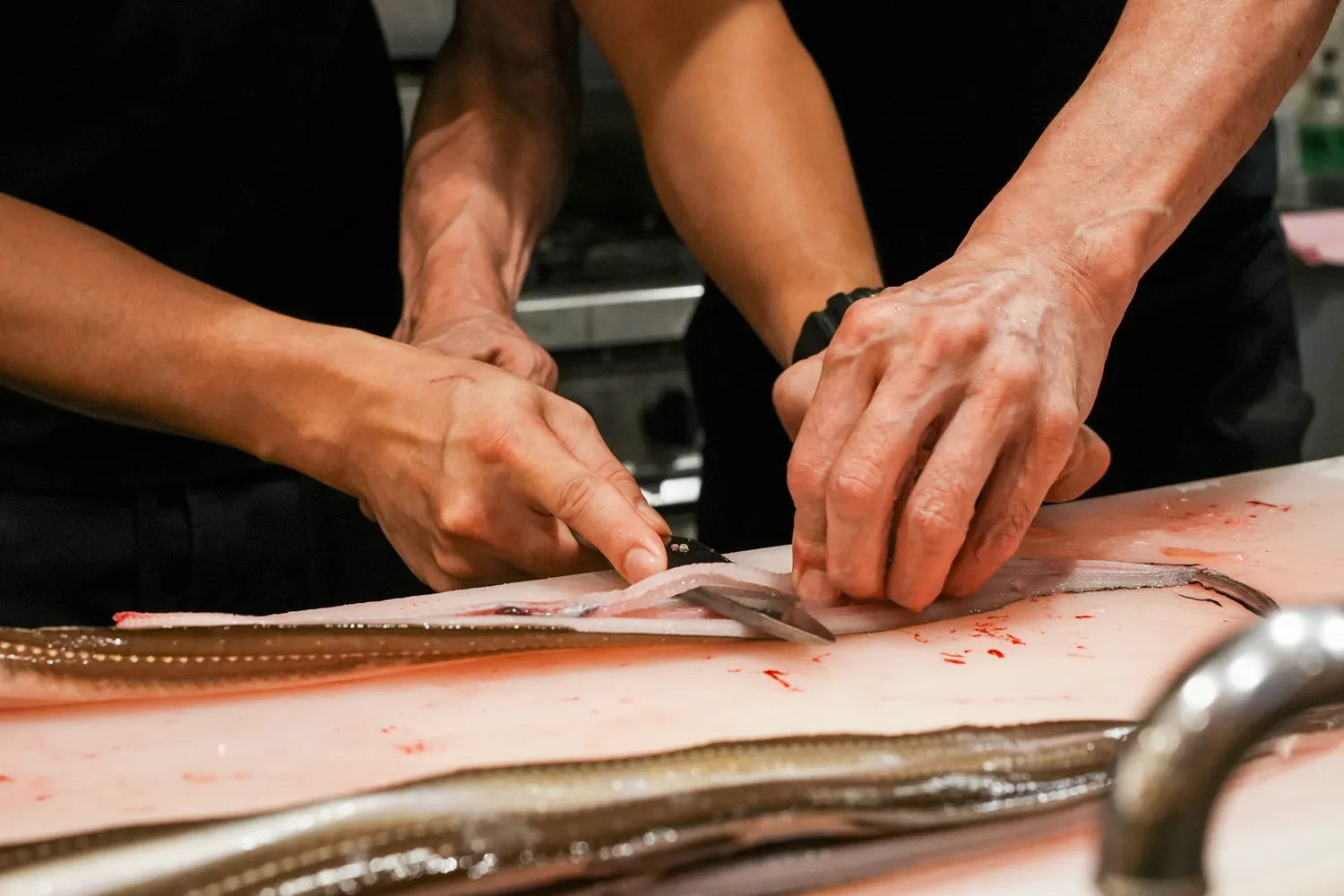
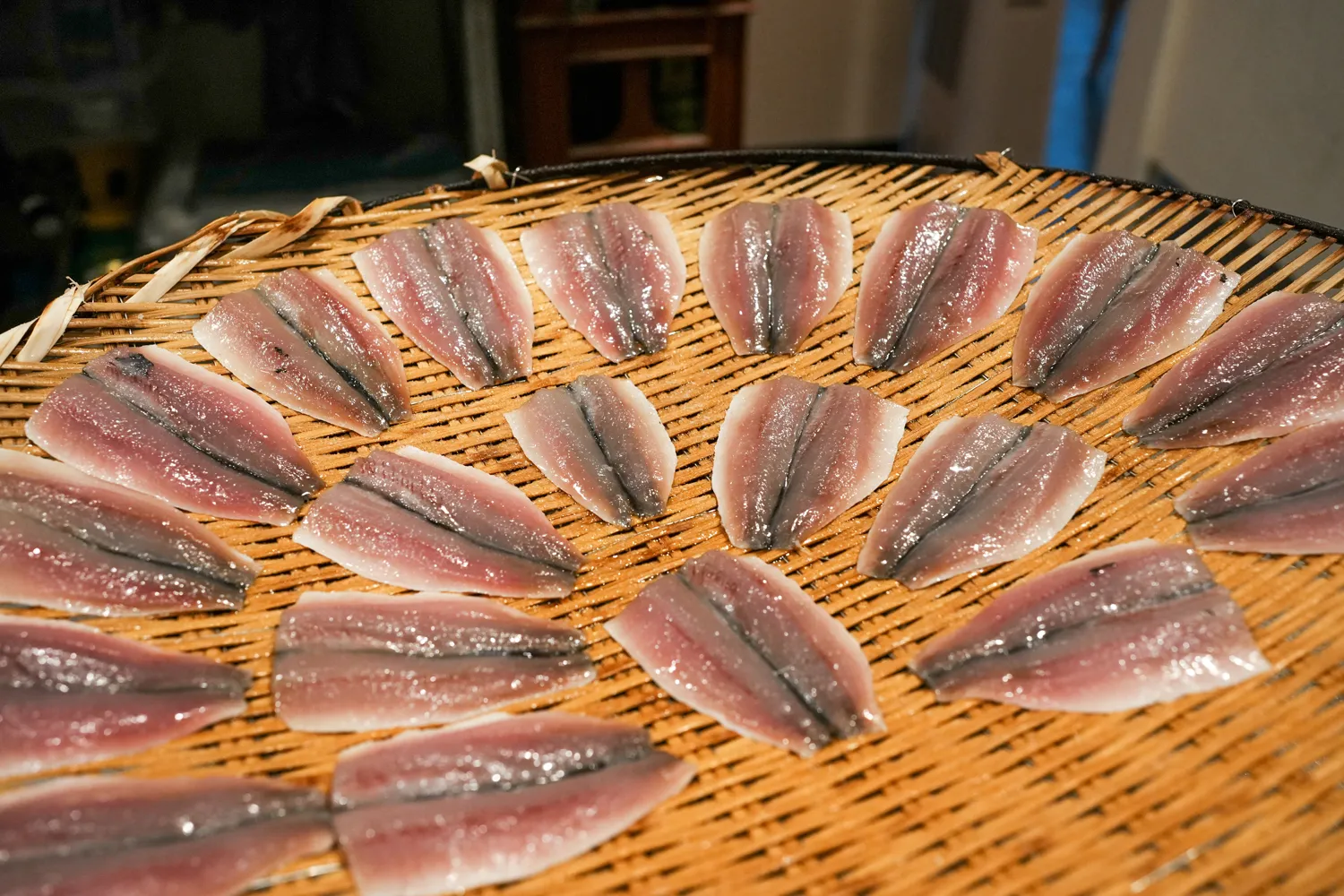
Next on the agenda was the salting and vinegar treatment of filleted mackerels. A crucial aspect of this process is applying the right amount of salt. The student also learned the proper technique for sprinkling salt over the mackerels. After that, he ventured into the task of cutting and trimming Japanese conger eels. This is a highly specialized skill, as it can be extremely challenging for those without expertise. The student learned about the fish’s bone structure and the correct angle for using a kitchen knife. Removing the gills proved to be a bit of a challenge, but he gained valuable experience in cutting and preparing Japanese conger eels. The instructors praised his hard work and excellent performance.

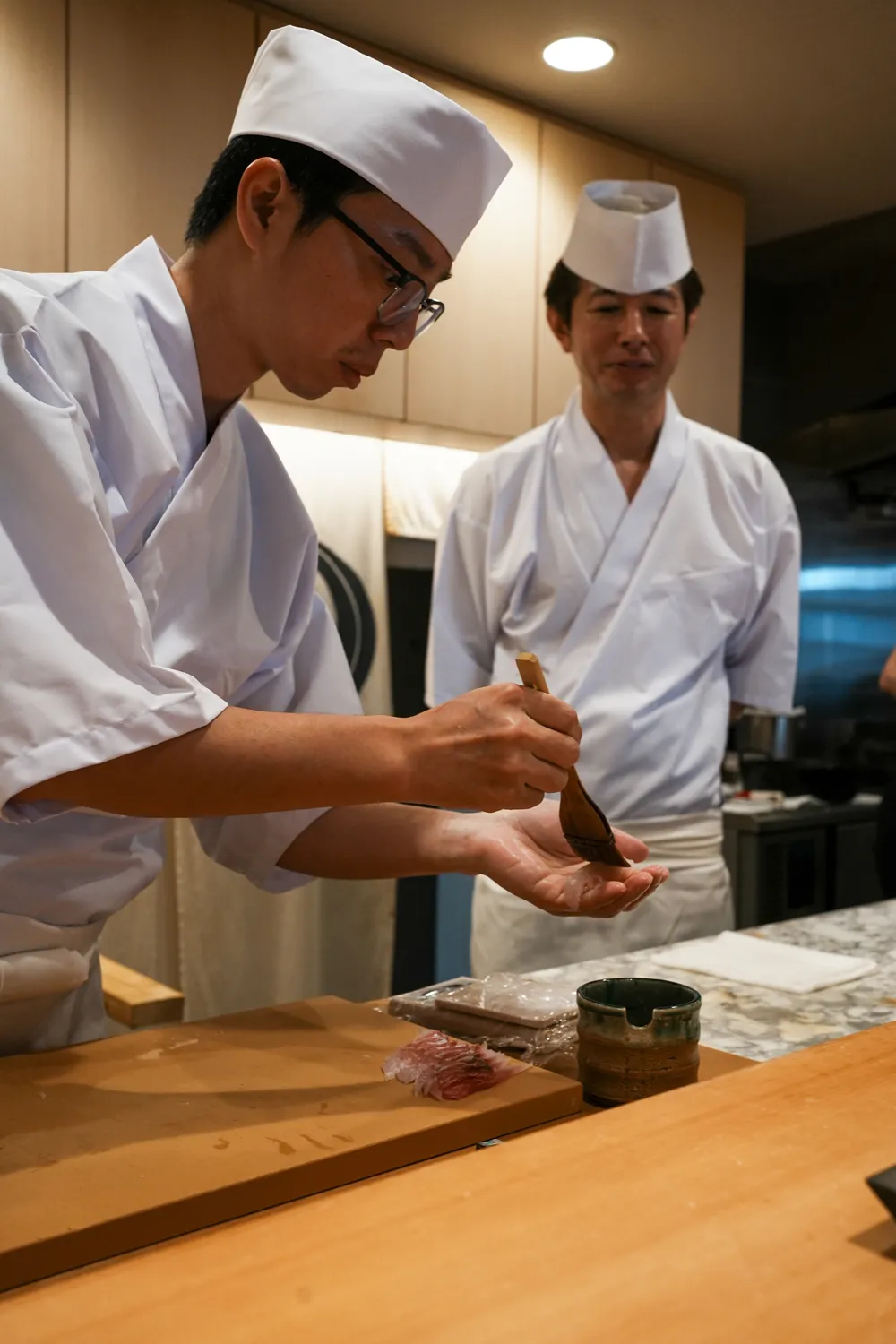
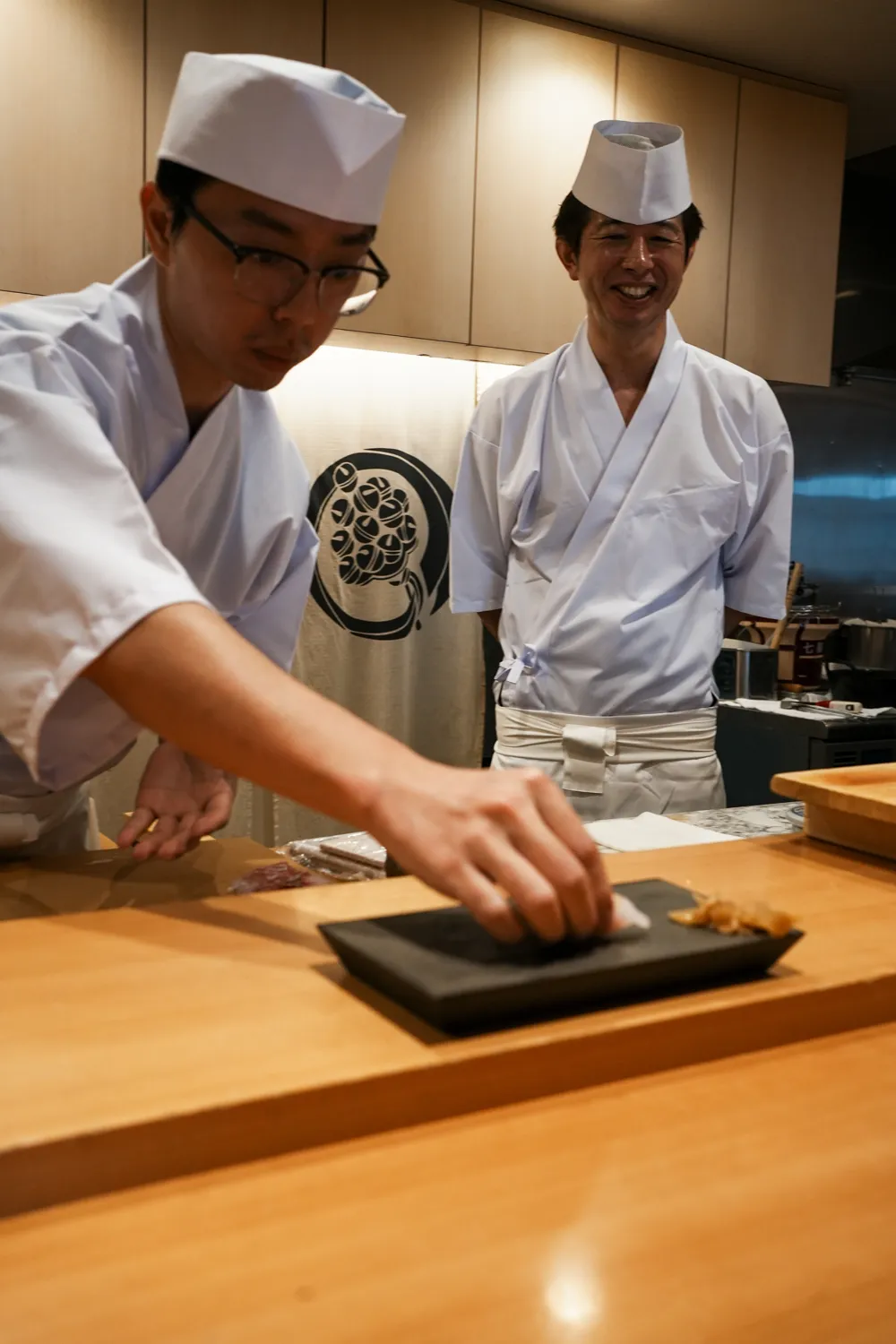
The final stage involved the meticulous preparation and serving of nigiri sushi to a customer, putting his heart and soul into each roll. Although he initially felt a bit clumsy in his movements, he quickly mastered the art of crafting sushi with toppings and performed admirably. The instructor beamed with delight and satisfaction as they witnessed the student’s remarkable improvement.
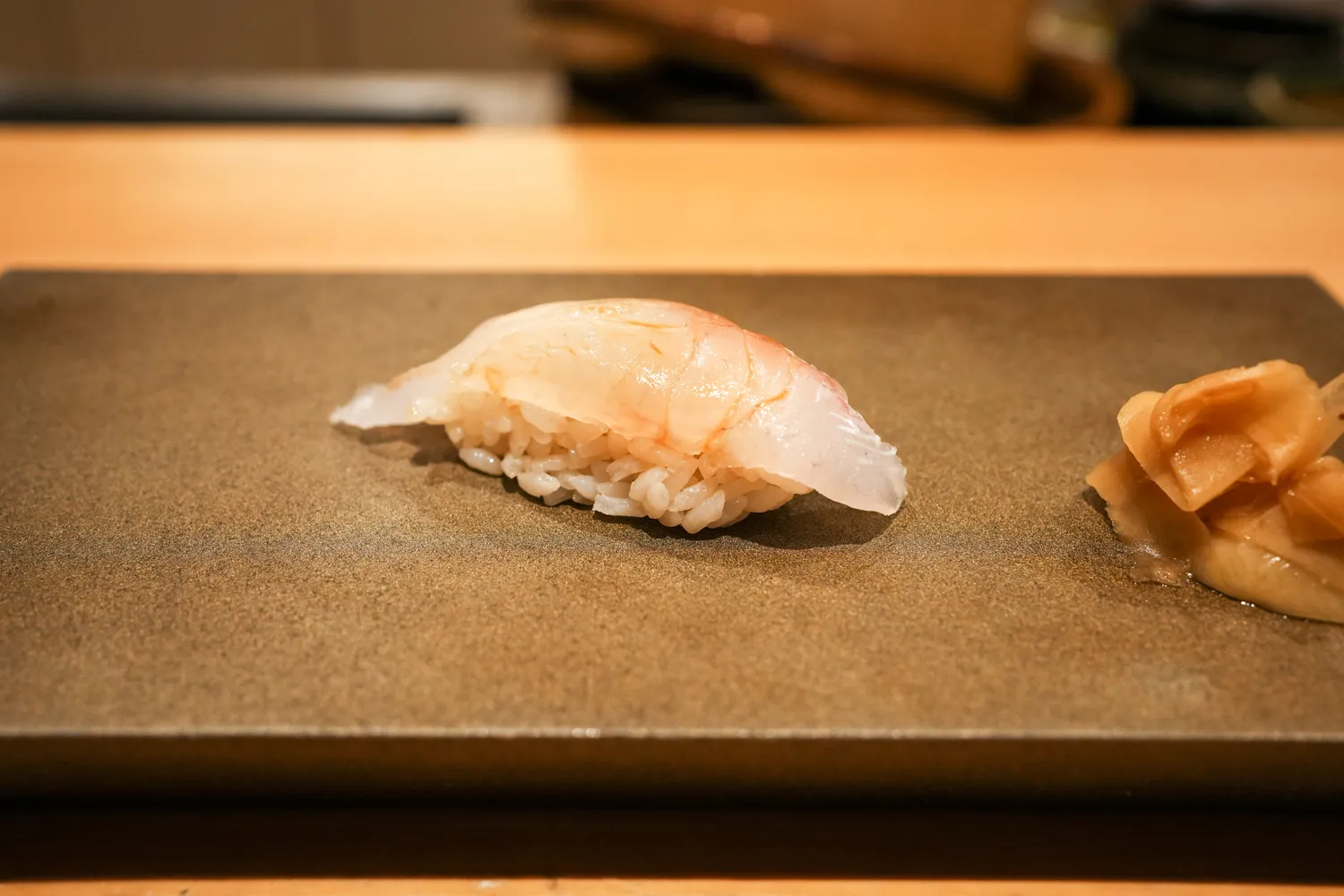
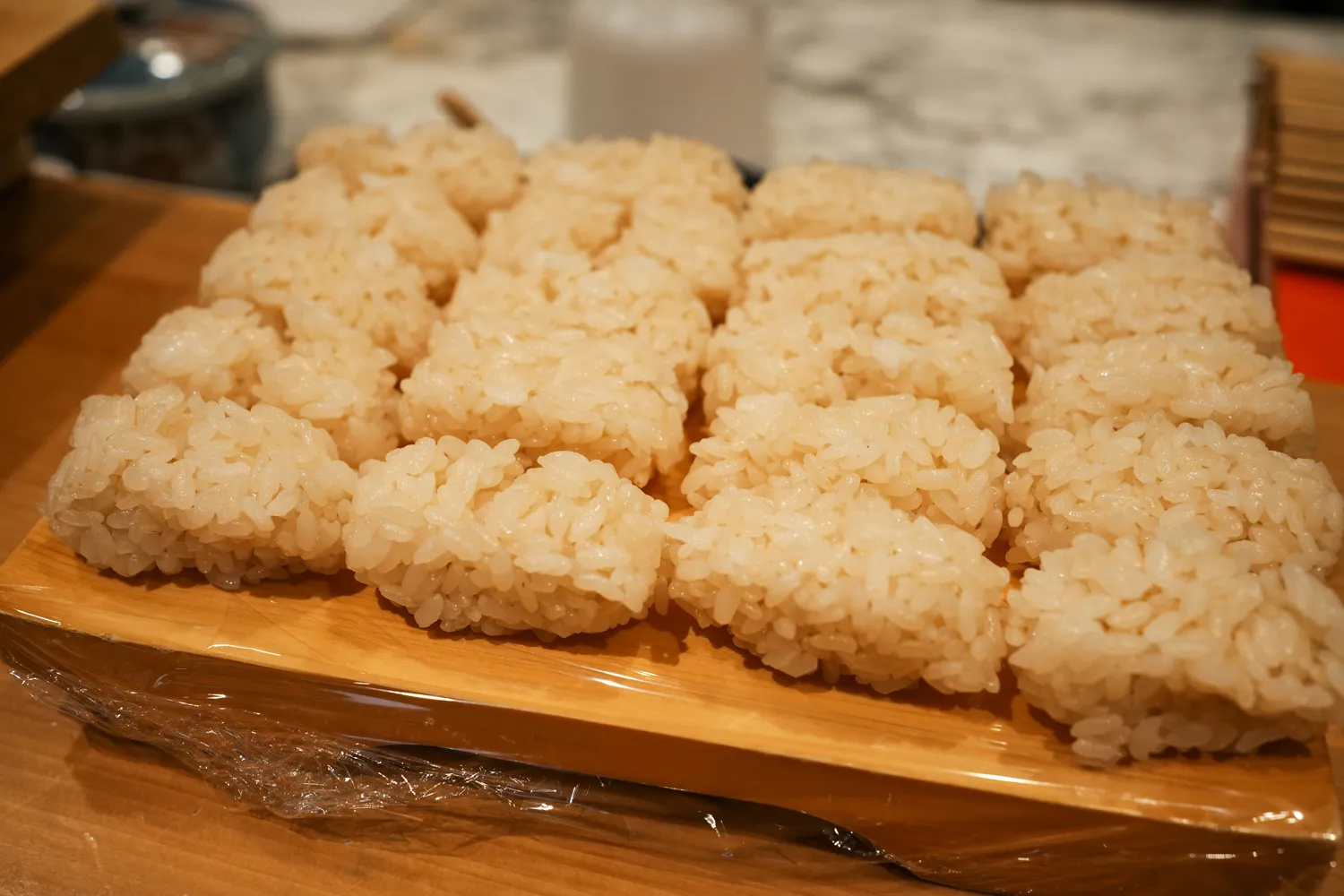
Over a span of just five days, the student had numerous opportunities to practice cutting and filleting fish, crafting a variety of sushi, and gaining comprehensive experience in the art of sushi making.
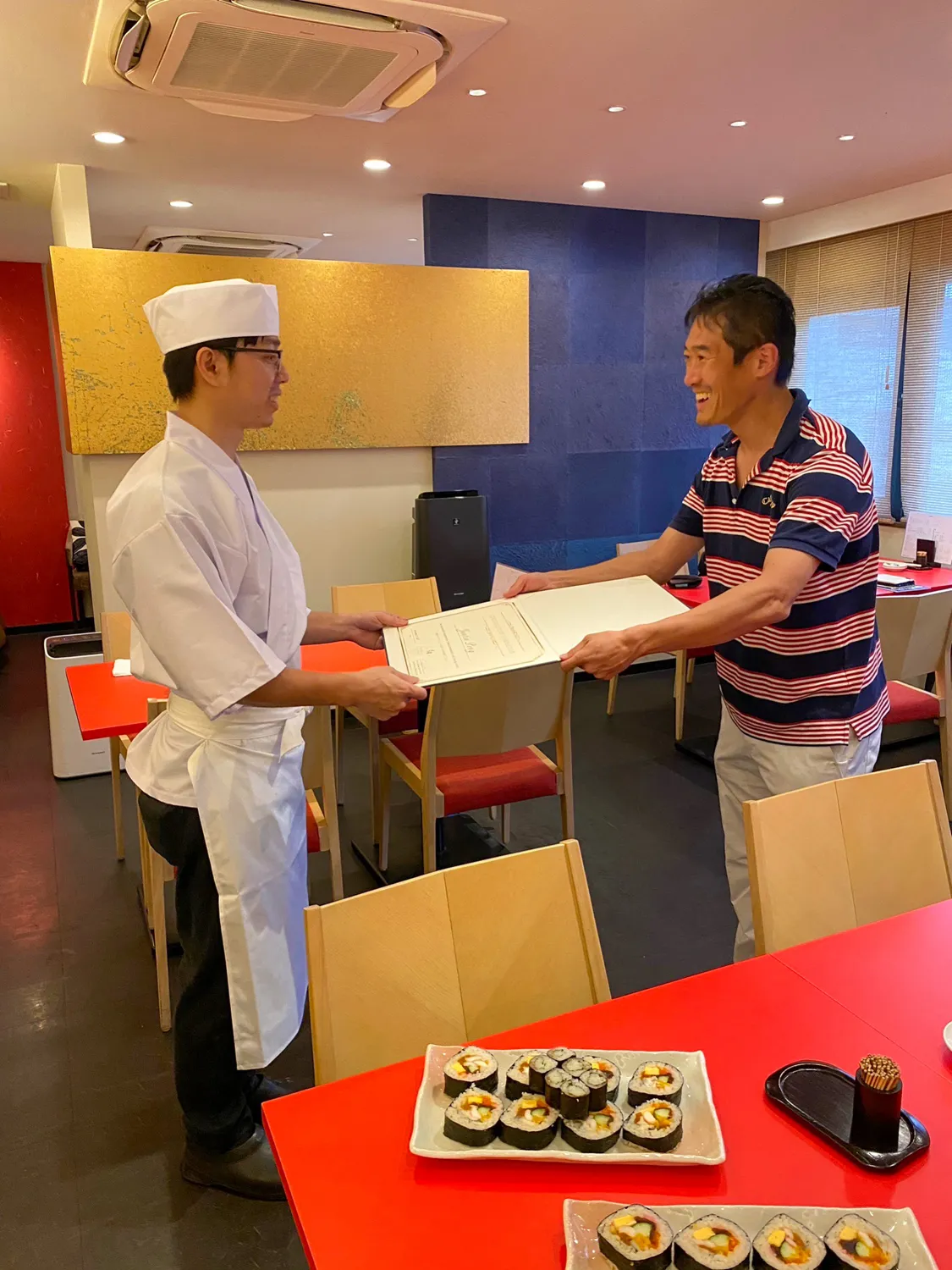
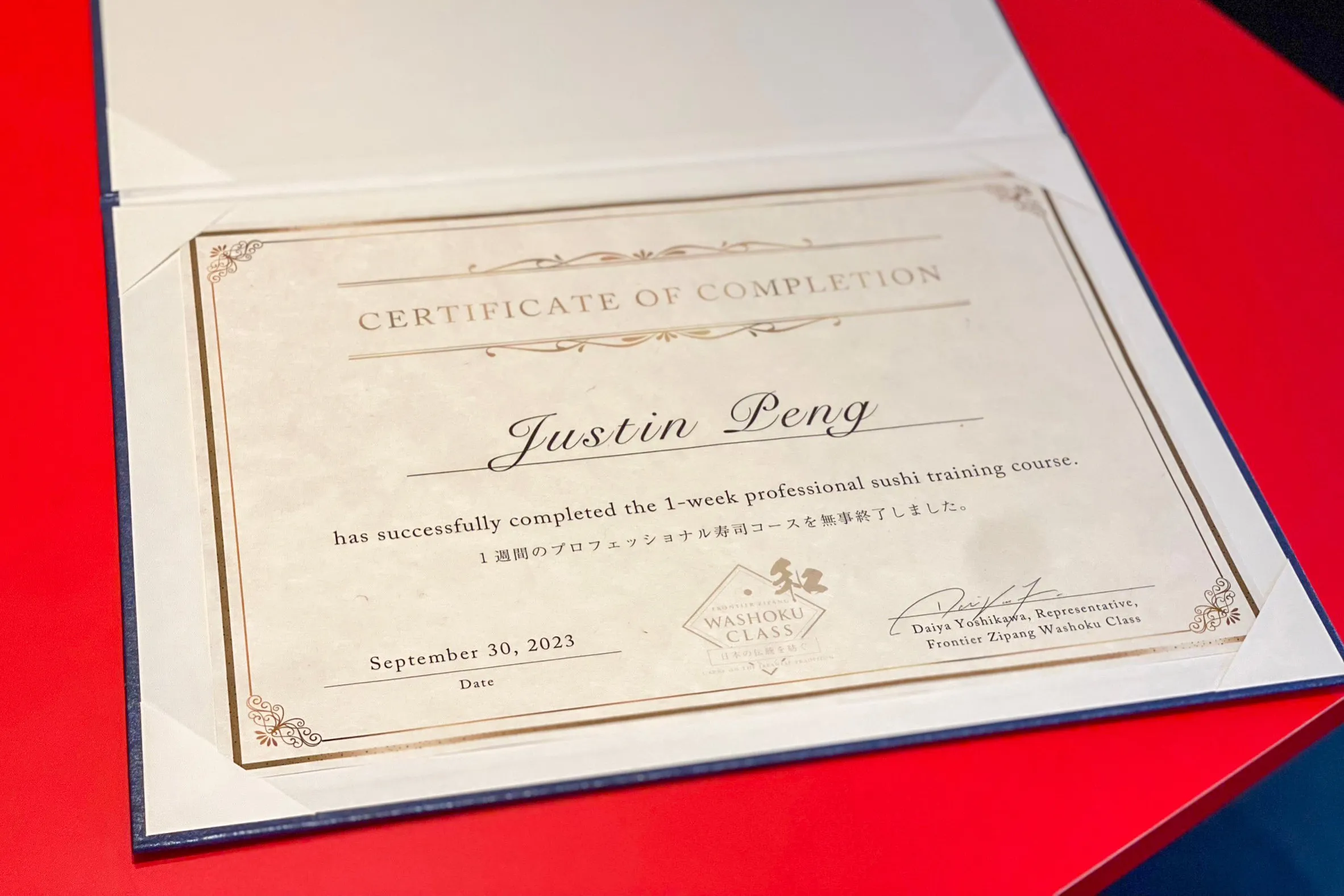
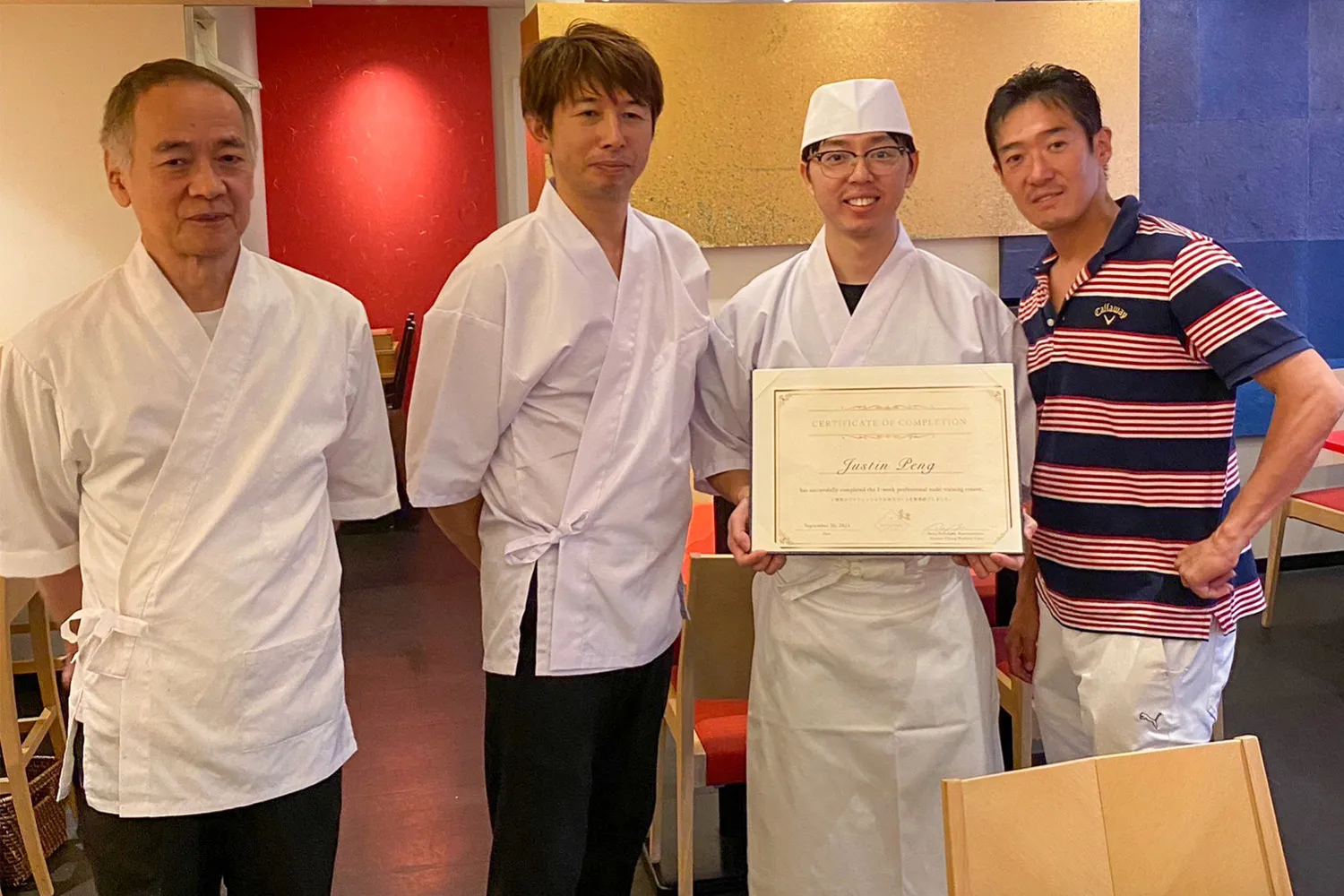
Time has a way of slipping through our fingers, and before we knew it, the 5-day course had come to a close. We were deeply impressed by the student’s dedication and enthusiasm. Although he had to return to his country because of his business, he expressed a desire to stay longer, perhaps even for an entire year, to apprentice himself and perfect his sushi-making skills at the sushi restaurant. His words filled us with joy and optimism. We have every confidence that he will continue to practice and hone the techniques he acquired in our lessons, further advancing his skills. We eagerly anticipate the opportunity to see him again, witnessing his continued growth and savoring the sushi he creates. Thank you very much for choosing Frontier Zipang Washoku Class and allowing us to be a part of your culinary journey!
